The Trekkers usually go to the Bighorn Mountains each summer. But this particular year the West had a VERY snowy and wet spring/summer (GREAT for avoiding wildfires, not so great for road conditions or mosquitoes). When we were making reservations all the roads/places we enjoy visiting in the Bighorns were closed due to mud and we figured the skeeters would be ATROCIOUS, so we thought why not try out the Medicine Bow Mountains (the Snowys) in south-central Wyoming instead?
Where are the Medicine Bows?
The Medicine Bows are a small area of mountains that run from north-central Colorado (near Rocky Mountain National Park) into south-central Wyoming (near Laramie).
The Wyoming portion is what most people think of as the Medicine Bows. Here they are divided into three main areas: the Sierra Madres to the west, the Snowy Range (the Snowys) in the middle, and the Laramie Peak area to the east. Our trip focused on the Snowys…
The Snowy Range reminded us of Colorado!
—This area felt a lot like that around Walden, Colorado, and State Forest State Park which makes sense as it’s the same National Forest. Also, less than 100 miles separates the two…
—There was still snow on some of the peaks. There is a reason they call this area “the Snowys”! 😉 Fortunately, the bugs weren’t too bad though!
–We also enjoyed the “singing” hummingbirds that we’ve noticed in Colorado before…
Ryan Park Campground
There are multiple Forest Service campgrounds in the Snowy Range. We chose Ryan Park as it was lower than many of the other campgrounds in the Snowys (at “only” around 8,000 feet rather than 10,000 feet.) This proved an obvious benefit as it was slightly warmer (especially at night) and may have had less rain (but was still FAR cooler than the lower elevations of the surrounding plains!)
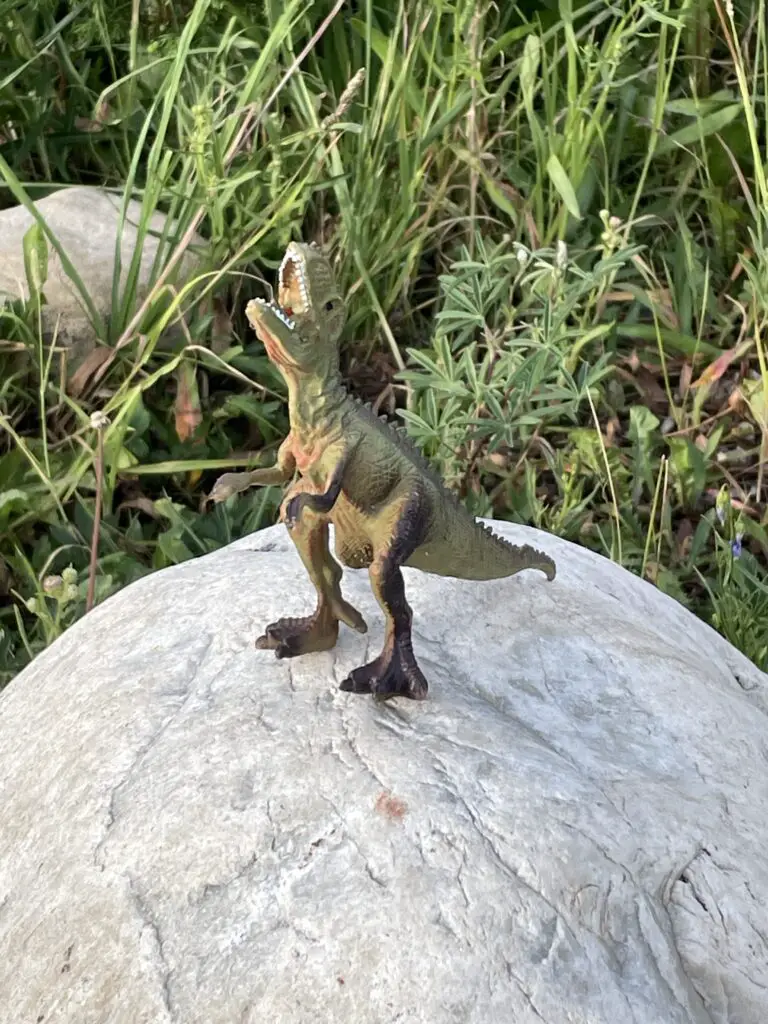
To be clear, Ryan Park is still a Forest Service campground so it is rustic…
I’ve mentioned before that we REALLY enjoy US Forest Service campgrounds as they usually offer more secluded campsites and more rustic locations. Forest Services campgrounds are perfect for tent camping though most can accommodate RVs, as well (at least in some sites). Just be aware of what you’re getting into as most Forest Service campgrounds only offer:
-
-
- potable water–at least in-season
- decent campsites with fire grates and picnic tables (Always check local regulations to see if there are any current fire bans in place!)
- …and that’s about it! 😀 Forest Service campgrounds also usually only offer vault toilets. (And, let’s be honest, a vault toilet is still just a hole in the ground that you pee in 😉 but, the bathrooms at Ryan Park Campground were some of the cleanest and nicest-smelling outhouses we’ve ever been to! 😉)
-
I should do a post sometime about decent vault toilets we’ve visited around the country. Note: Yellowstone National Park and State Forest State Park, in Colorado, sport some of the NASTIEST! 🤥)
There wasn’t much shade at the campground. Sadly, this area has been hit BADLY by beetle kill in recent years. The Forest Service has done a good job of cleaning up all the dead trees near the Snowy Range campgrounds which is incredibly important for safety, it just means most of them are fairly bare of trees now. 😕 This does equate to lovely views of the night sky and sunsets/sunrises though!
Hiking in the Snowy Range
We found some great hiking trails in the Snowys!
Medicine Bow Peak Trail
We hiked from the Sugarloaf trailhead near Lewis Lake. This is one of the shortest routes to Medicine Bow Peak, though we decided not to hike all the way to the peak–it was less than a mile from where we stopped but it was incredibly steep, rocky, loose, potentially slippy, and exposed on a shelf-like trail. (Thunderstorms were also forecast for the afternoon and we didn’t want to get caught out in such an exposed area.)
In addition to the Sugarloaf Trailhead, there are multiple trailheads you can use to access Medicine Bow Peak. The longest (but relatively easiest) is from Lake Marie. You can also access the trail from Mirror Lake and Brooklyn Lake, though these routes require a longer trek and combining multiple trails.
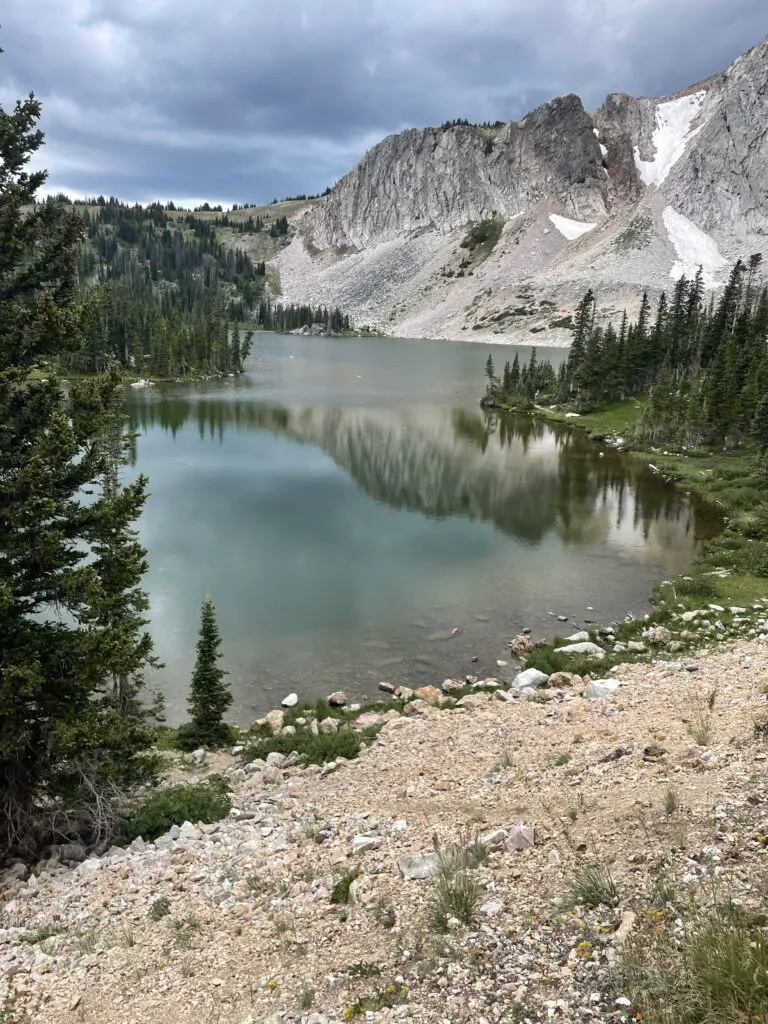
Is Medicine Bow Peak Trail Hard?
The trail from Lewis Lake is only about three miles long in total length but don’t let that fool you. It gains more than 1000 feet in elevation during the hike up. It’s also INCREDIBLY rocky and exposed, not to mention HIGH. (You start at over 10,000 feet and end up at almost 12,000 feet.)
Also, you’re above the tree line for the entire route so there is NO SHADE! This can also cause the trail to become INCREDIBLY slick in the rain, mist or snow–and note, snow and ice lasts LATE into the season and comes EARLY in the High Country. It can snow at any time of the year and thanks to monsoonal moisture, rain was forecast for our entire trip (it rained on us every day). Also, there is absolutely NO PROTECTION from lightning up here during the violent summer thunderstorms that frequently occur.
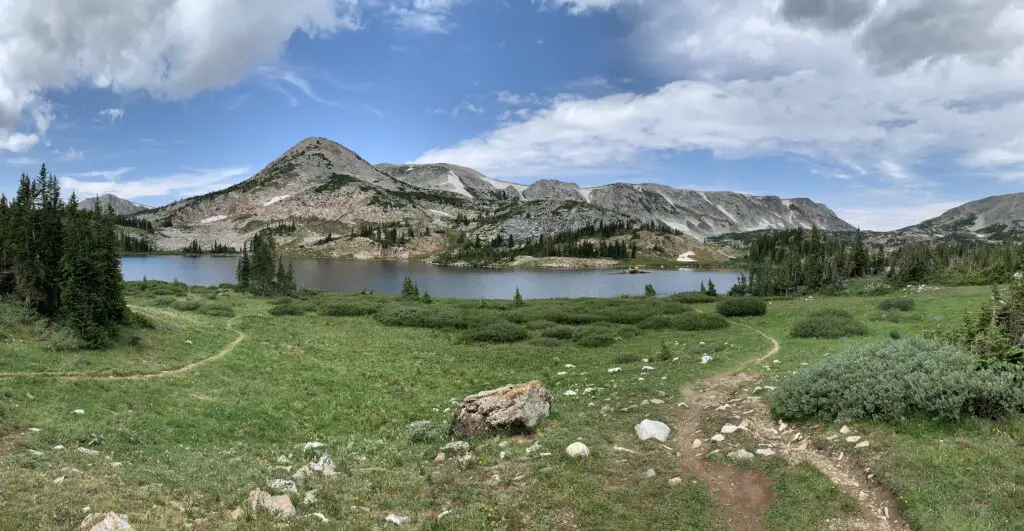
We chose to stop at a saddle where the HARD part of the trail starts. Here it also meets up with the other end of the Medicine Bow trail that comes up from Lake Marie. This trail is LOVELY though! You hike along the spine of the Snowy Range getting amazing views of the local lakes, the nearby mountains, and the surrounding landscape. At one point we could make out eight separate, small lakes!
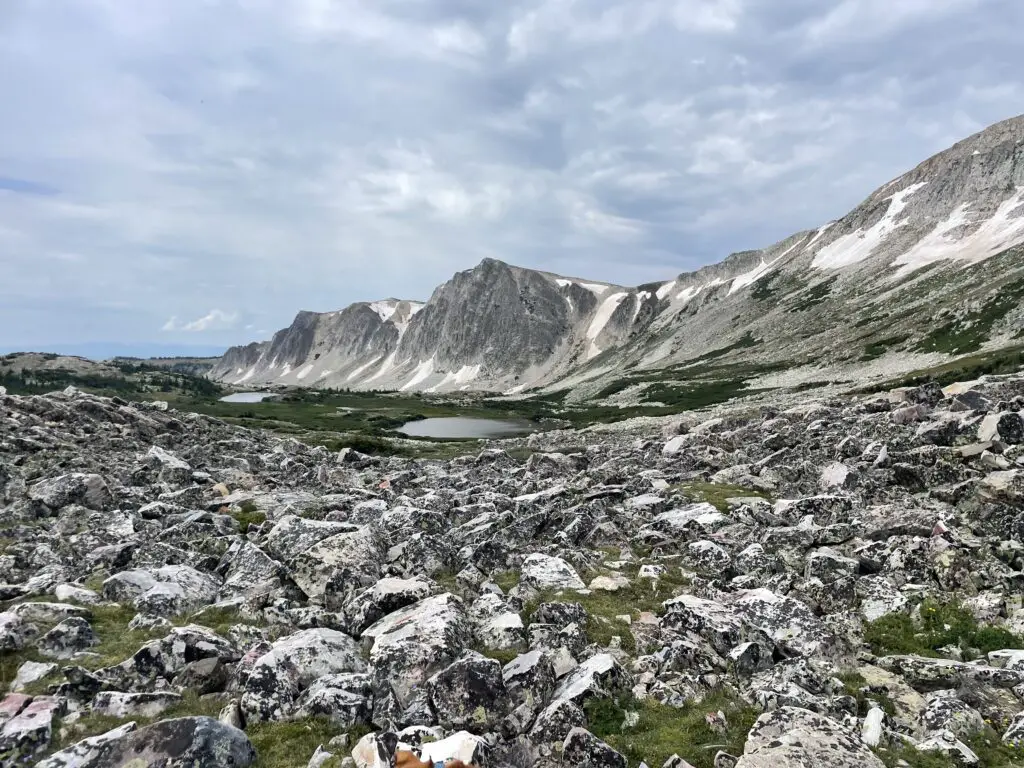
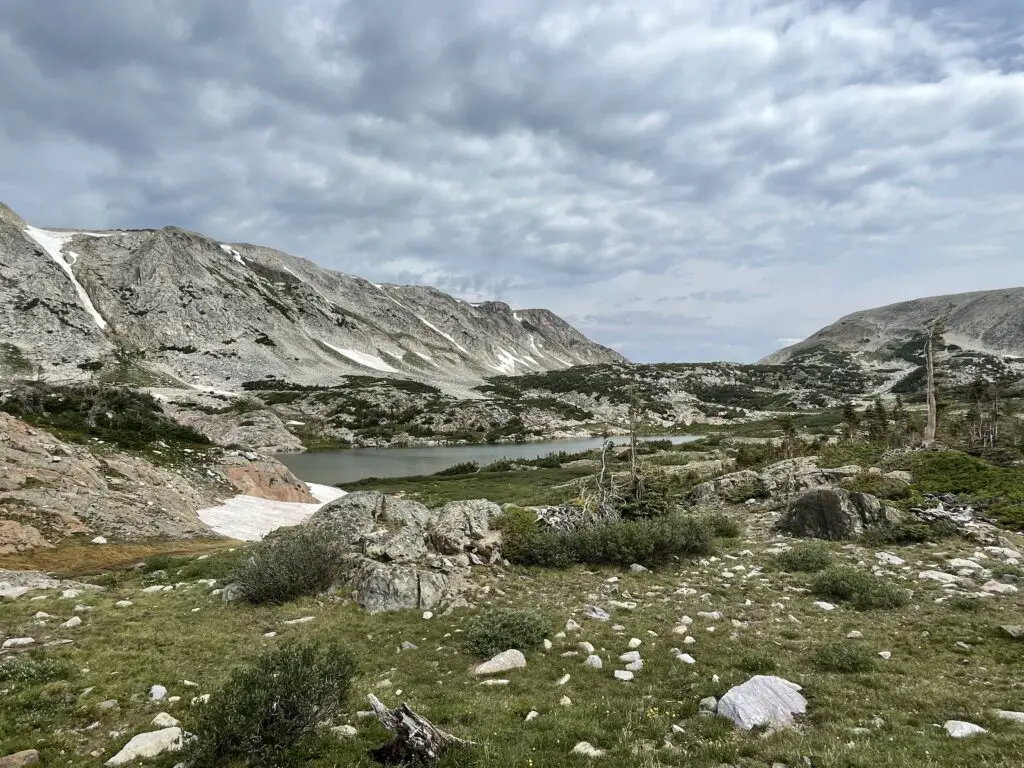
I would rate the early portion of the trail (before the saddle) as moderate for sure. It isn’t overly difficult or long–we saw several families with young children. It is a bit rocky and there is some scrambling required in a few, short areas.
The most difficult part about this trail is just that it’s incredibly exposed and high (as I said before, entirely over 10,000 feet). There are no steep drop-offs directly from the trail though, so as long as you are a fairly capable hiker, you take it slow and you respect the conditions, you should do okay.
Though we didn’t have to navigate any actual snow in early August, there were still some snowfields along the trail. I can’t speak for how normal this is due to all the snow the West got that year (though they must call this area the Snowys for a reason!)
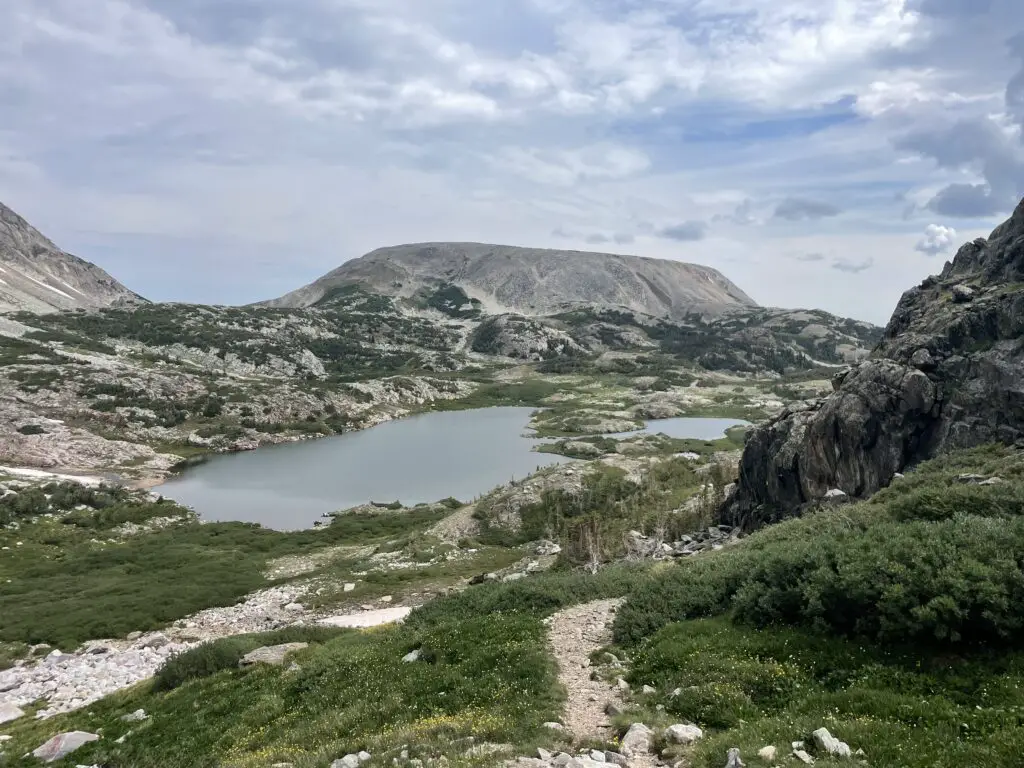
Lost Glacier Lakes Trail to Lost Lake
Lost Glacier Lakes trailhead is found on the east side of the Snowys. It starts from Brooklyn Lake and heads west. The route to Lost Lake is about six miles in total length (out and back).
From Lost Lake, the trail continues on to where it meets up with the Medicine Bow Peak trail at Lewis Lake and the Sugarloaf Trailhead (see above). The entire Lost Glacier Lakes Trail from Brooklyn Lake to Lewis Lake is a little over eight miles (in one direction).

Lost Lake was SO BEAUTIFUL! It reminded me of Lake Helen in the Bighorns!
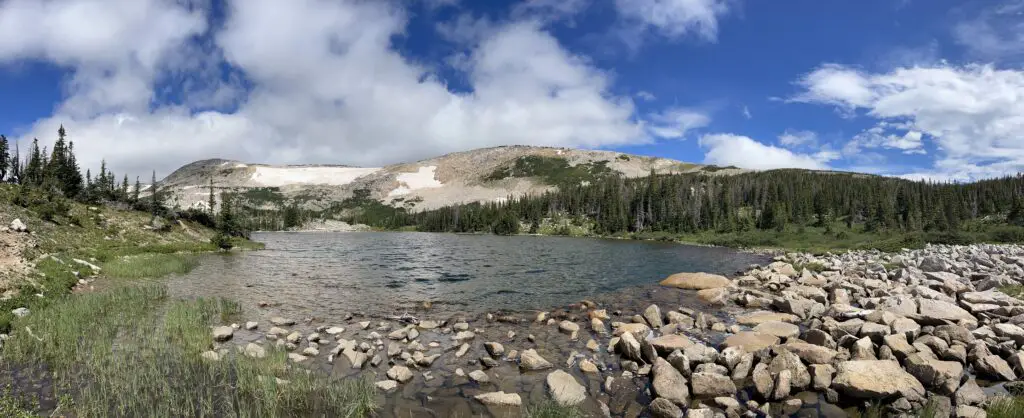
Is Lost Lakes Trail Hard?
The Lost Glacier Lake Trail is a lot of fun! It offers very little elevation gain and is mostly a wide, dirt path throughout. Be watchful for the occasional tree root and rock, but there is very little scrambling required. This is a kid-friendly trail! (Just remember the entire trail is still above 8,000 feet!) This trail is also below tree line so there is a lot more shade (and it’s much less exposed) than what you’ll find on the Medicine Bow Peak Trail.
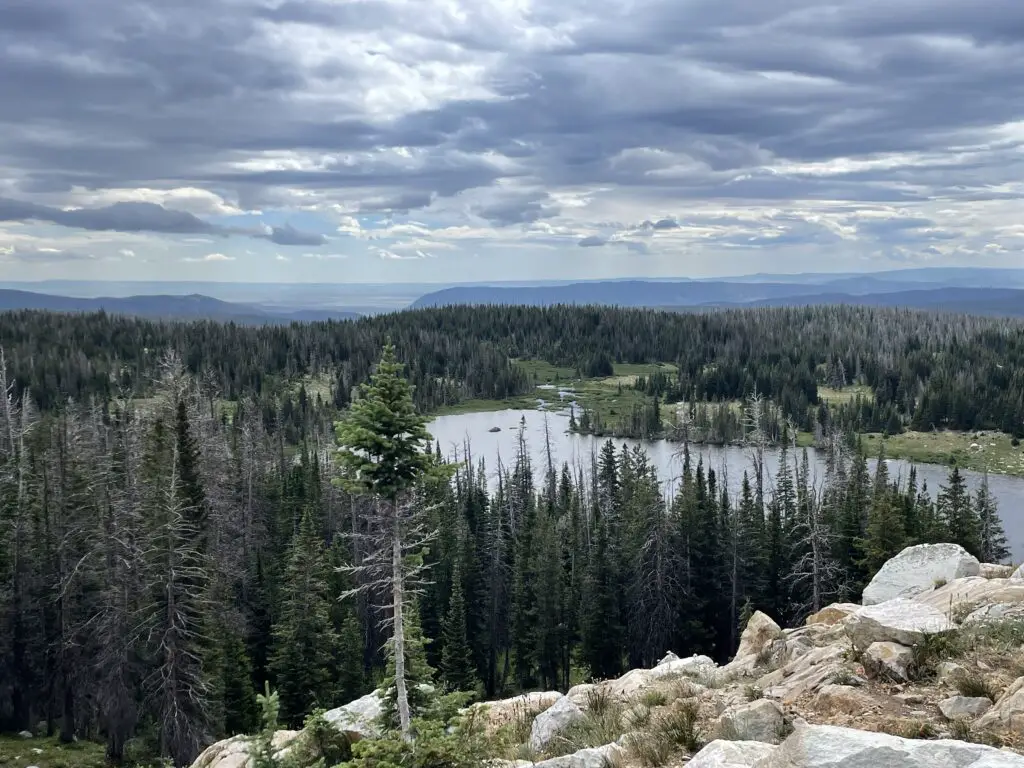
We really enjoyed this trail! It offered nice views of the lower lakes and plains of eastern Wyoming. On clear days you can also spot some of the high peaks of the Rockies down in Colorado.
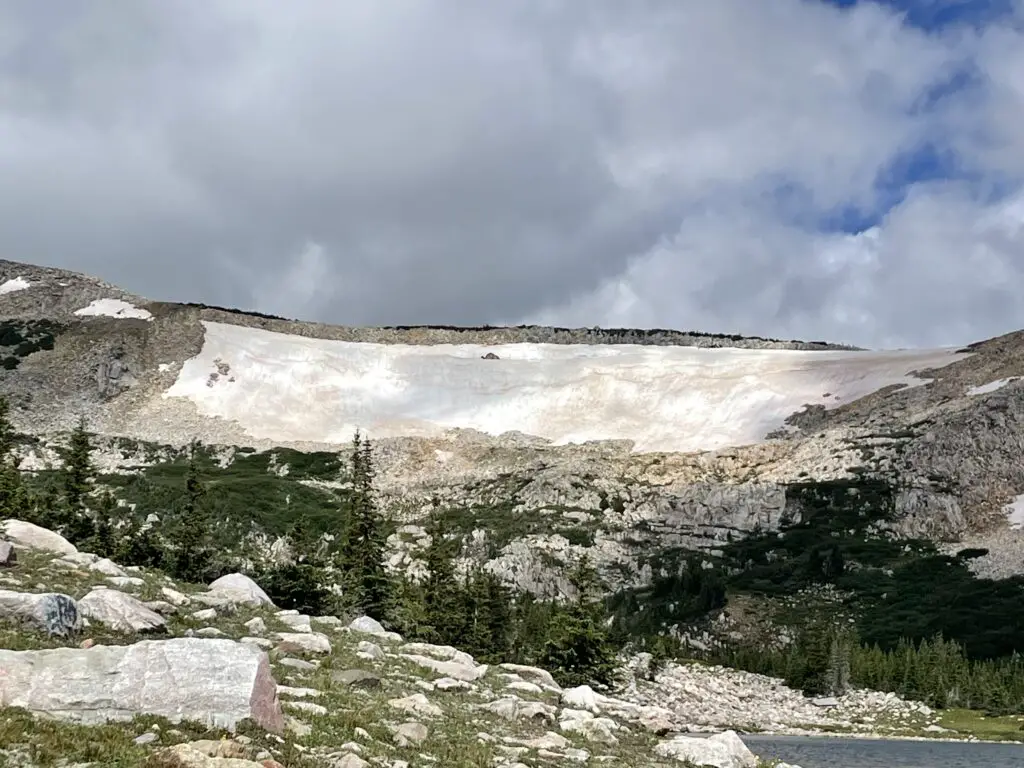
Below are some pictures of the wildflowers we saw on the Lost Glacier Lakes Trail. The pictures don’t do the colors justice, of course. The flowers were absolutely BEA-Utiful!
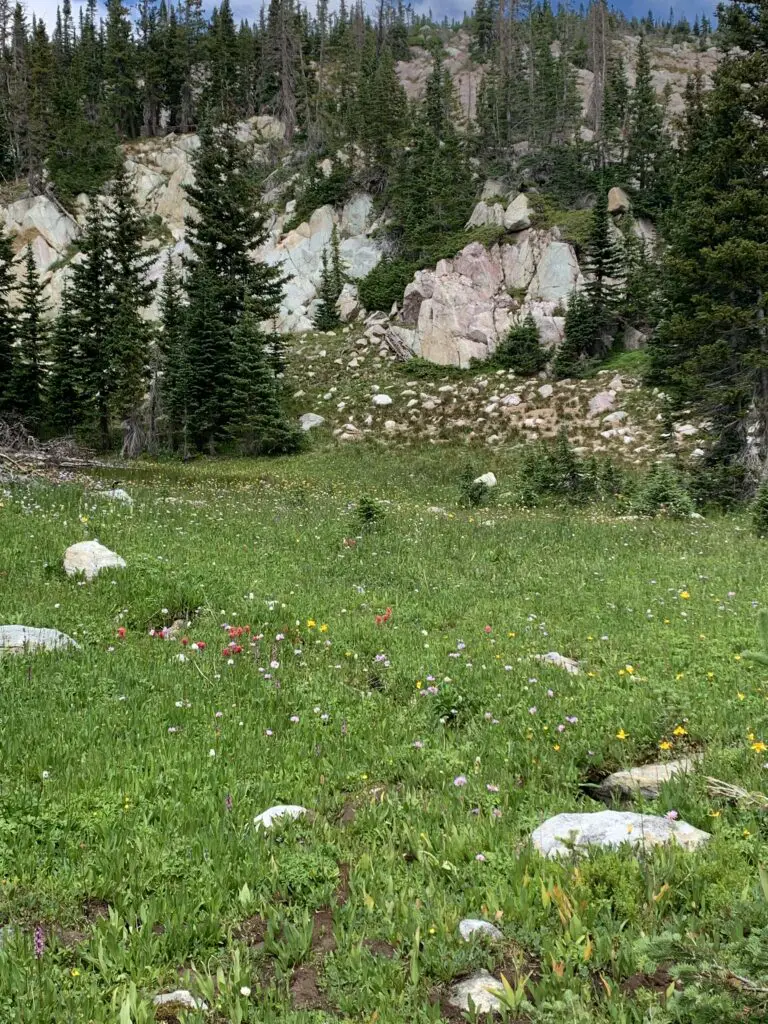
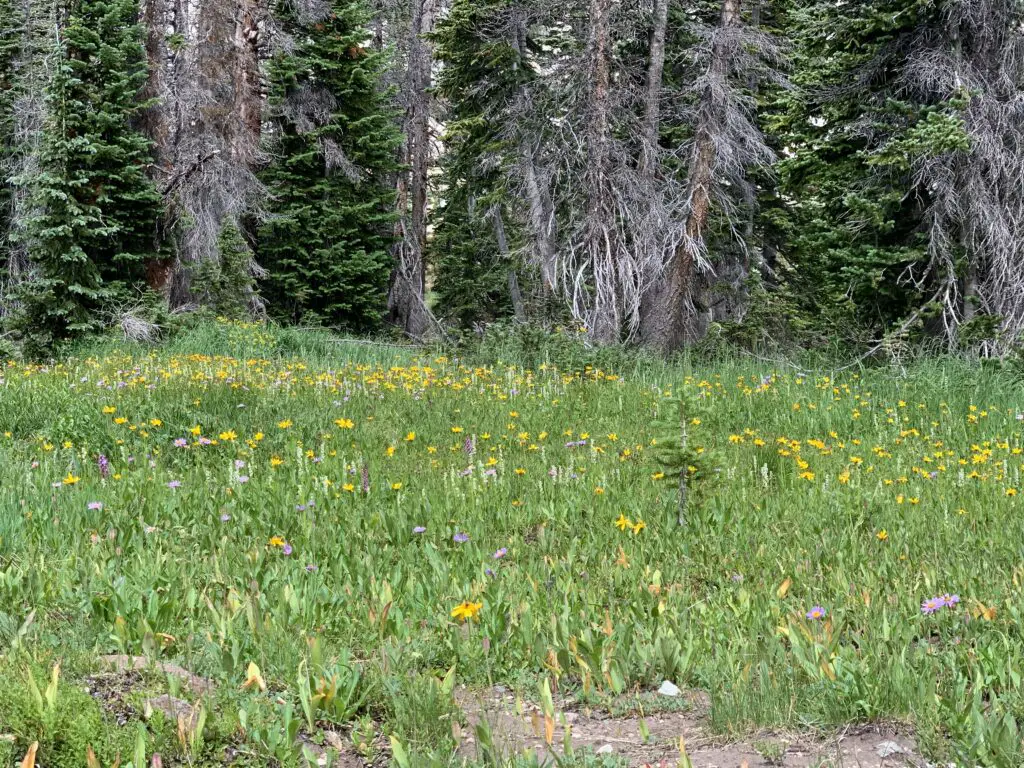
Camping in the rain!
As I mentioned earlier, our trip was at the start of Monsoon Season in that area so it rained every day of the trip. That’s okay though, part of “roughing it” in the wild is dealing with whatever weather Mother Nature decides to throw at you! A few tips on tent camping in the rain…
—If you’re camping with your spouse, marry someone who you can belly-laugh with rather than yell at! 😍
—-Spend money on a NICE tent (I recommend the REI brand) with a rainfly that covers the entire tent and reaches almost to the ground. Our tent stayed completely dry inside even though we got rained on all three days we were out!
—-Make sure nothing important is touching the walls of the tent (clothes, bedding, etc.) I can’t explain it but there is this phenomenon where if the tent is wet outside the water stays outside as long as nothing touches it from the inside. If something does touch it, that thing gets wet and the water seems to start seeping inside the tent.
This is probably some weird phenomenon of physics, but since I’ve never taken a physics class I can’t tell you any more about it. 😇
Scenic Byways!
We also drove several scenic byways in the Snowy Range! (Note: both of these routes are closed in the winter–they’re really only open May through November–and this is weather-dependent).
Snowy Range Scenic Byway
The Snowy Range Scenic Byway is Wyoming Route 130 that travels east-to-west through this portion of the Medicine Bow mountains. It runs from the Encampment/Saratoga areas in the West to Centennial, Wyoming in the East.
There are several nice pullouts along the Byway. Some of our favorites were:
Libby Flats: an open, meadow area in the higher elevations of the Snowys. It offers an observation tower and spectacular views of the surrounding countryside. We also saw a bunch of marmots here!
Lake Marie: a VERY pretty stop on the western side of the Byway. It offers a nice boardwalk and paved walking path that connects to the Mirror Lake picnic area just to the east. Other hiking trails break off from here, as well.
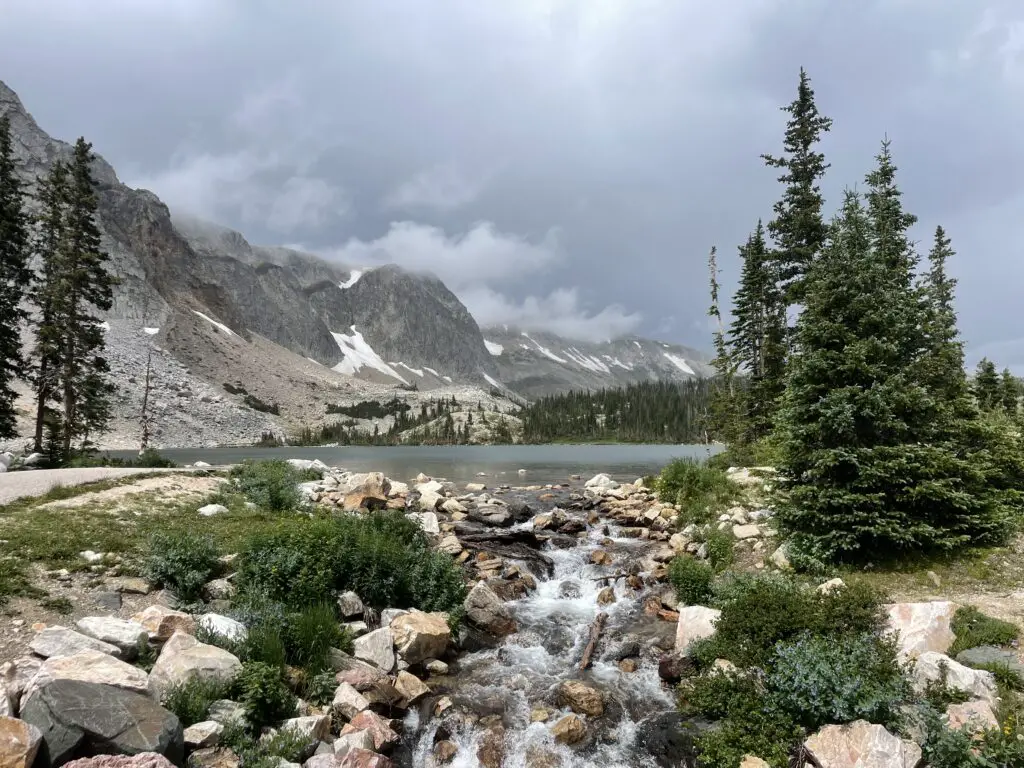
The Continental Divide! –Battle Pass Byway
Battle Pass Byway is Wyoming Route 70 that travels east-to-west through the Sierra Madre portion of the Medicine Bow mountains. It runs from Baggs, Wyoming in the West to Encampment in the East and crosses the Continental Divide.
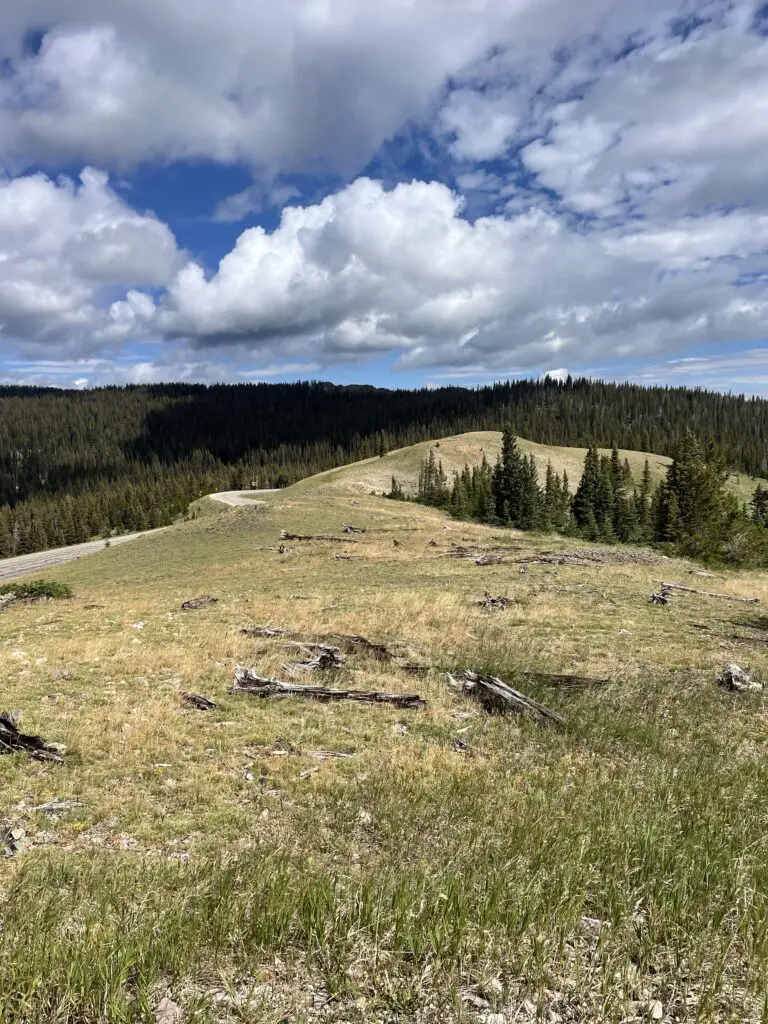
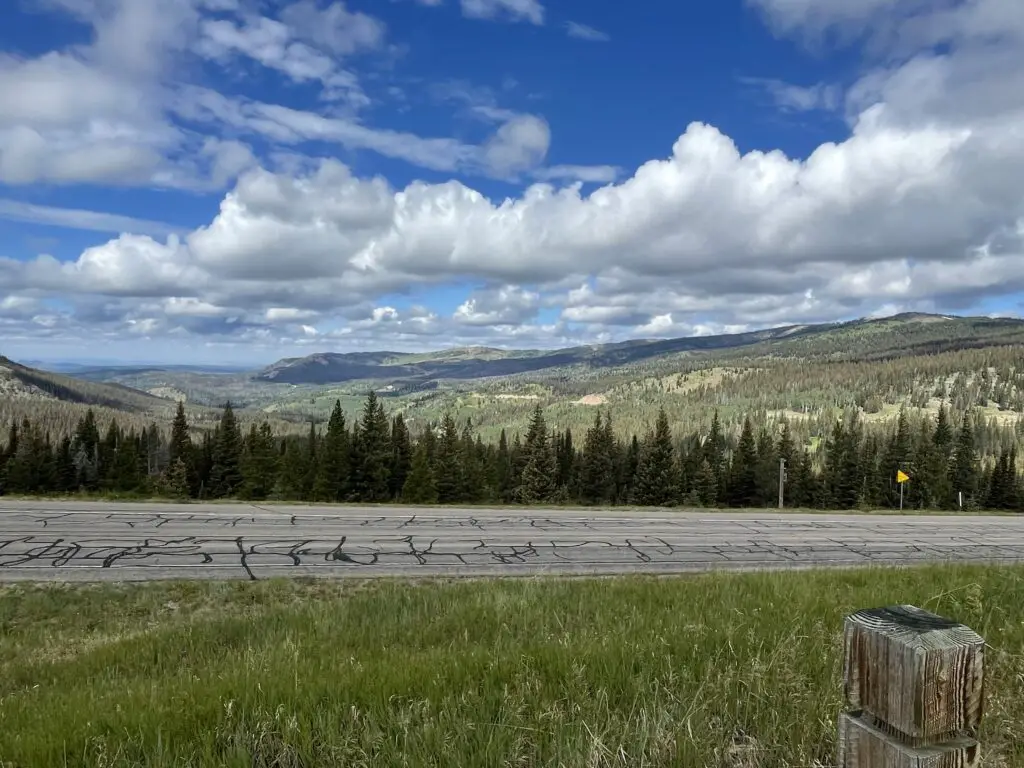
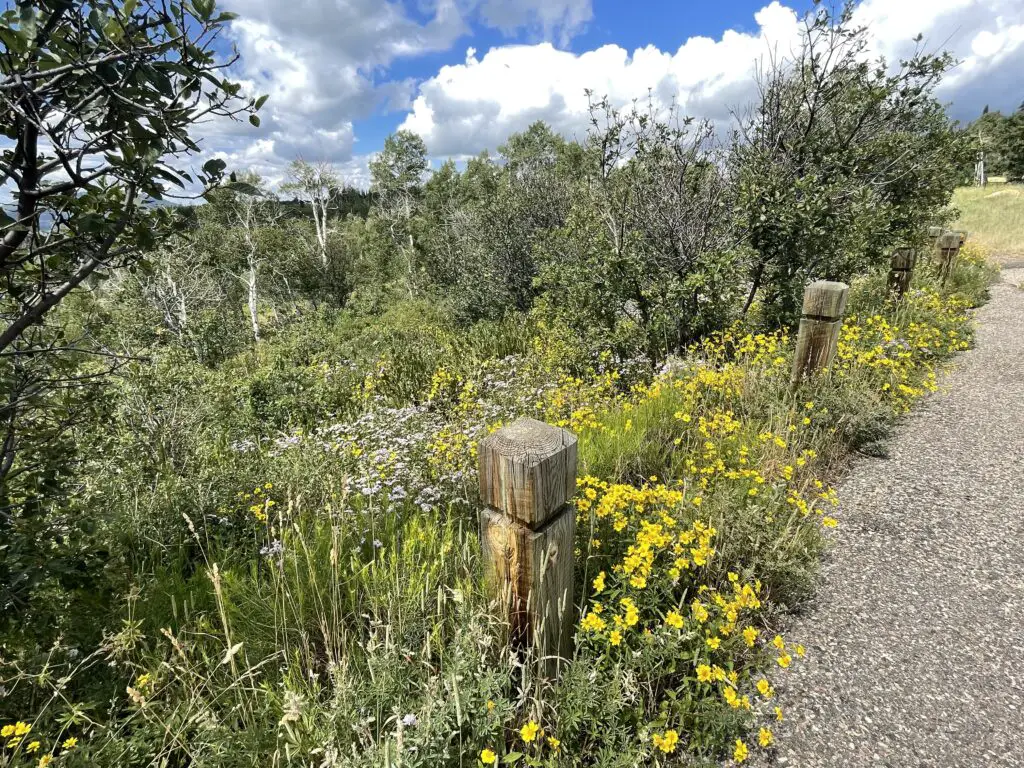
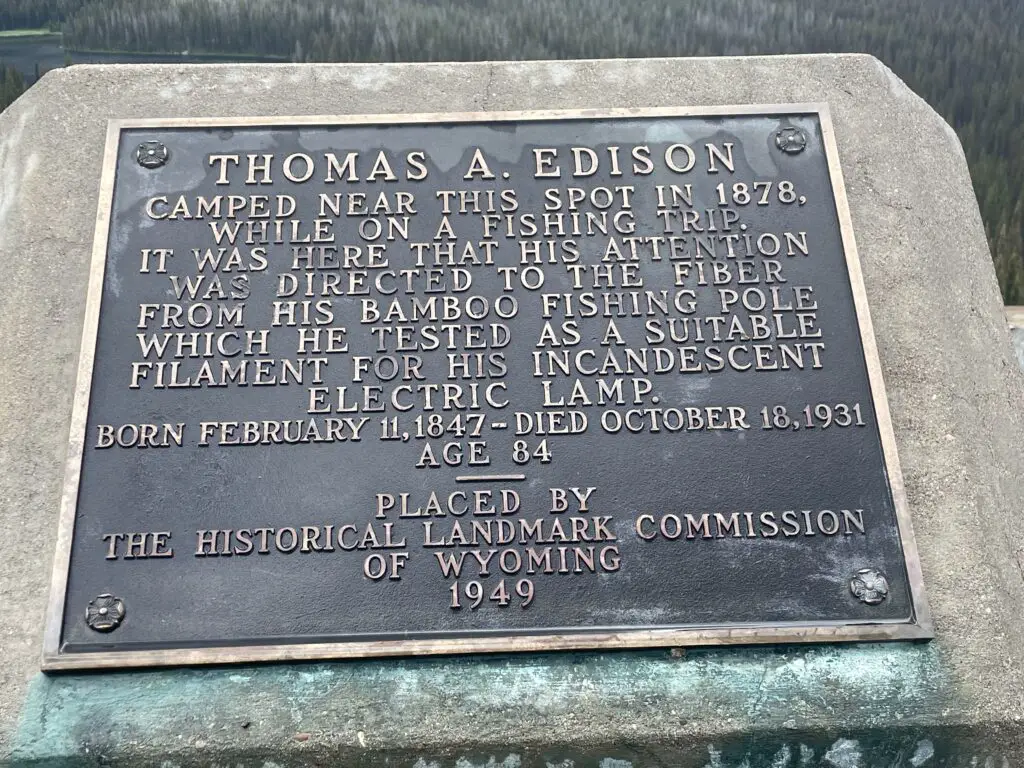
So, if you’re looking for a great place to hike and camp that’s just across the border from the crowded trails in Colorado, check out the Snowys!
Have you spent time in the Snowy Range? Tell me about your experience in the comments!
Did you enjoy this post? Pin it!
Like what you read here today? Please feel free to leave a comment, like or share this post! Add your email at the bottom of the page, or the sidebar to the right, to be notified when a new post is published. By signing up for the email list, you will also receive a free copy of the Tranquil Trekker’s Top 10 Tips of Trekking Do’s and Don’ts! You can also follow the blog on social media by clicking the links below!
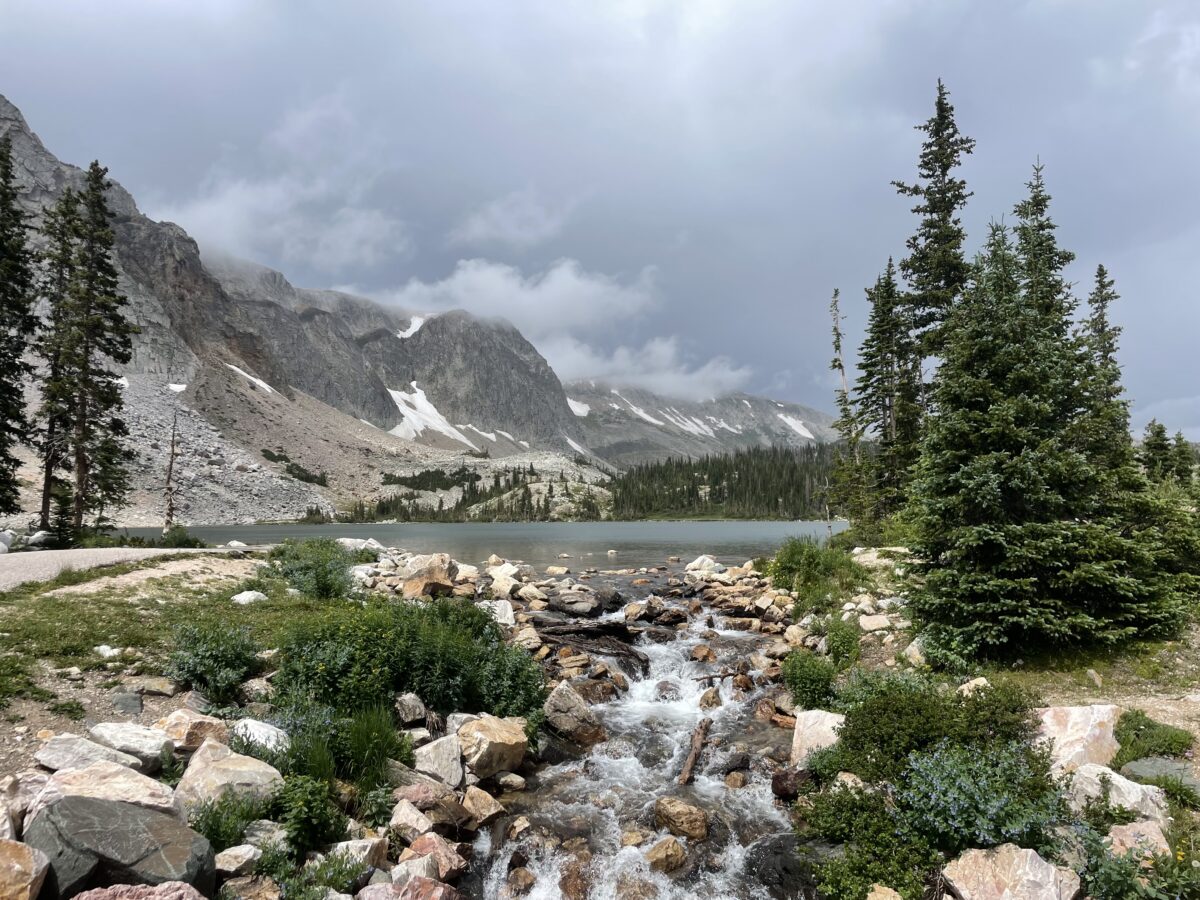
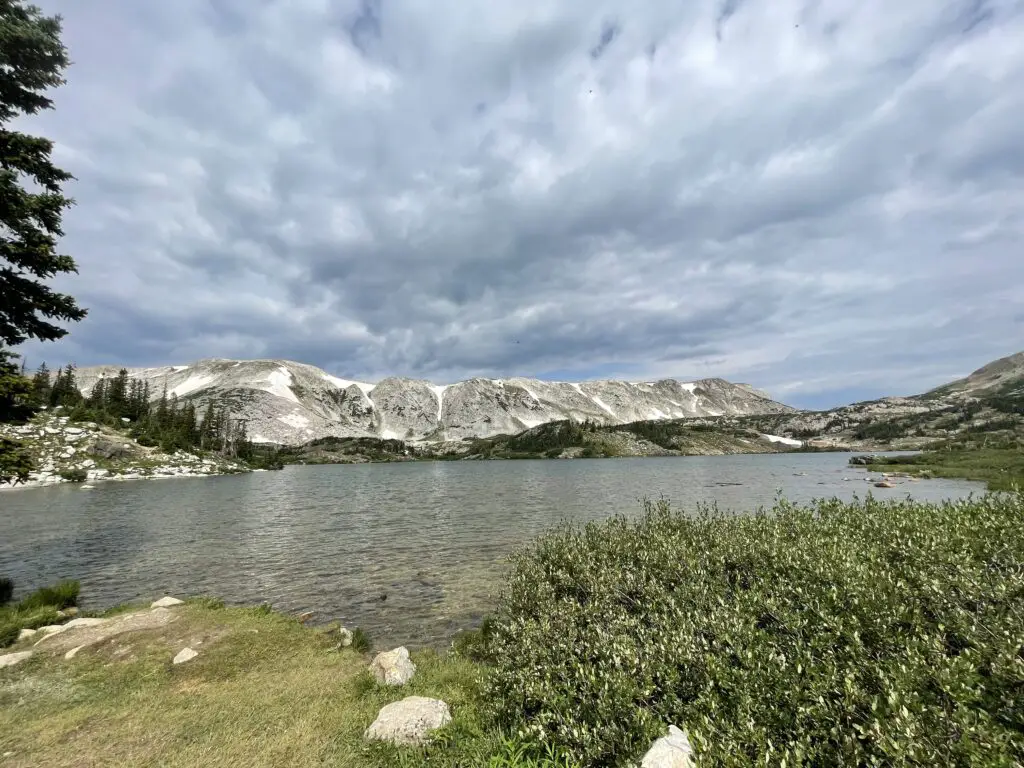
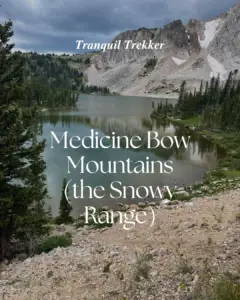
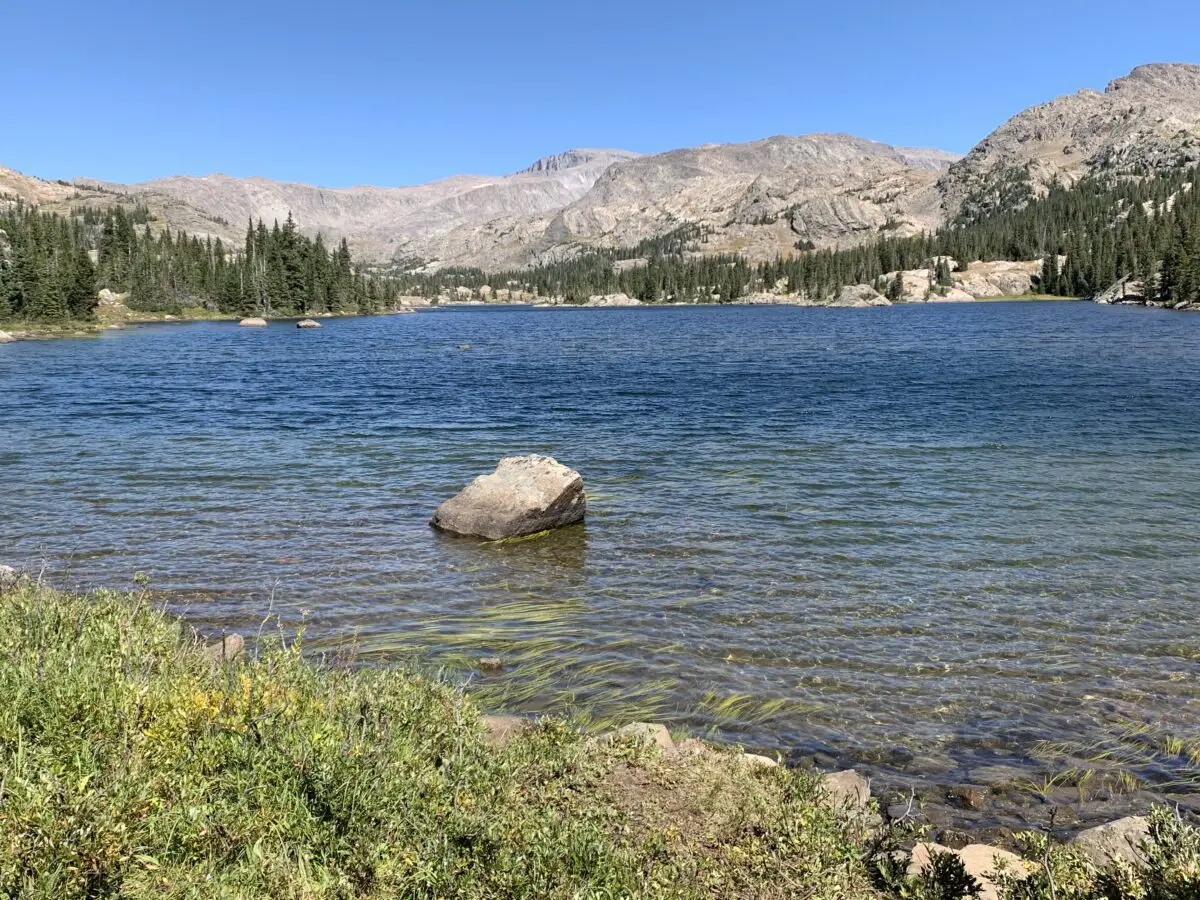
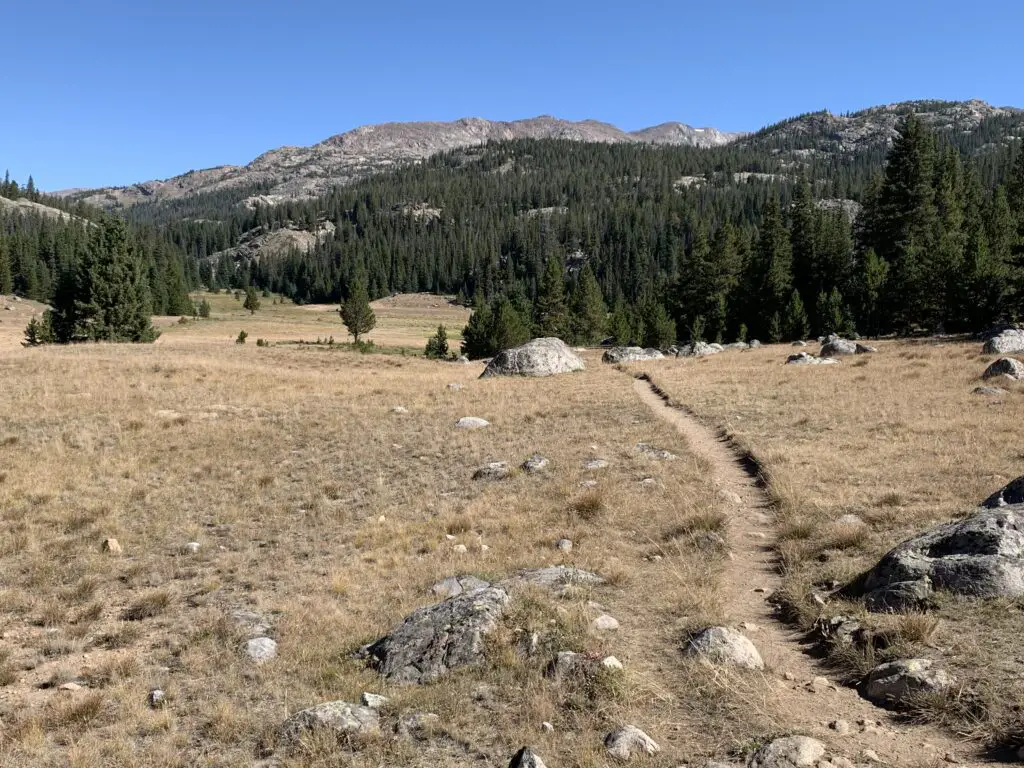
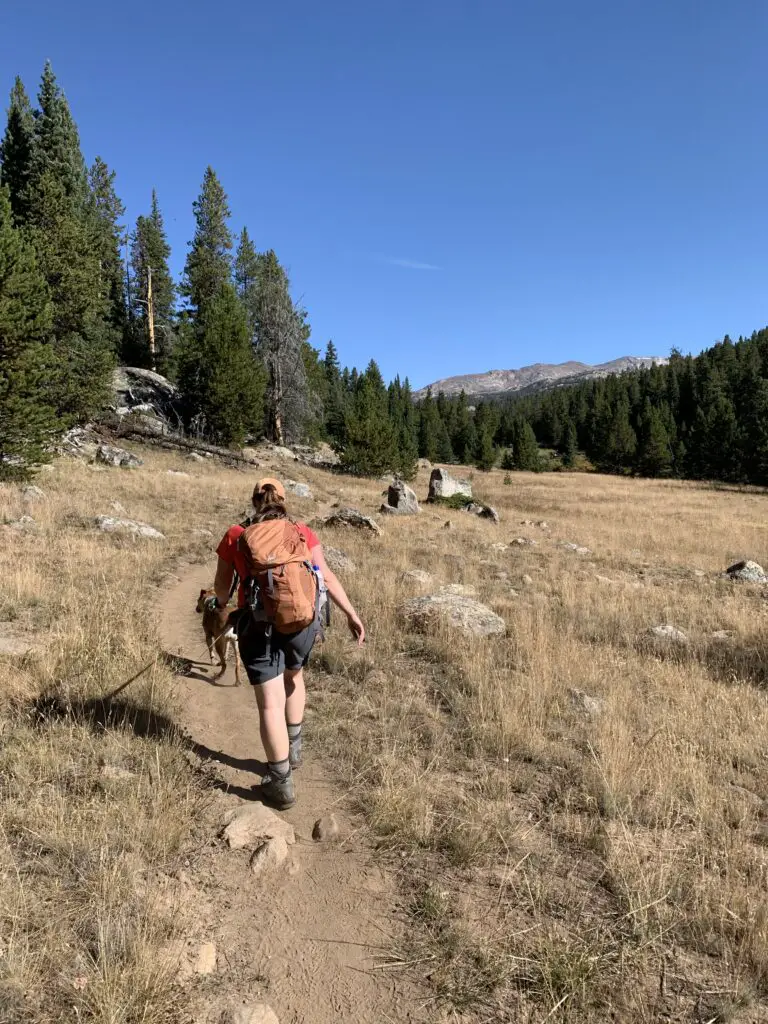
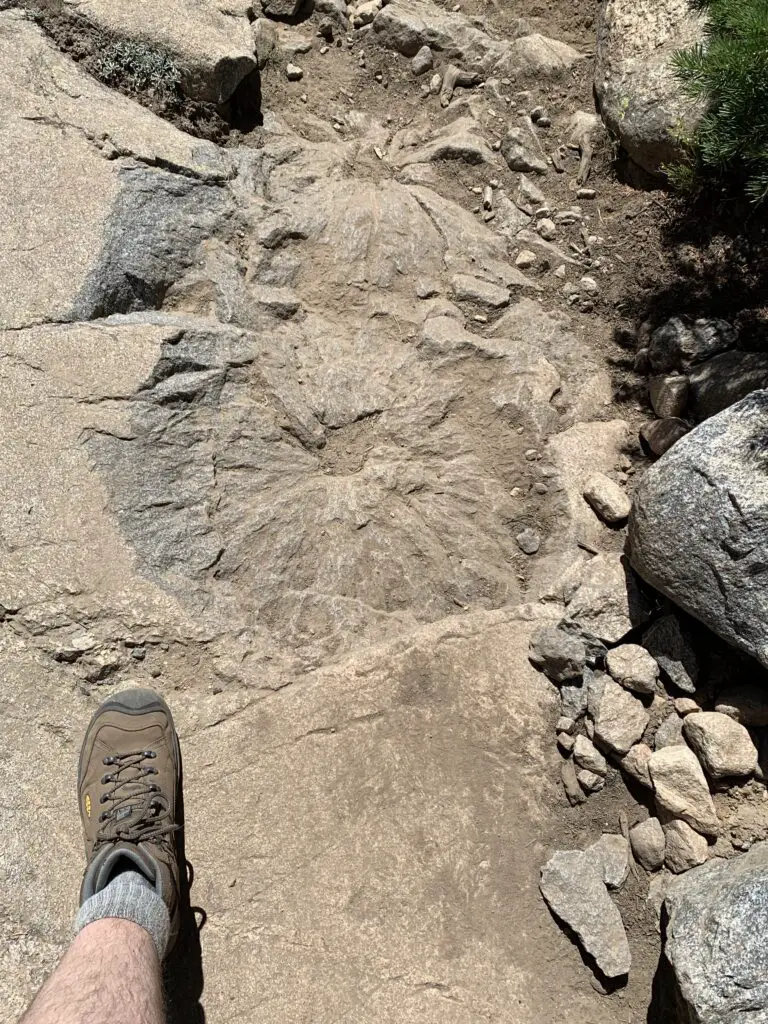
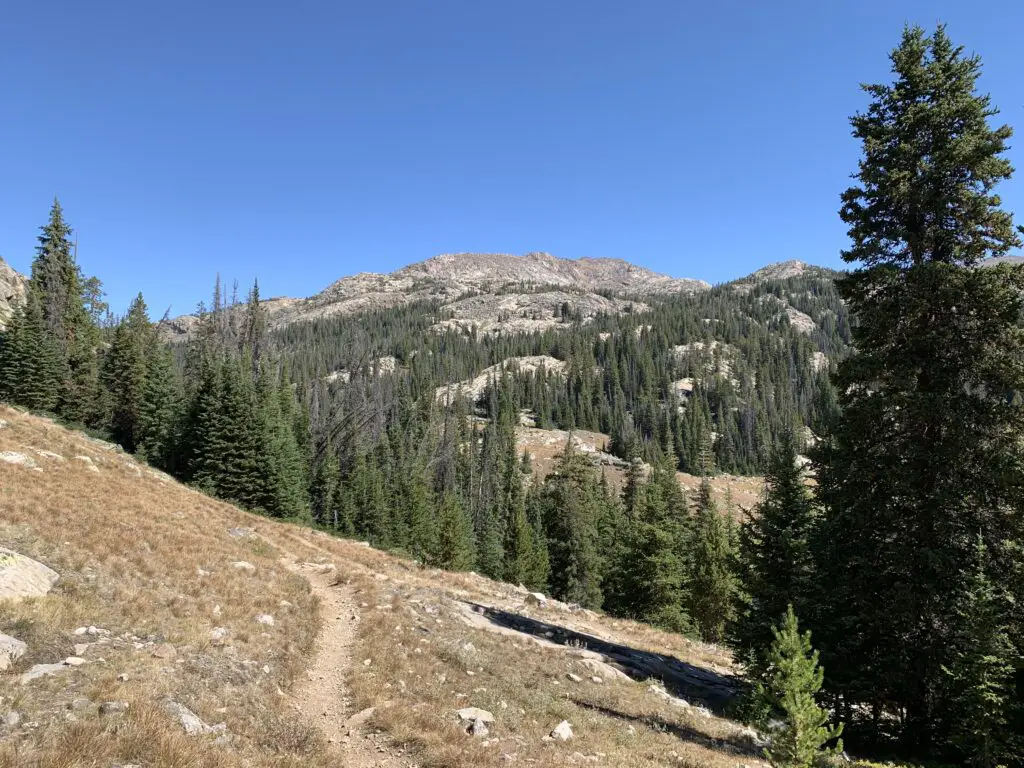
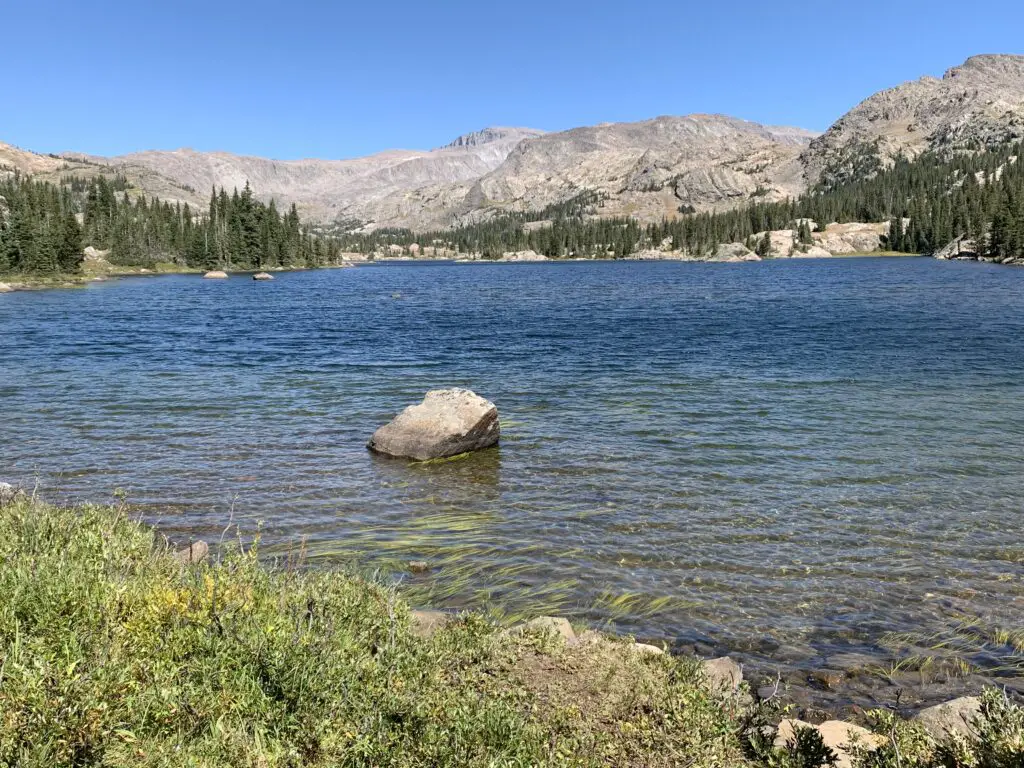
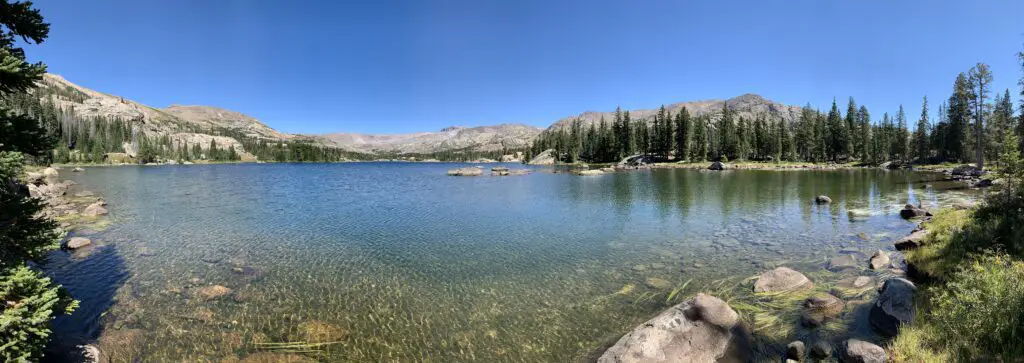
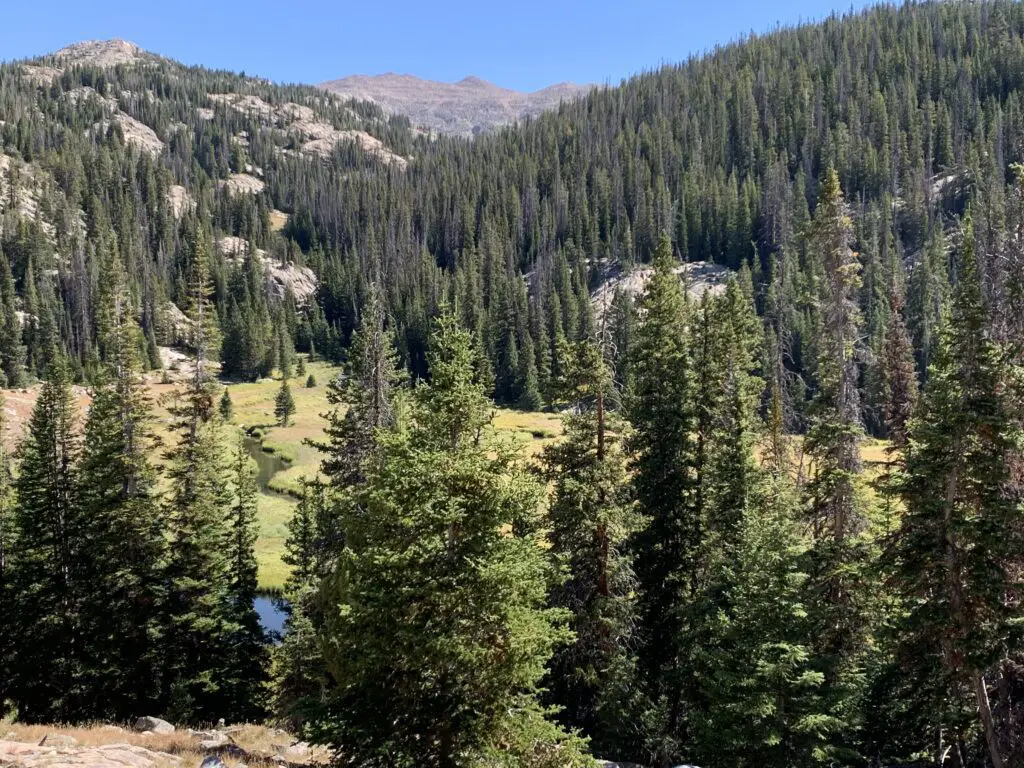
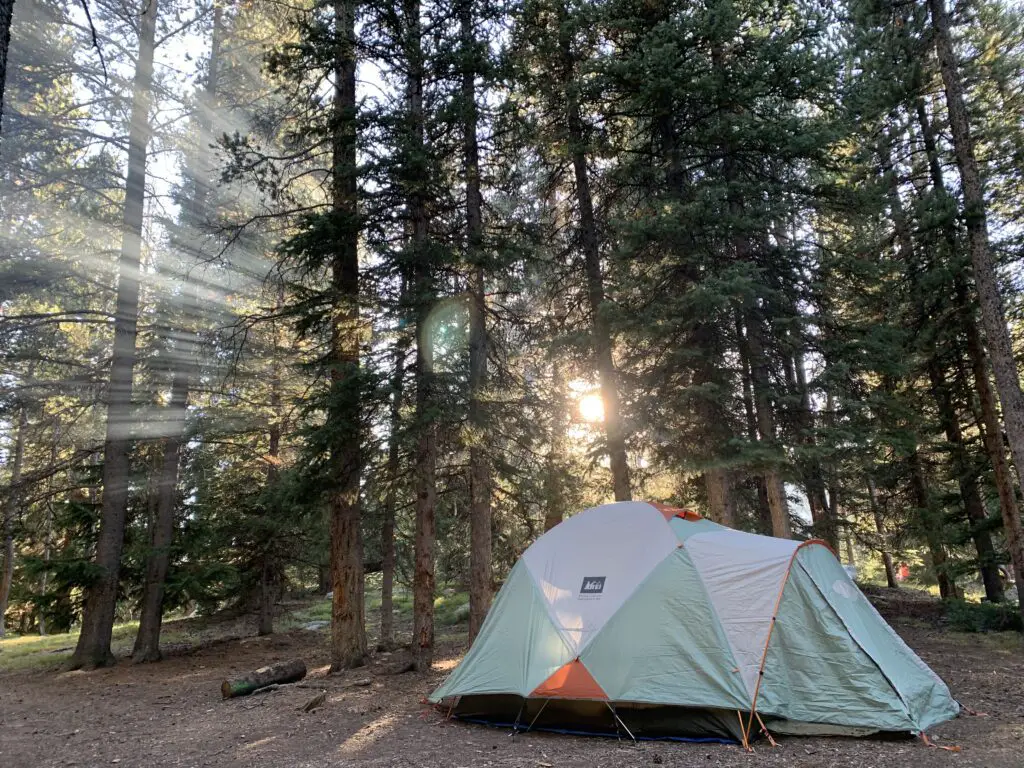
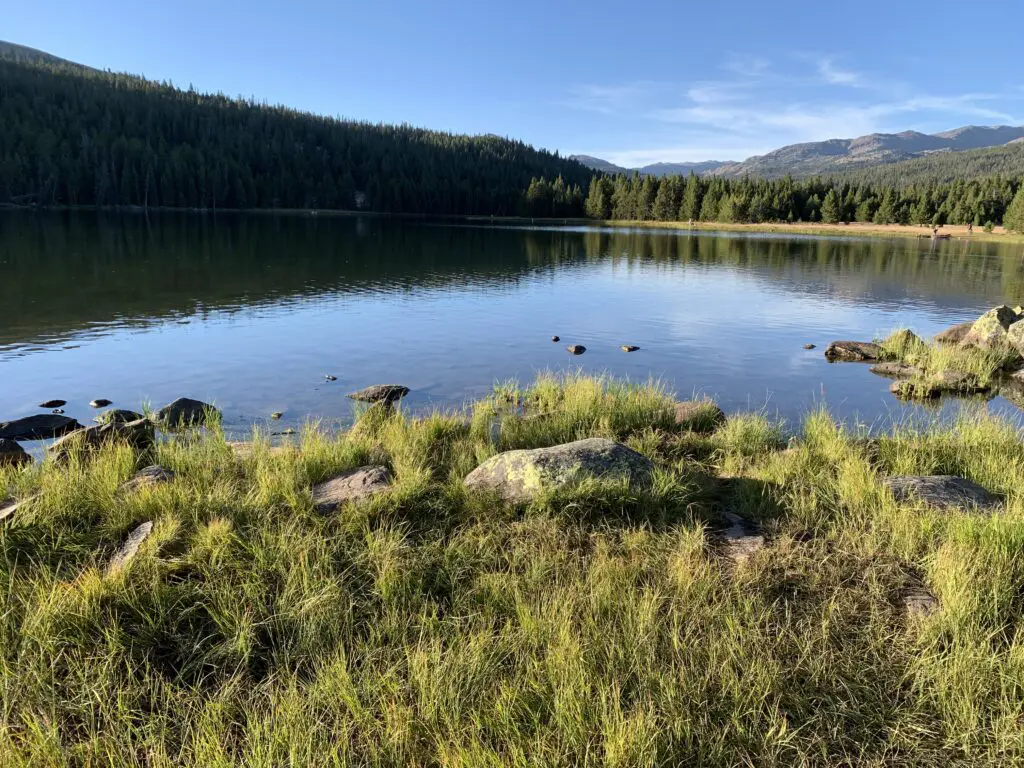
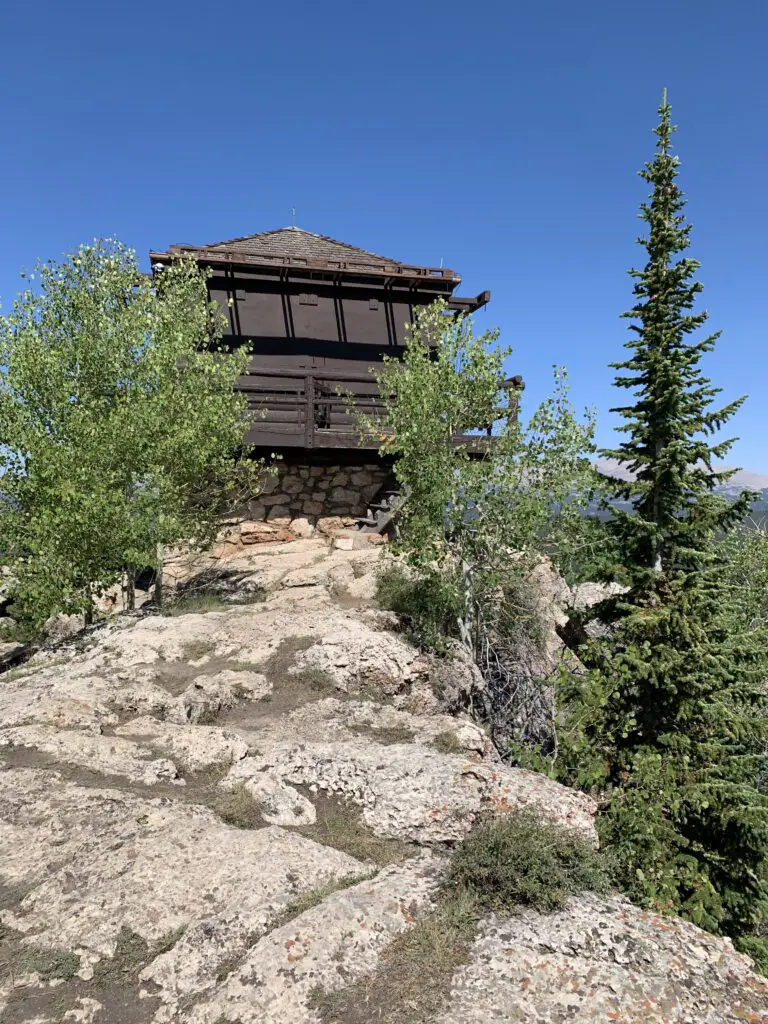
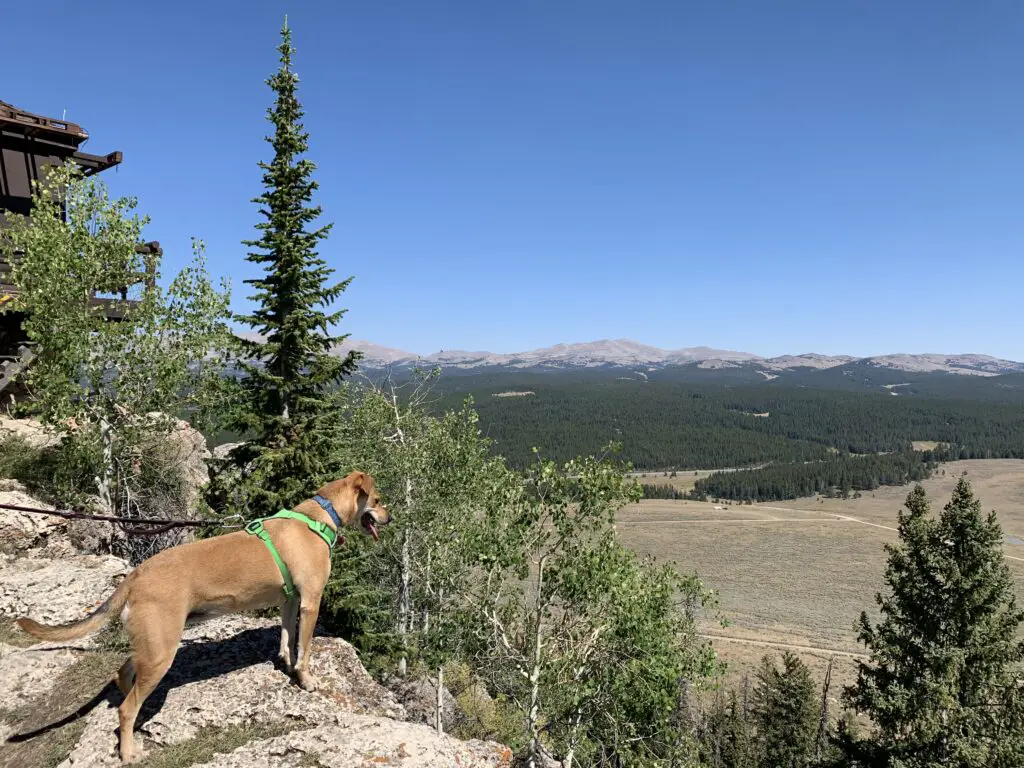
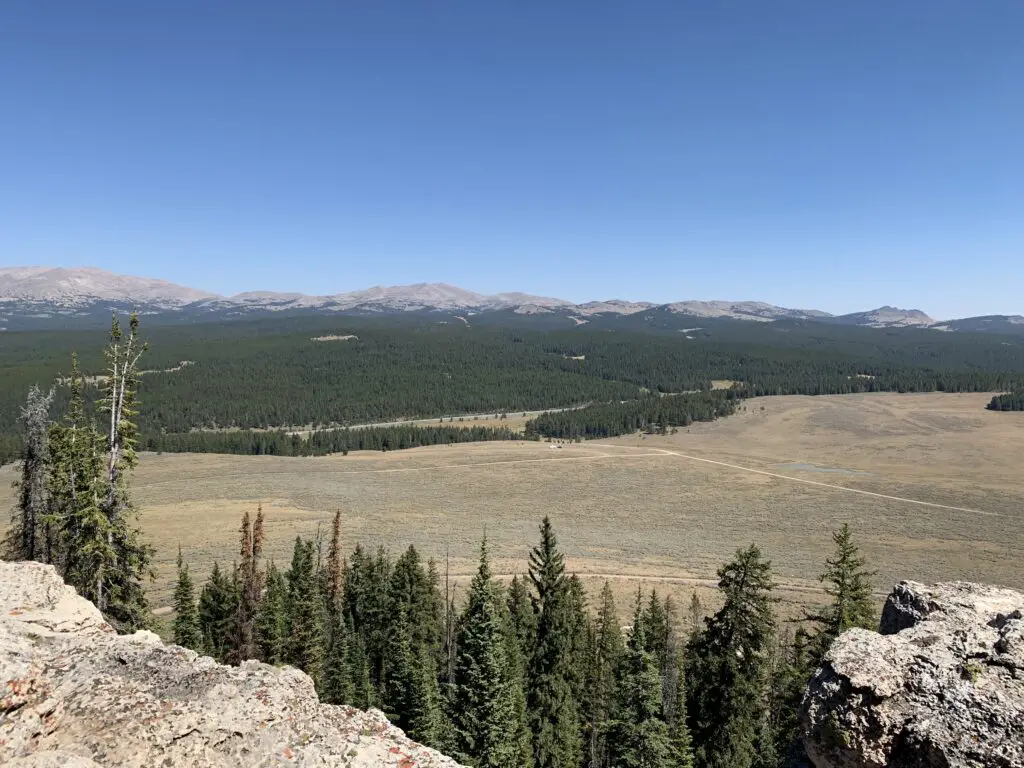
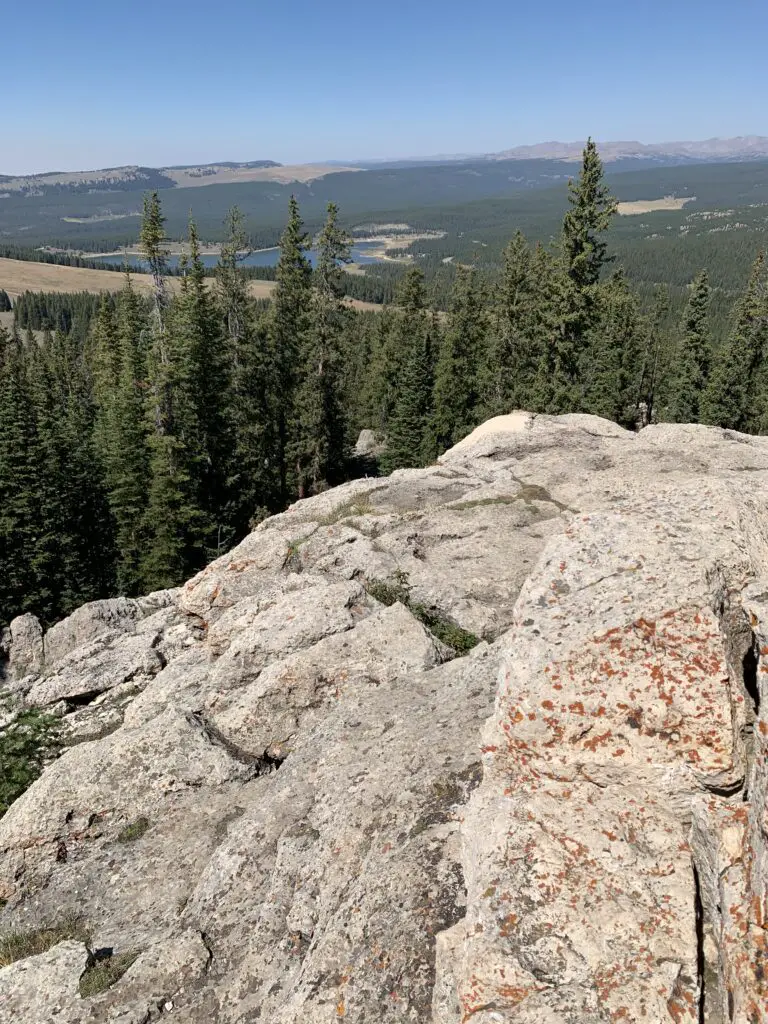
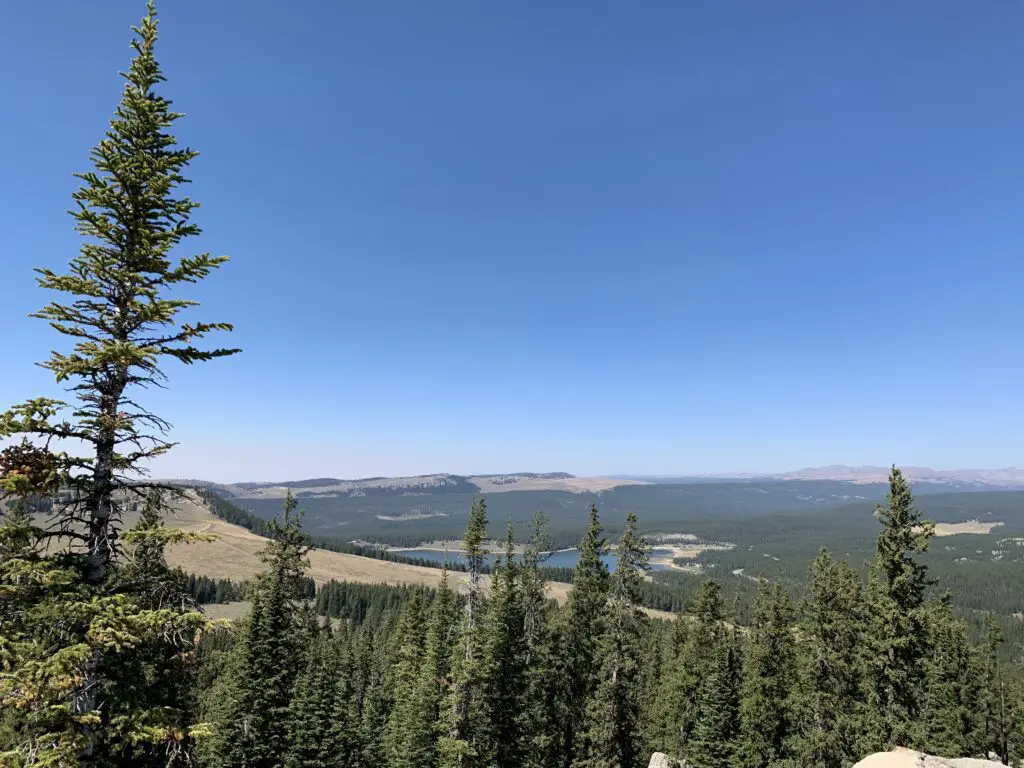
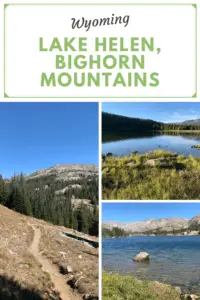
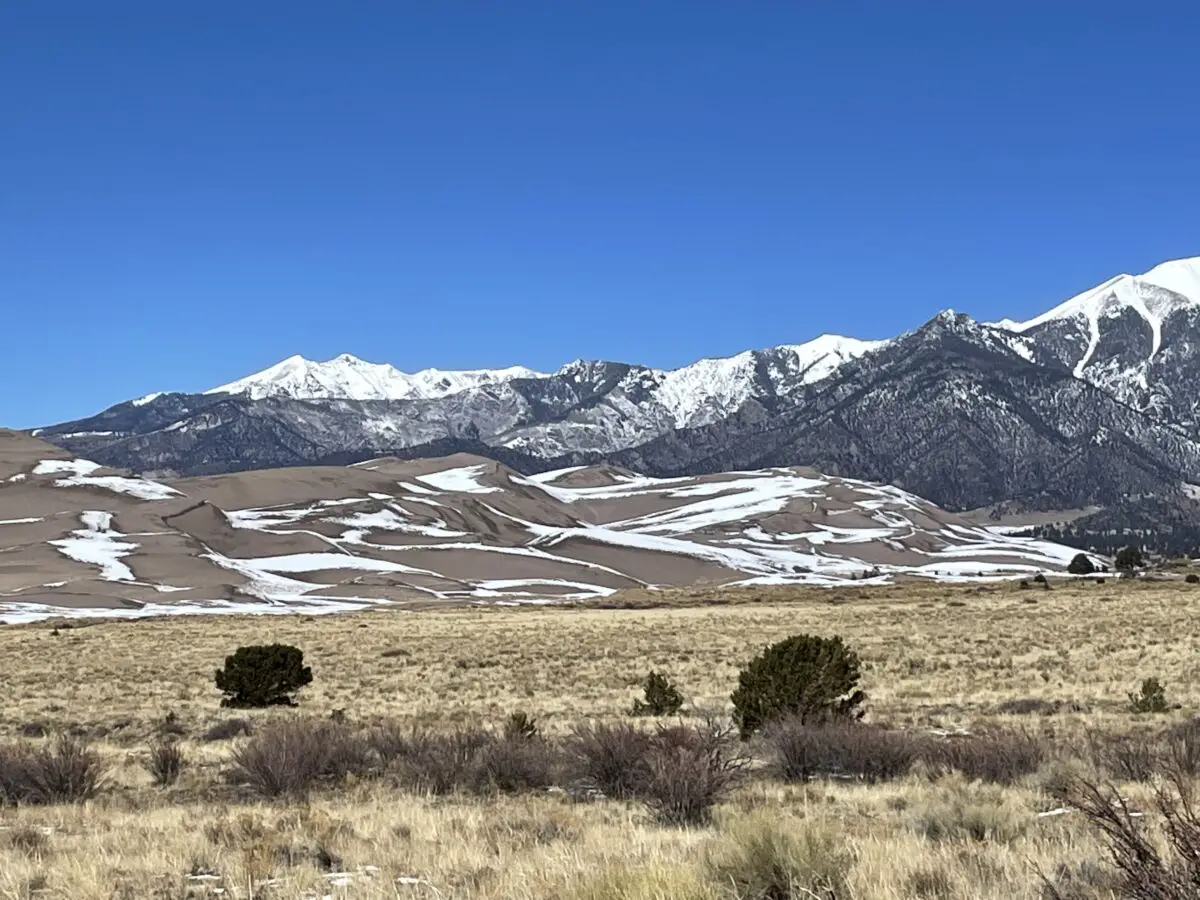
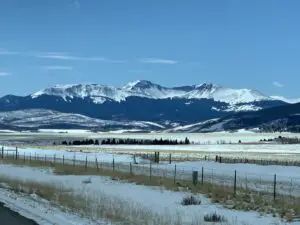
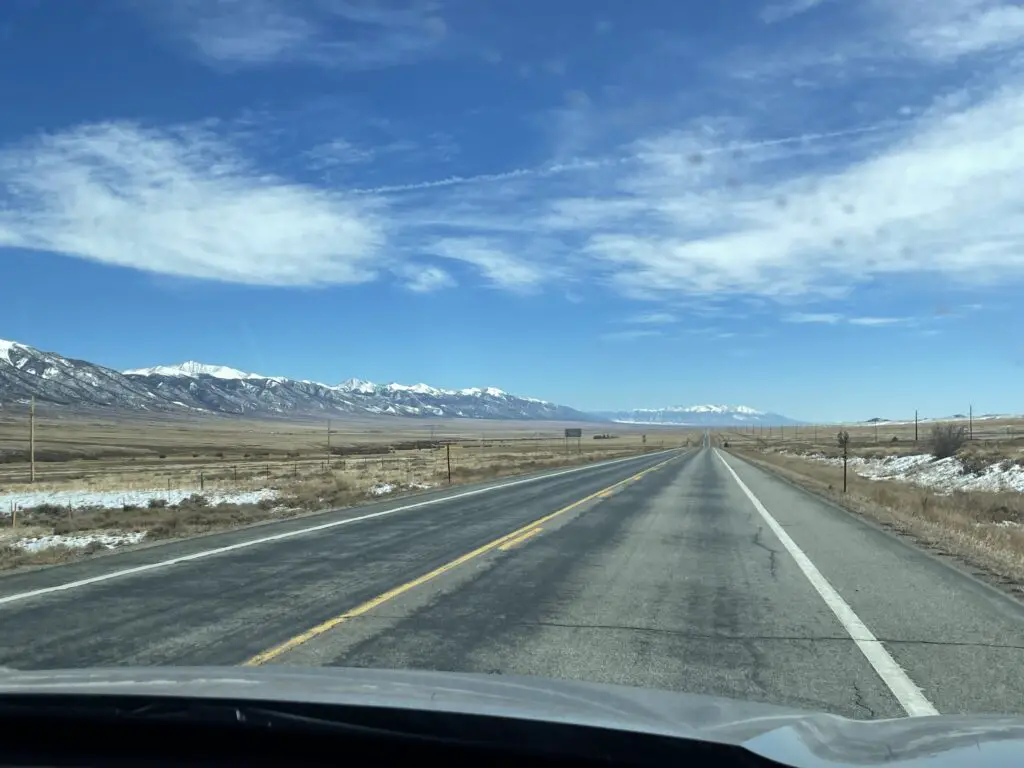
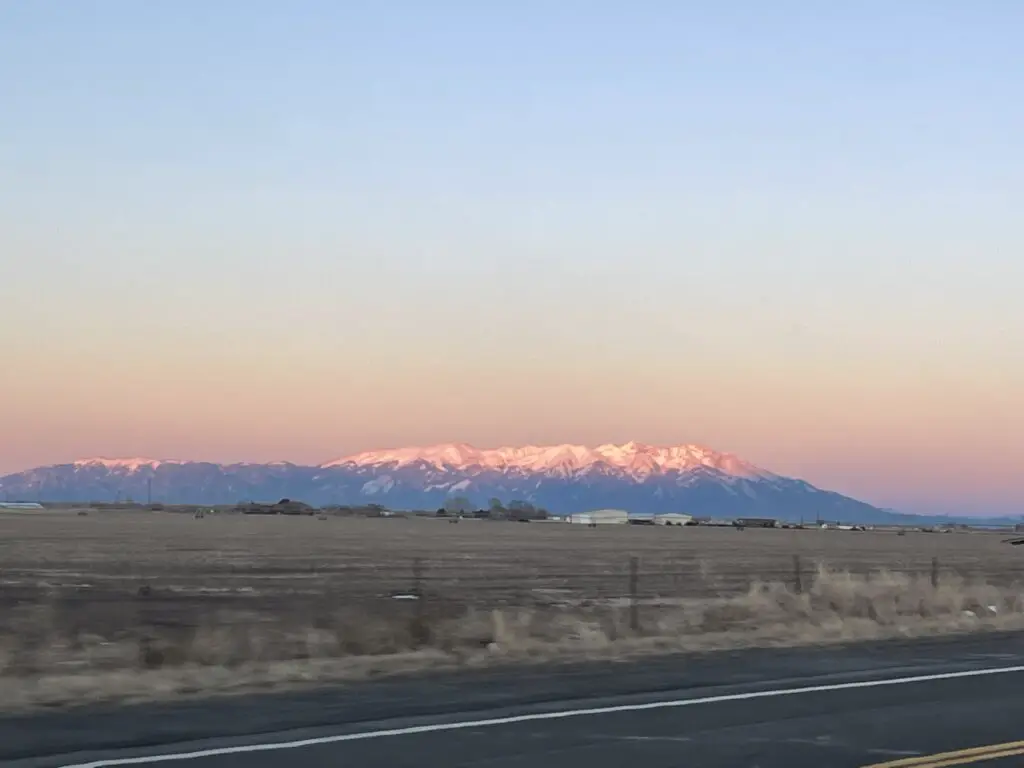
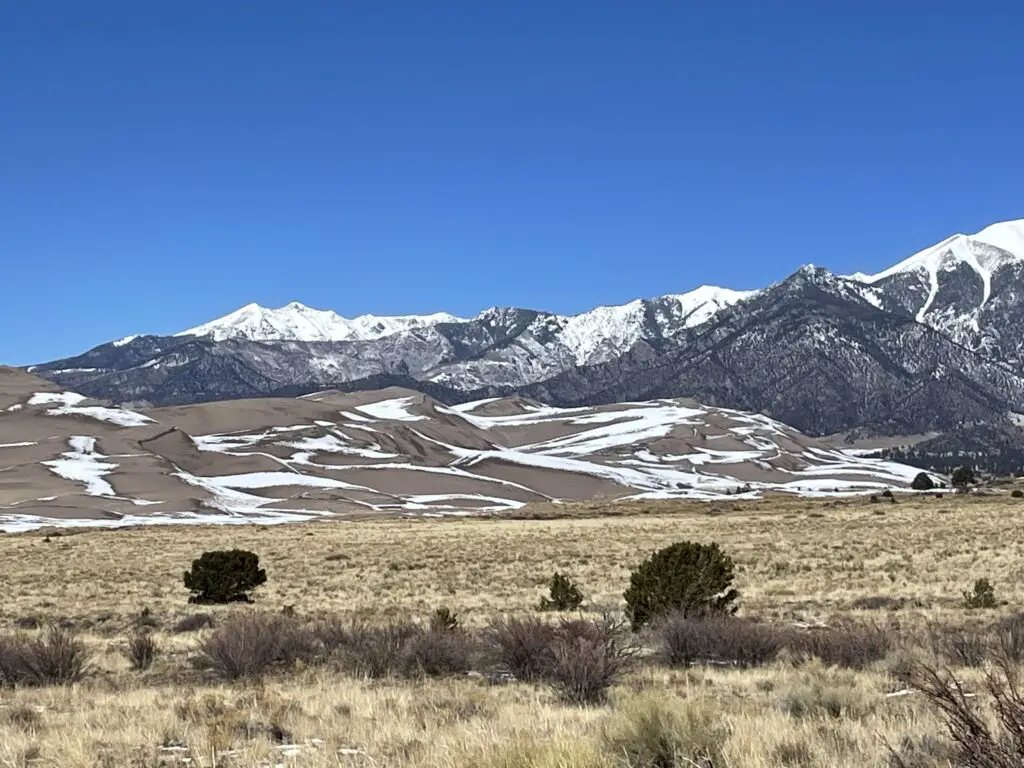
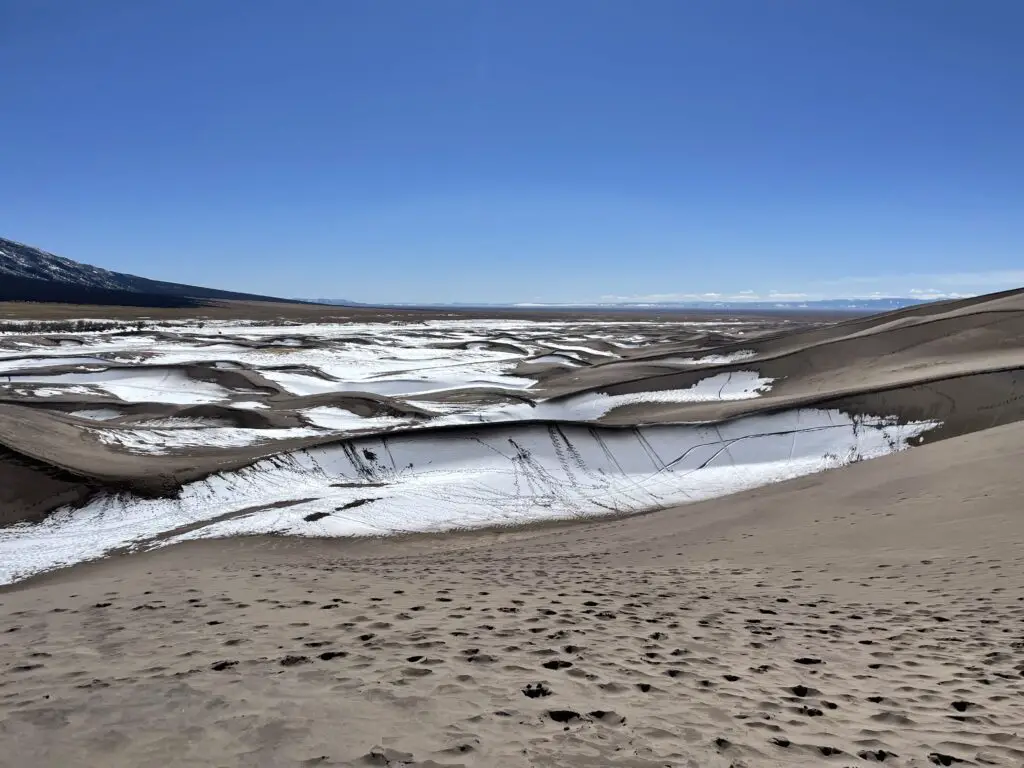

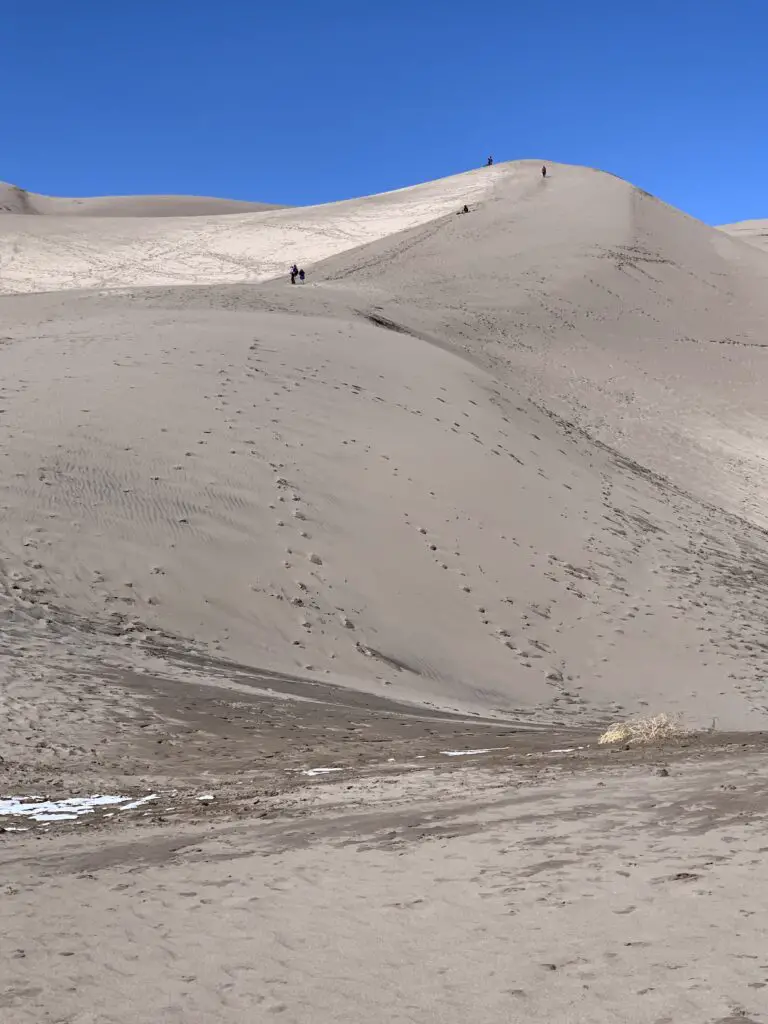
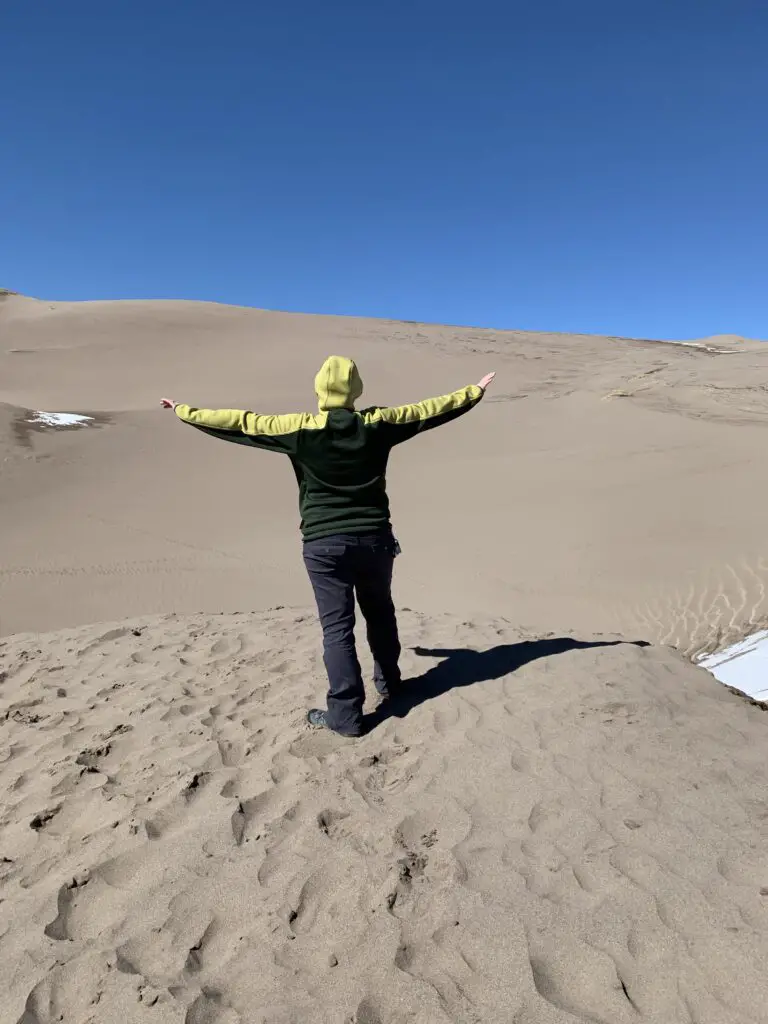
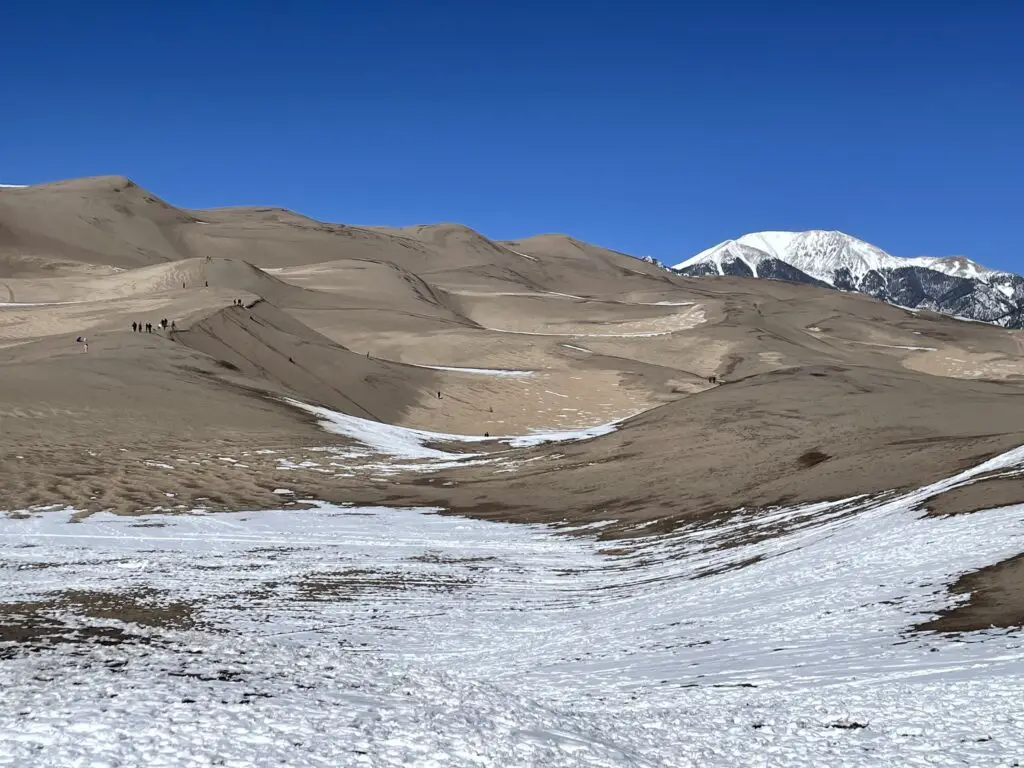
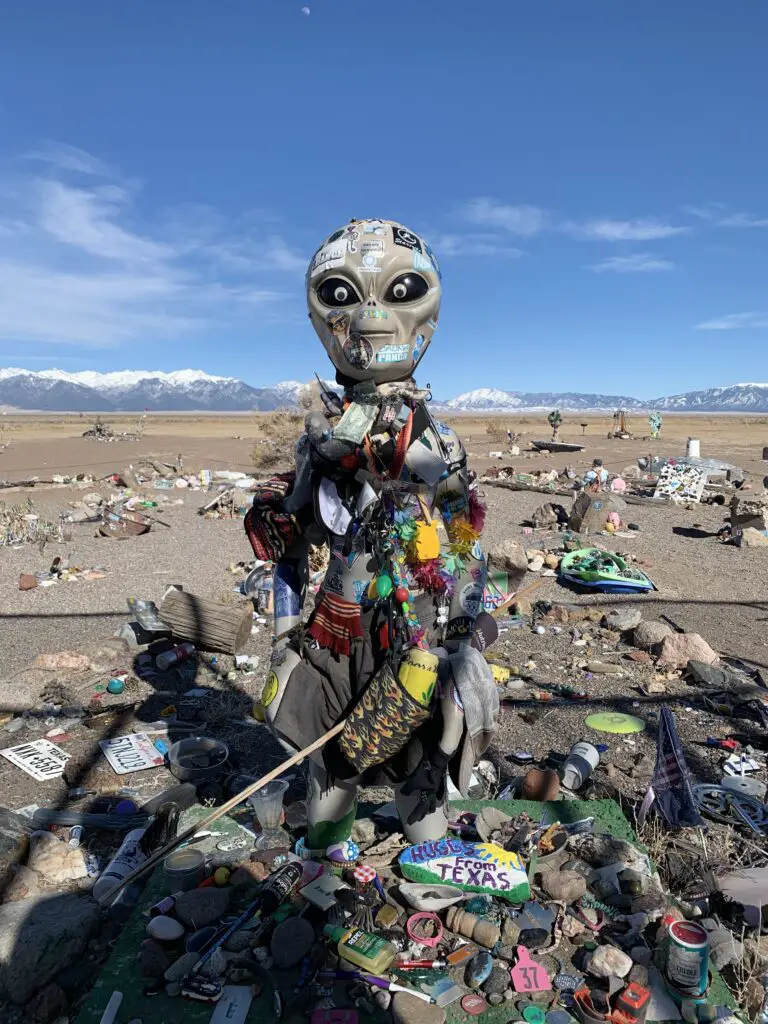
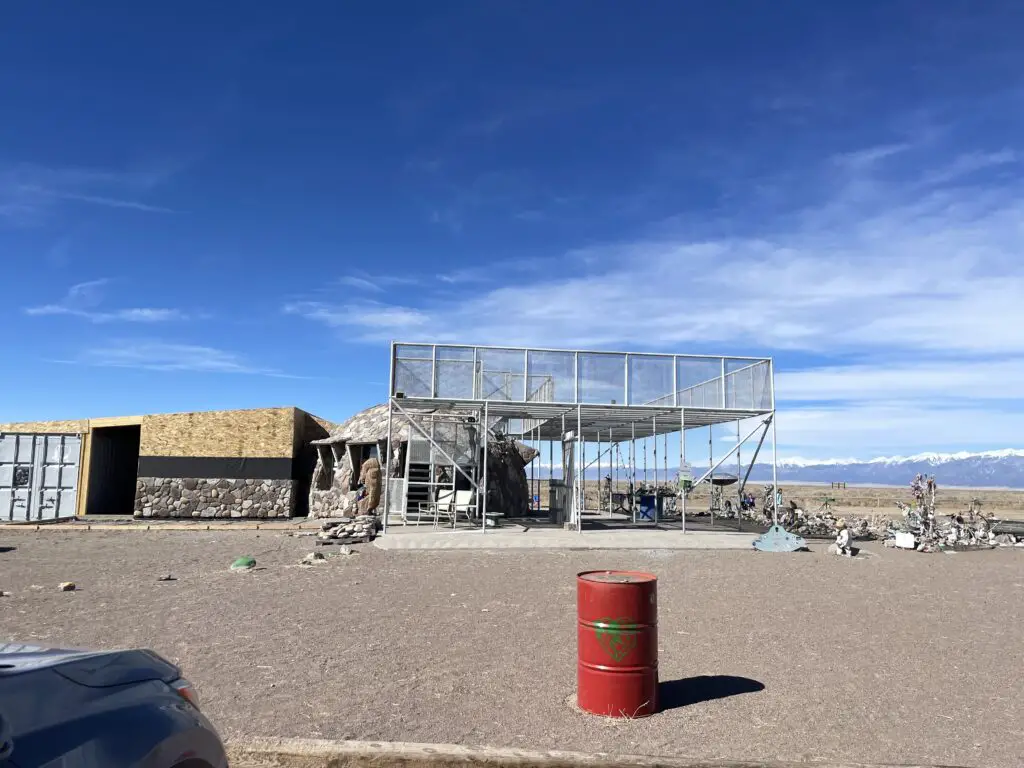

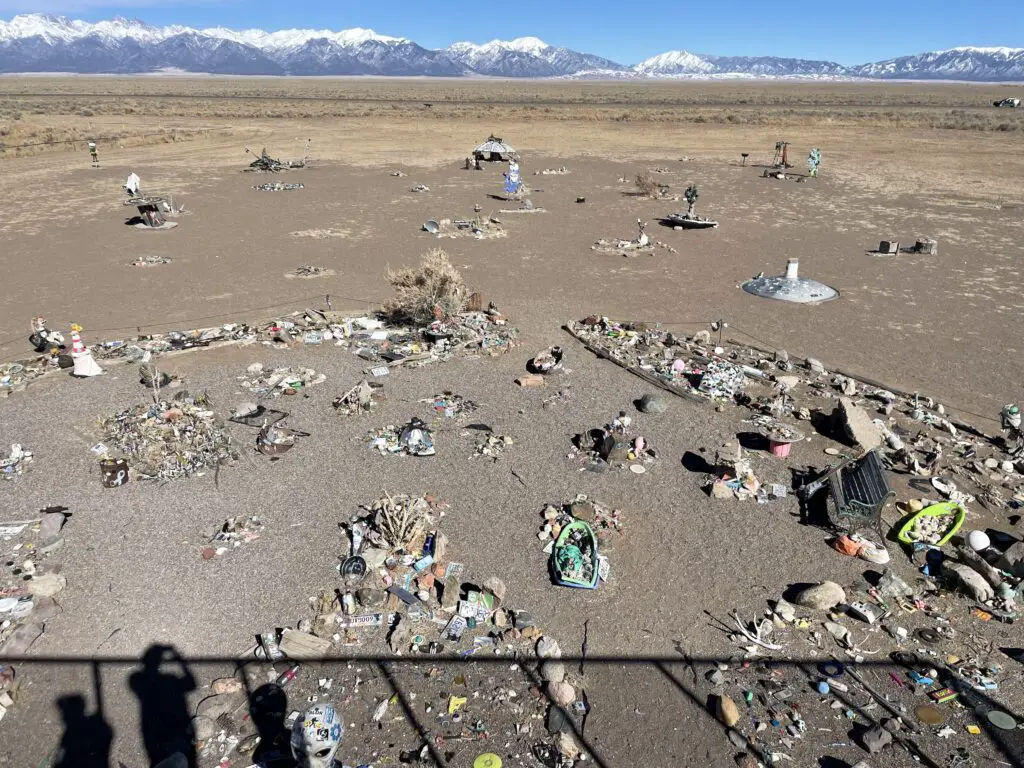
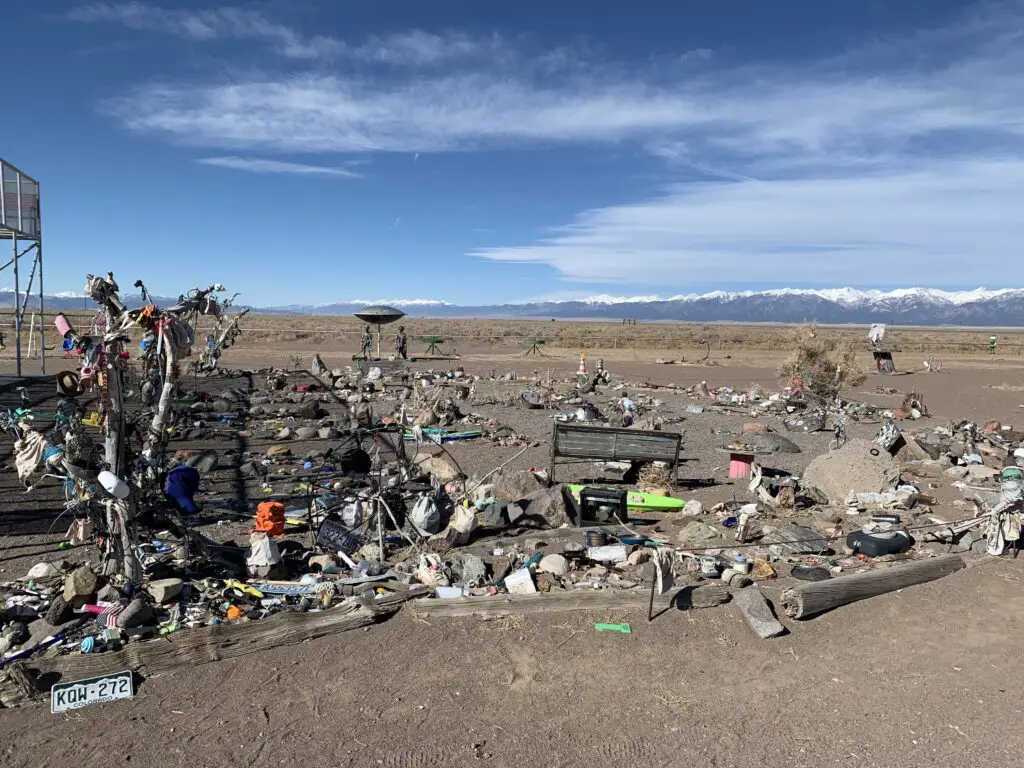
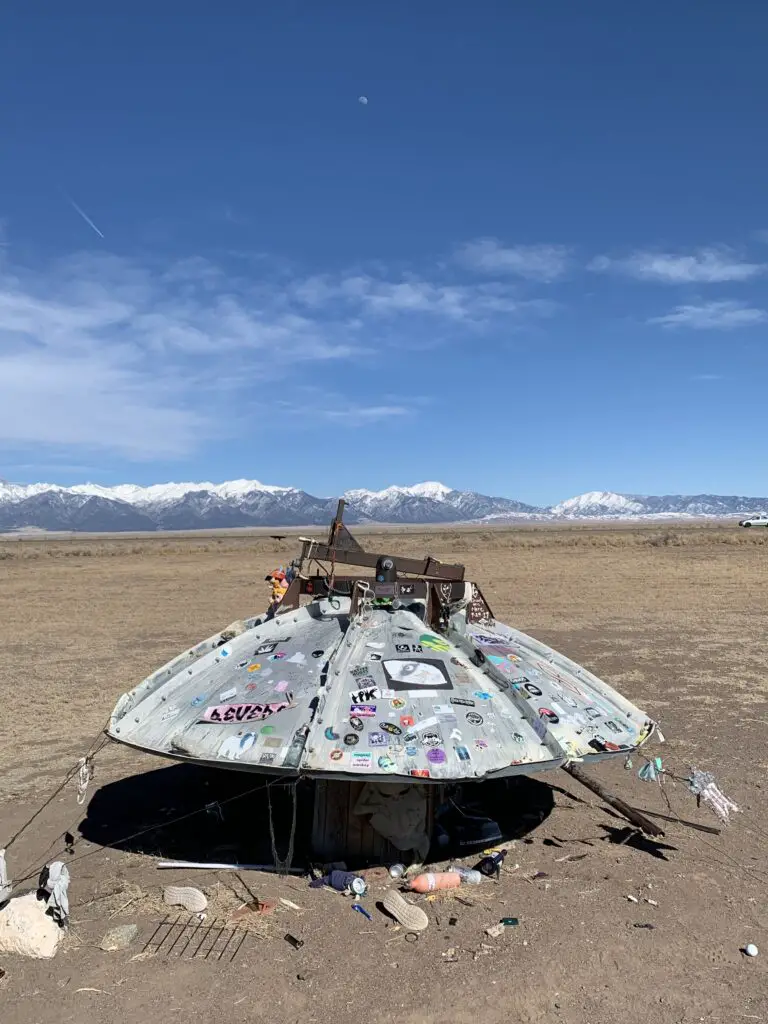
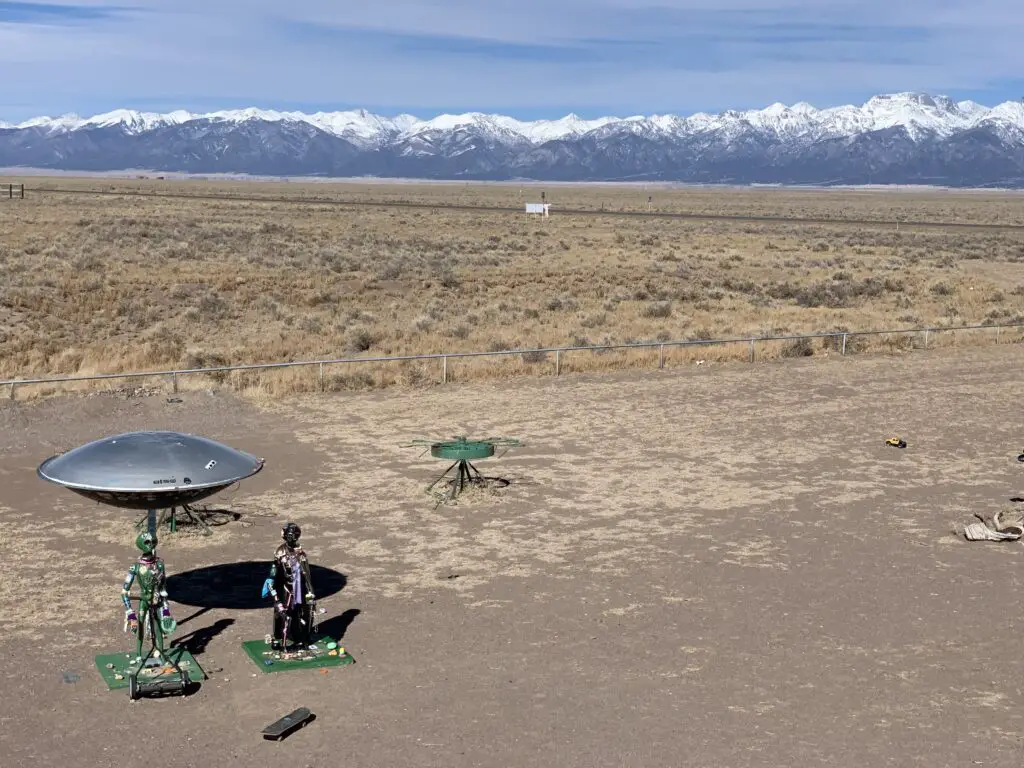
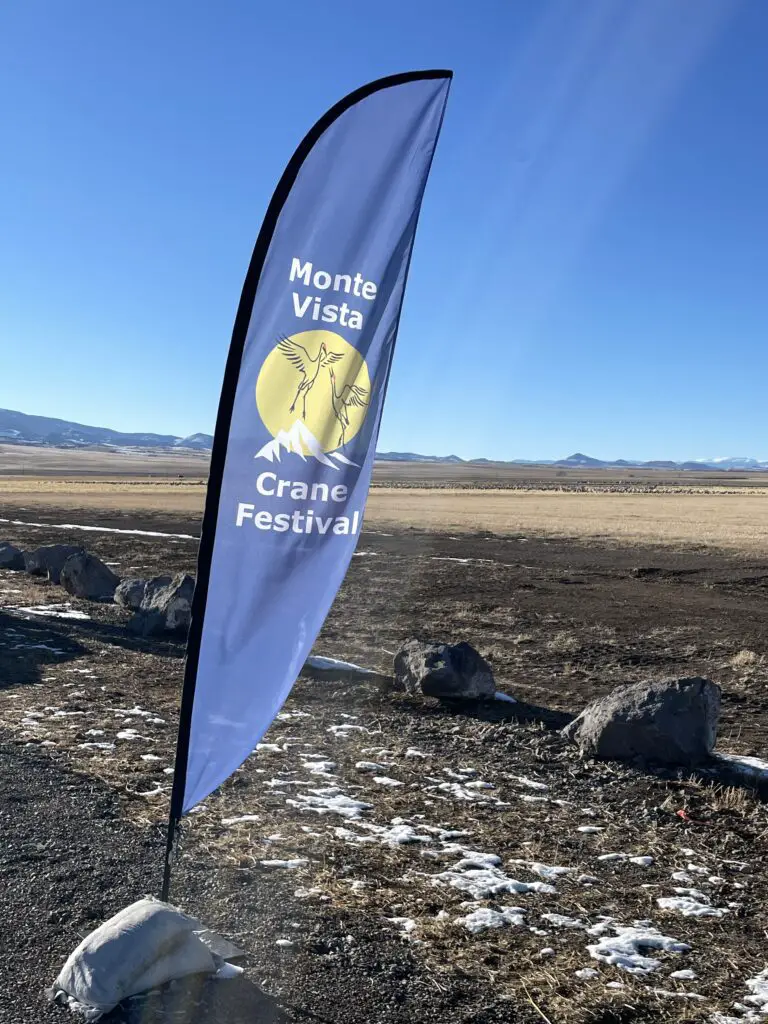

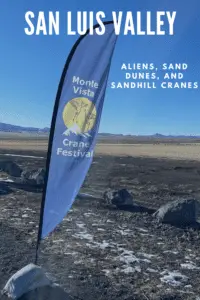
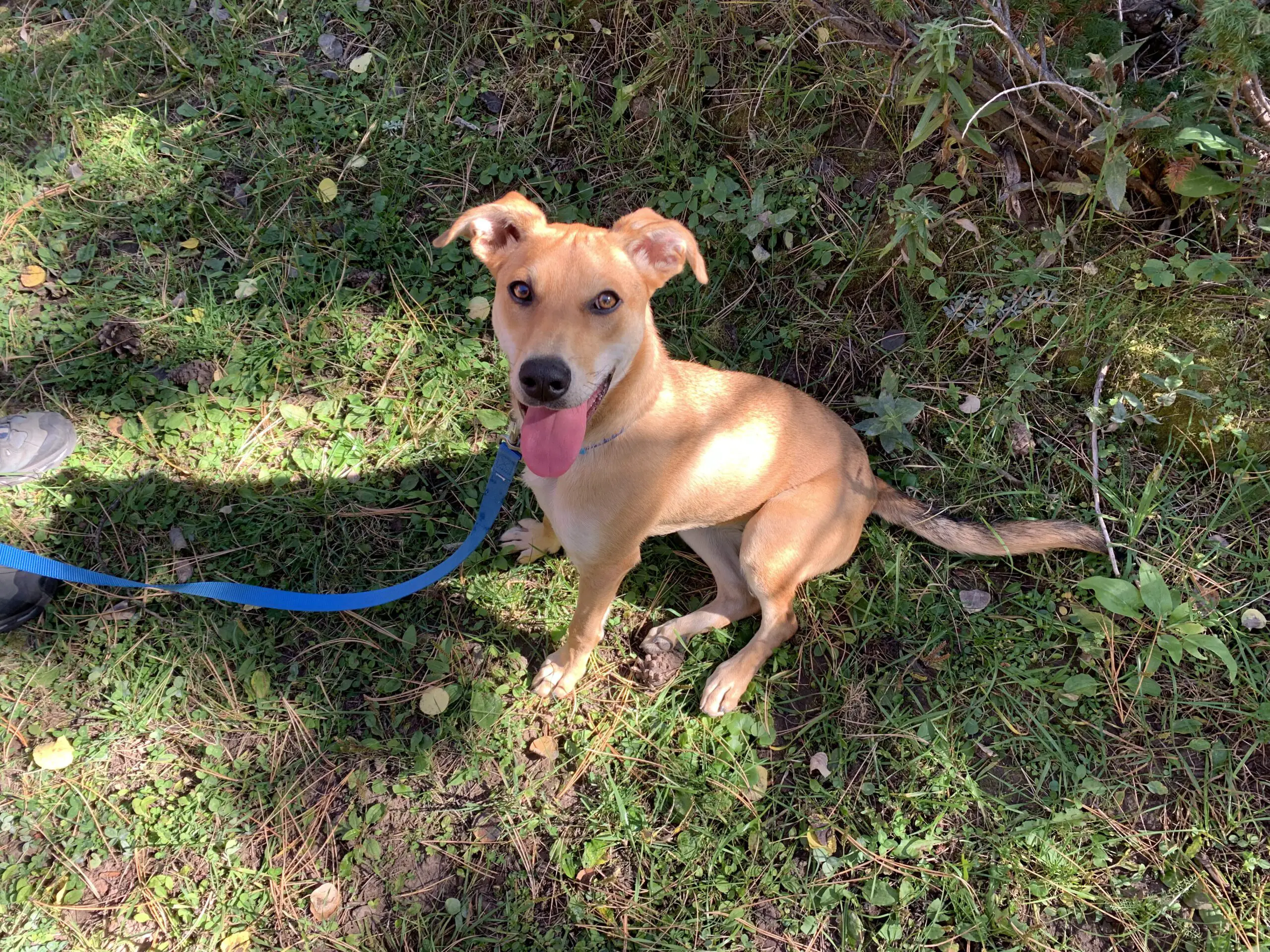
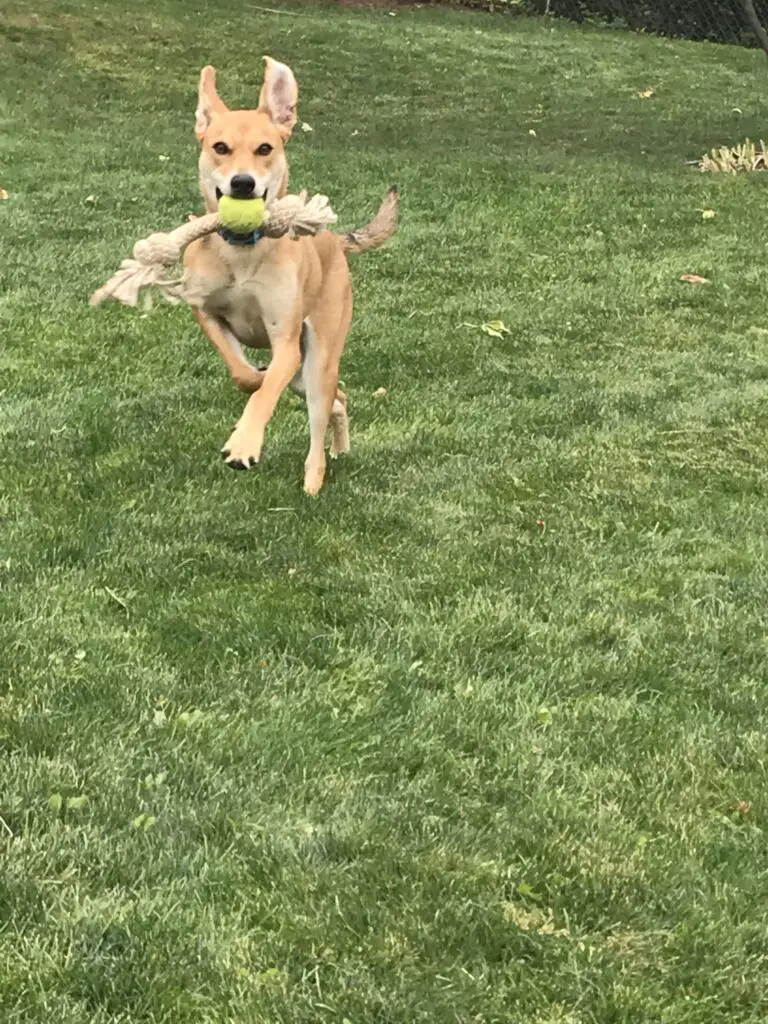

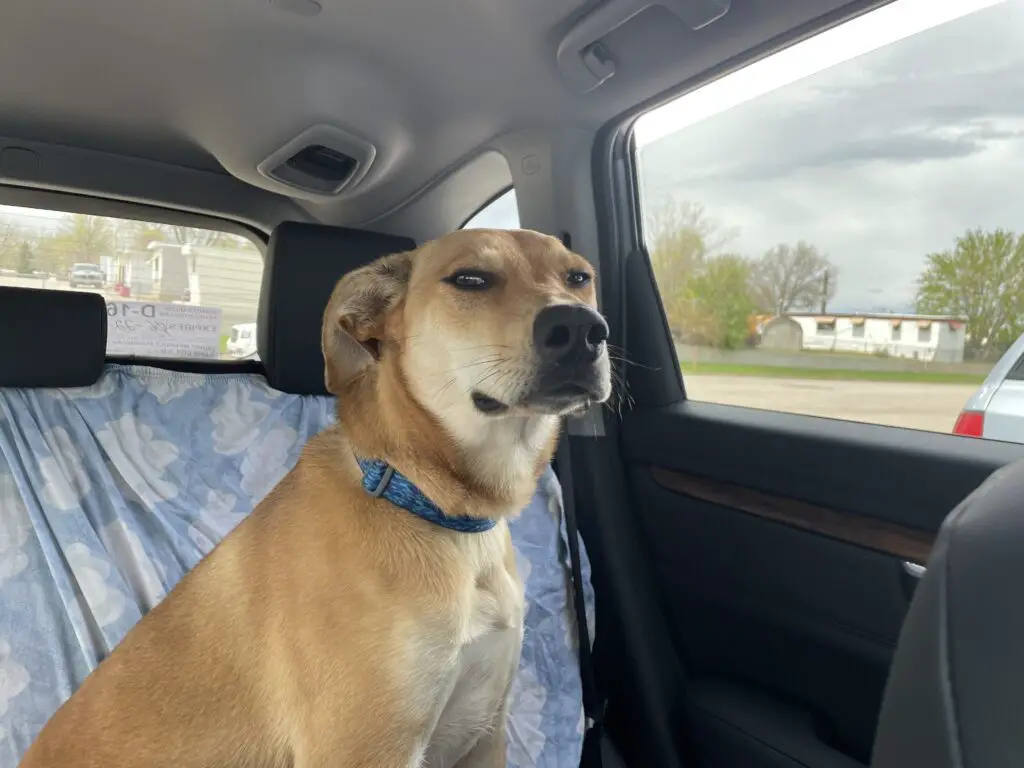
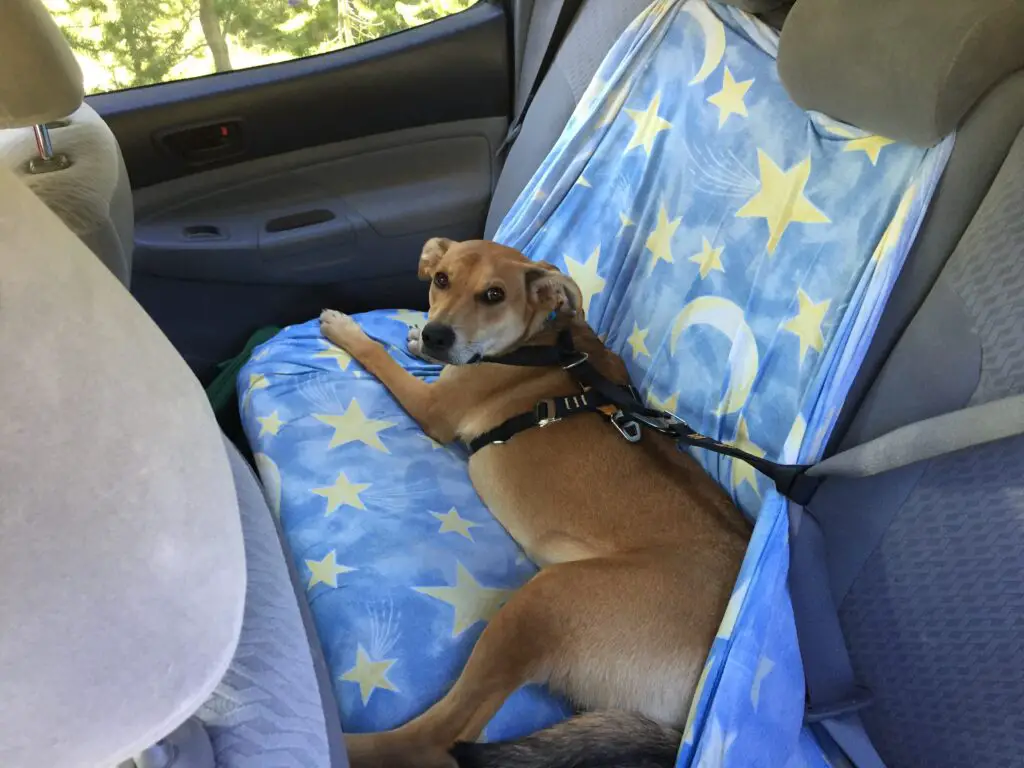
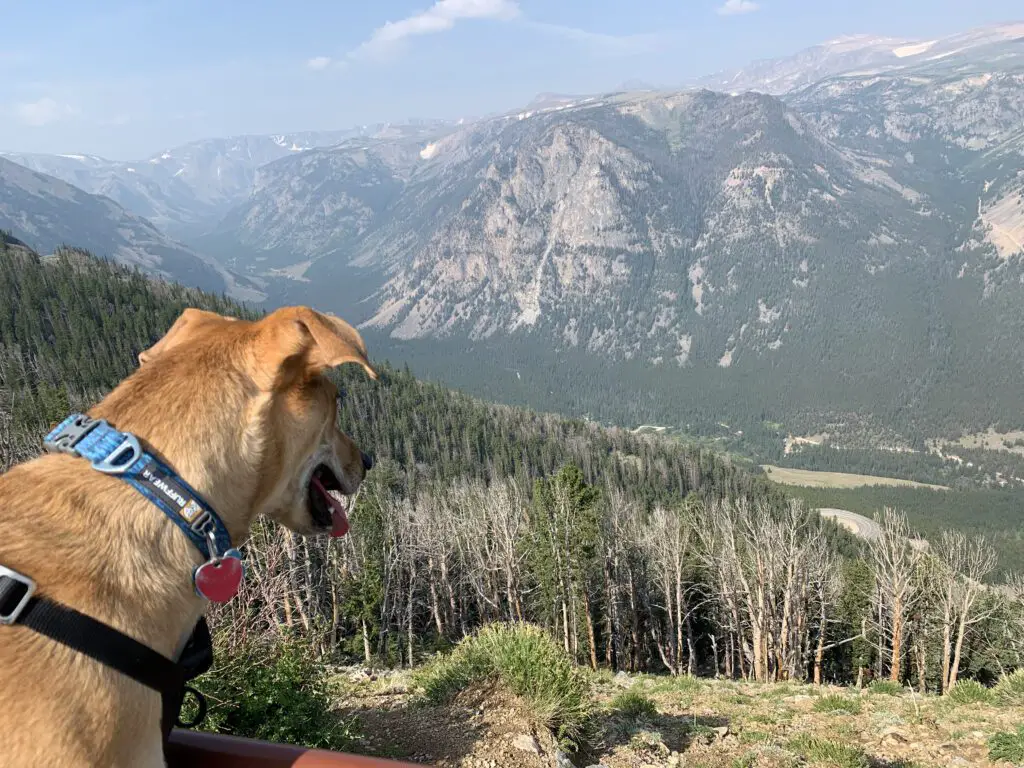
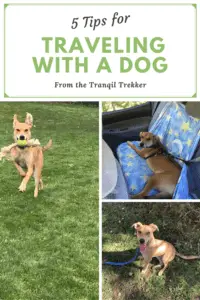
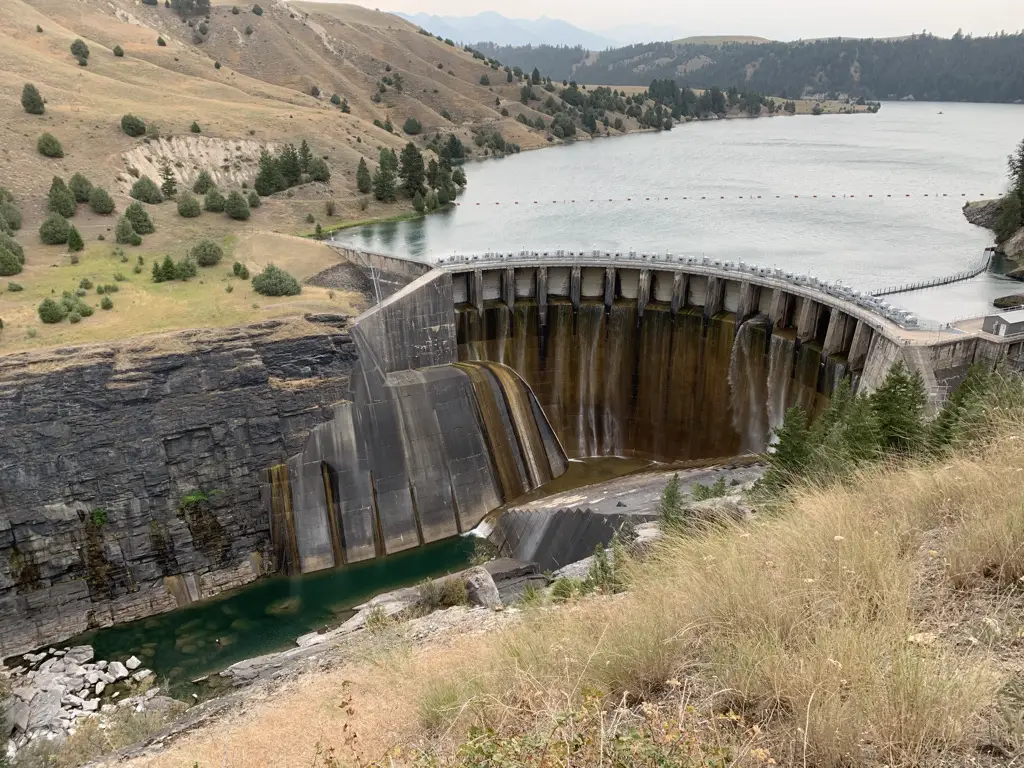
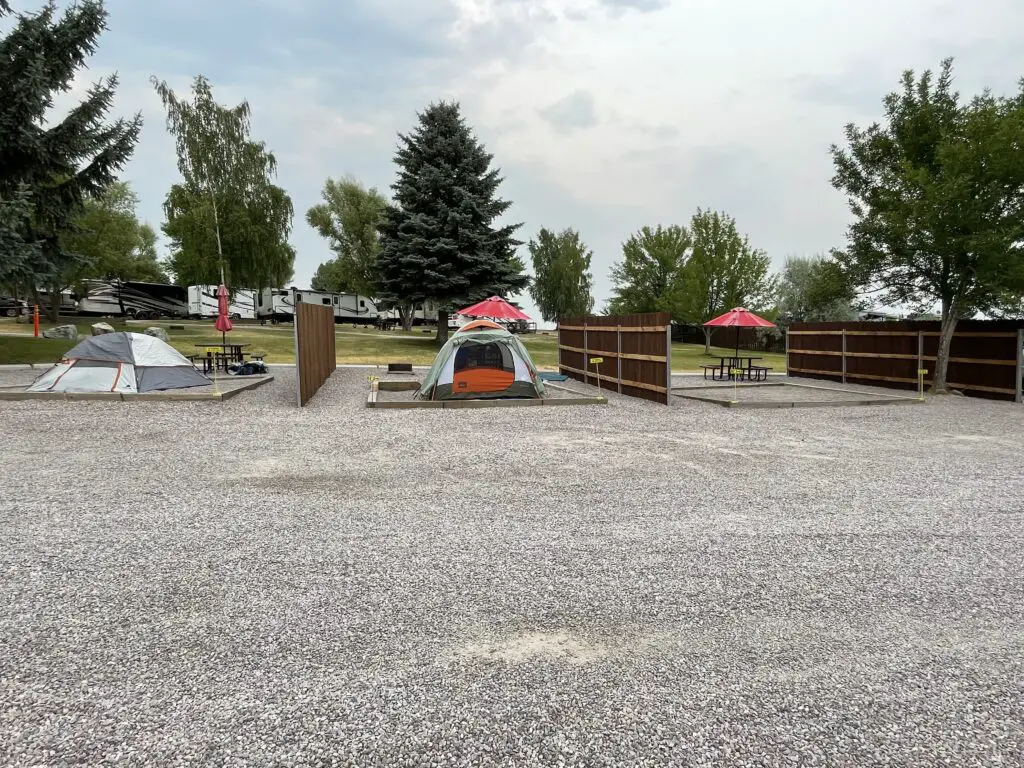
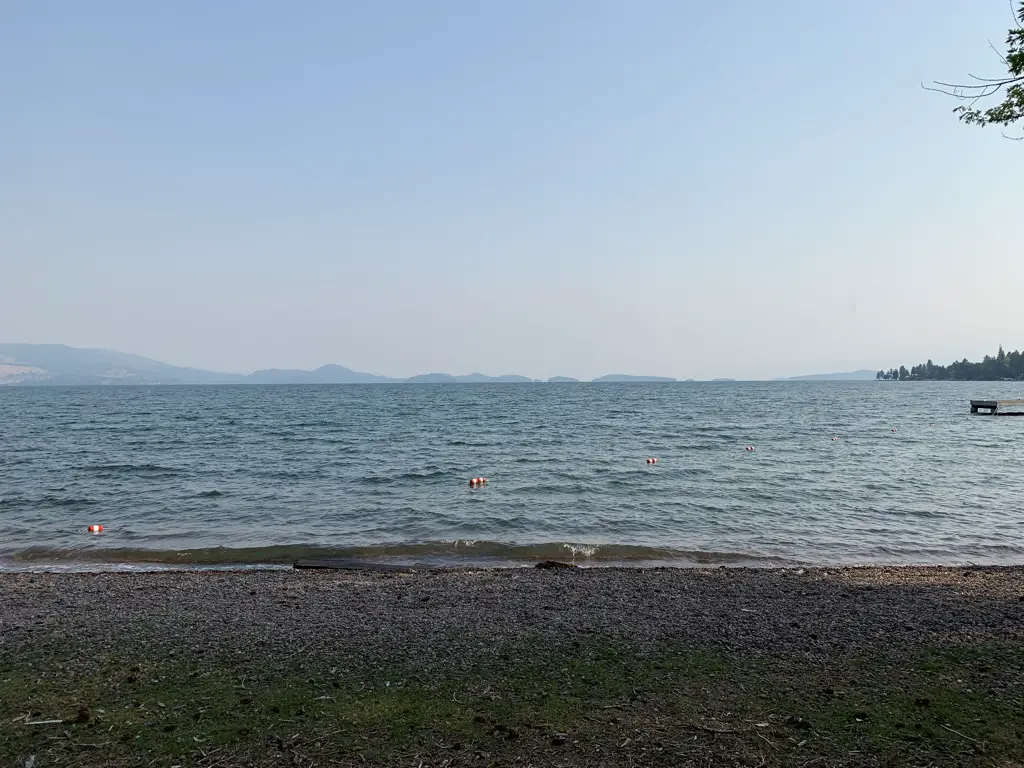
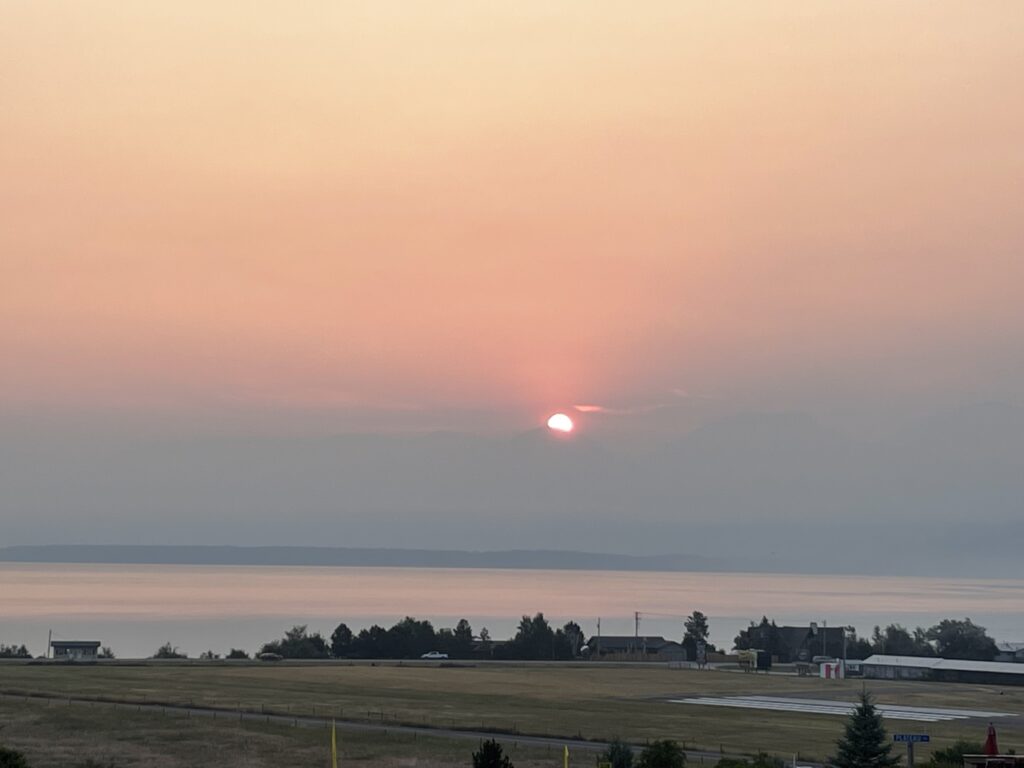
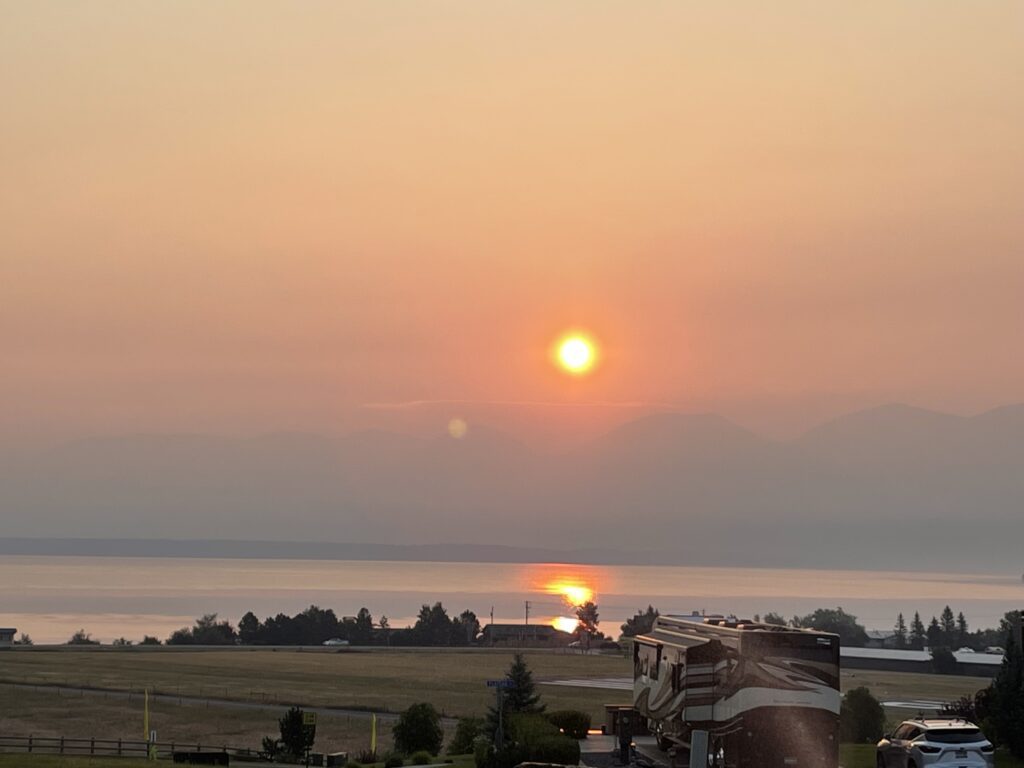
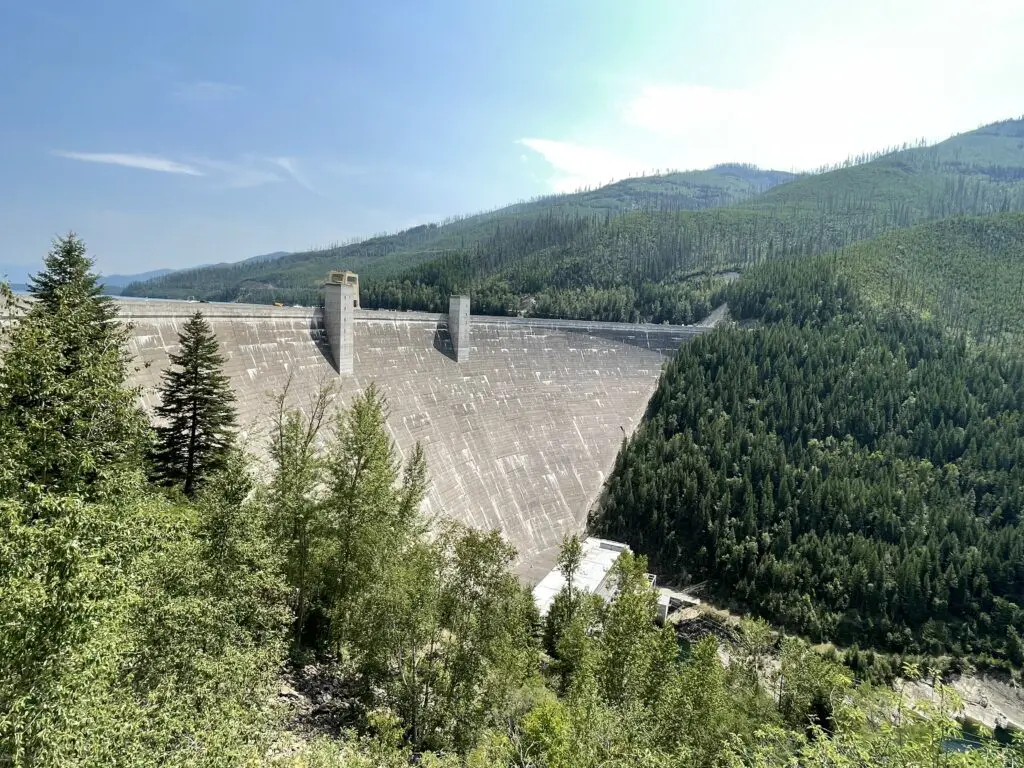
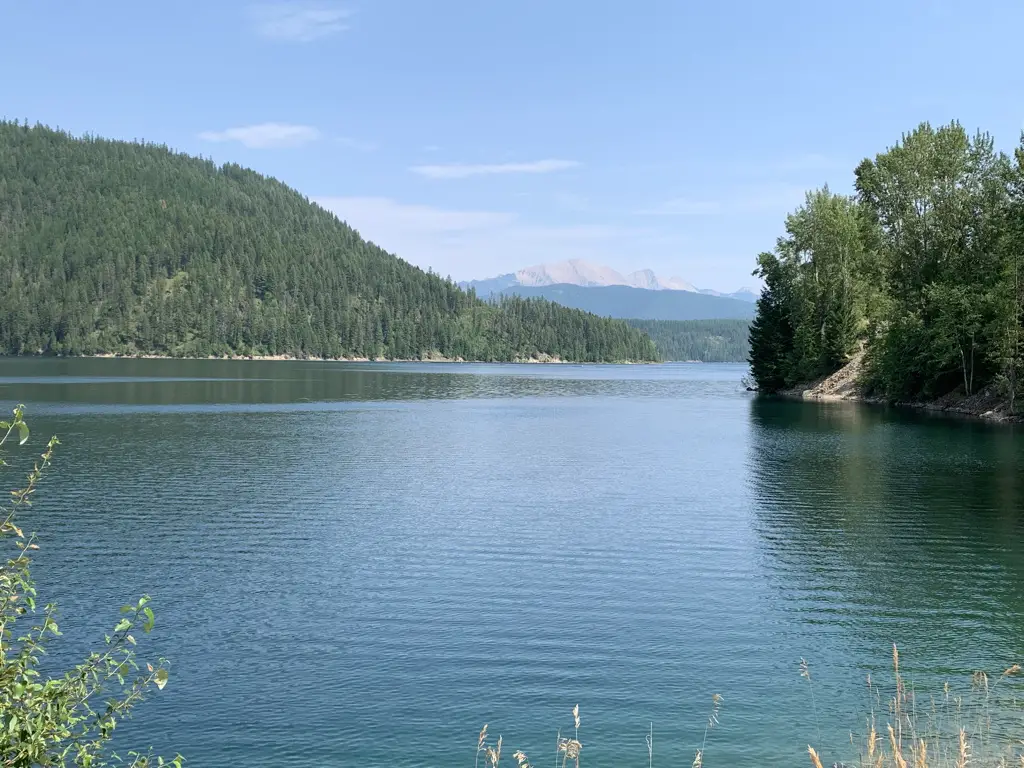
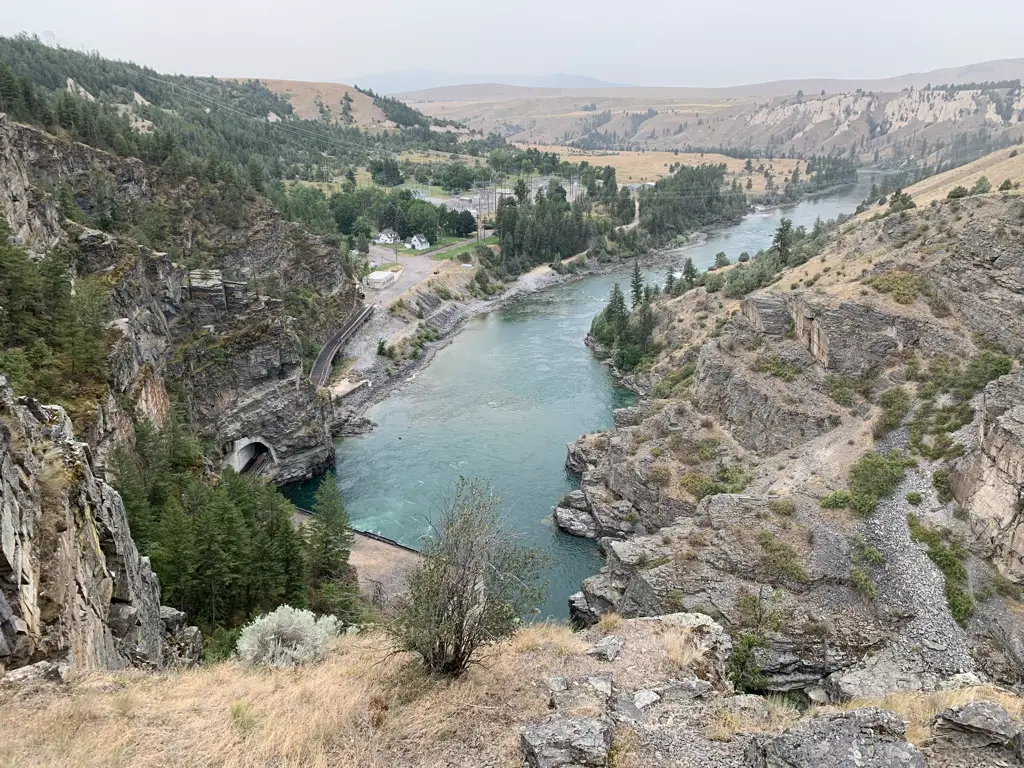
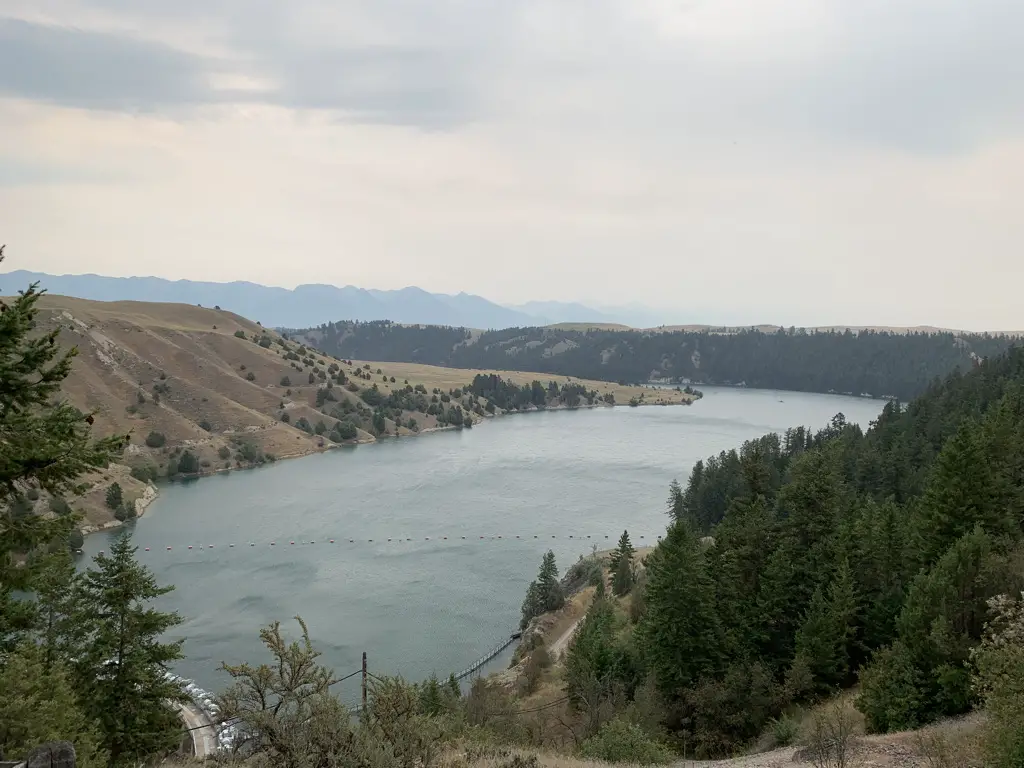
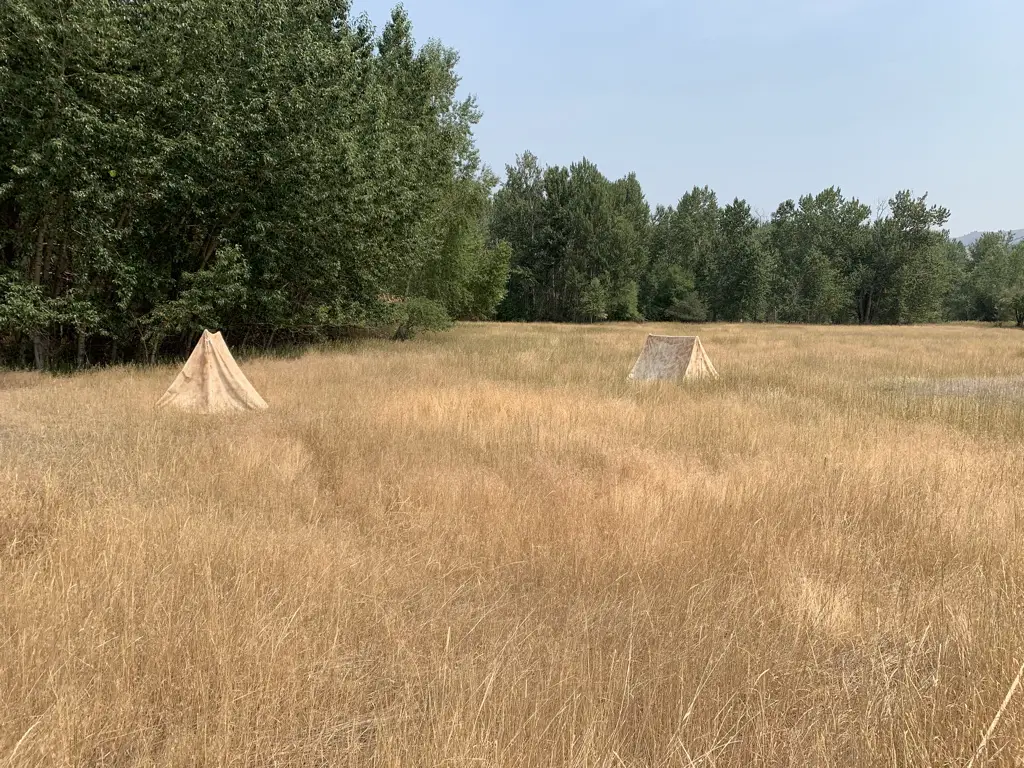
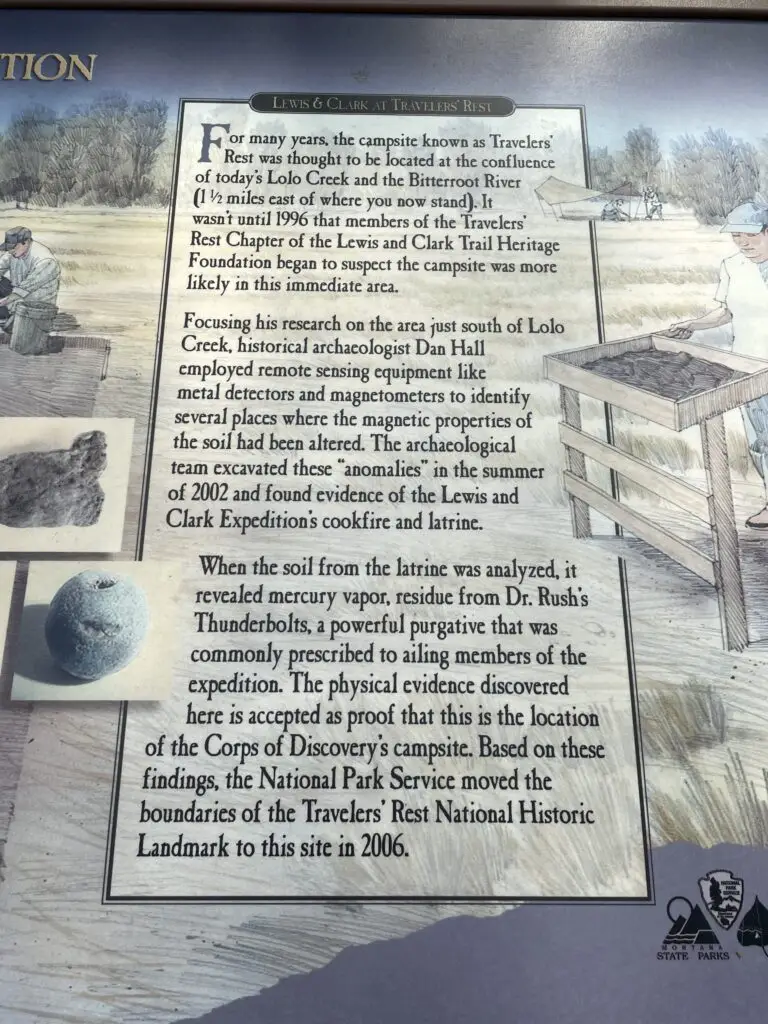
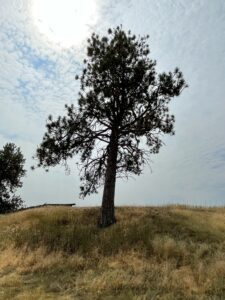
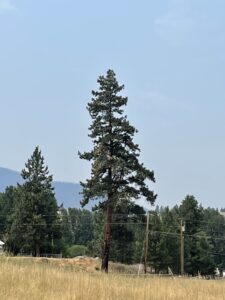
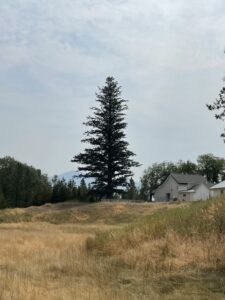
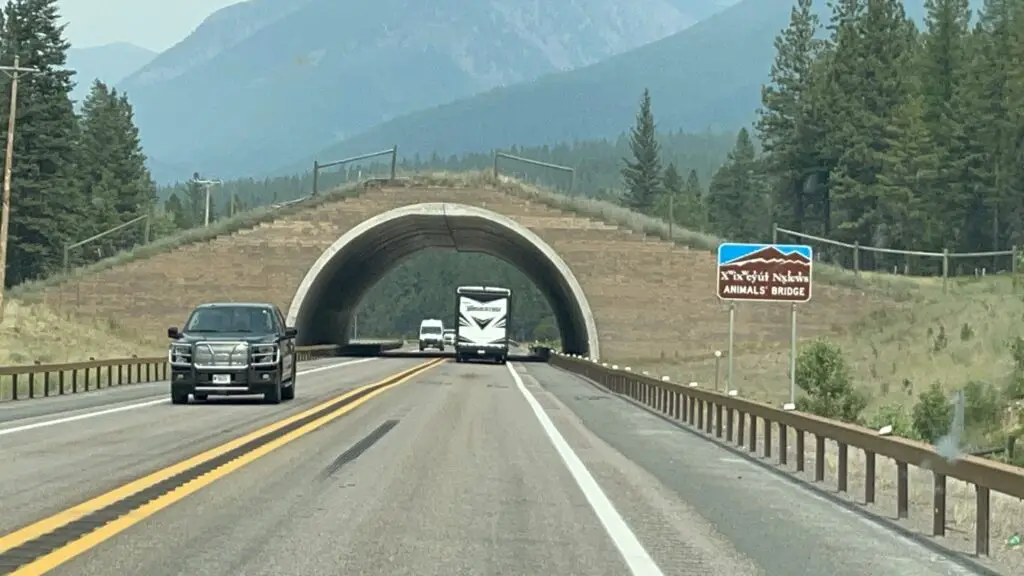
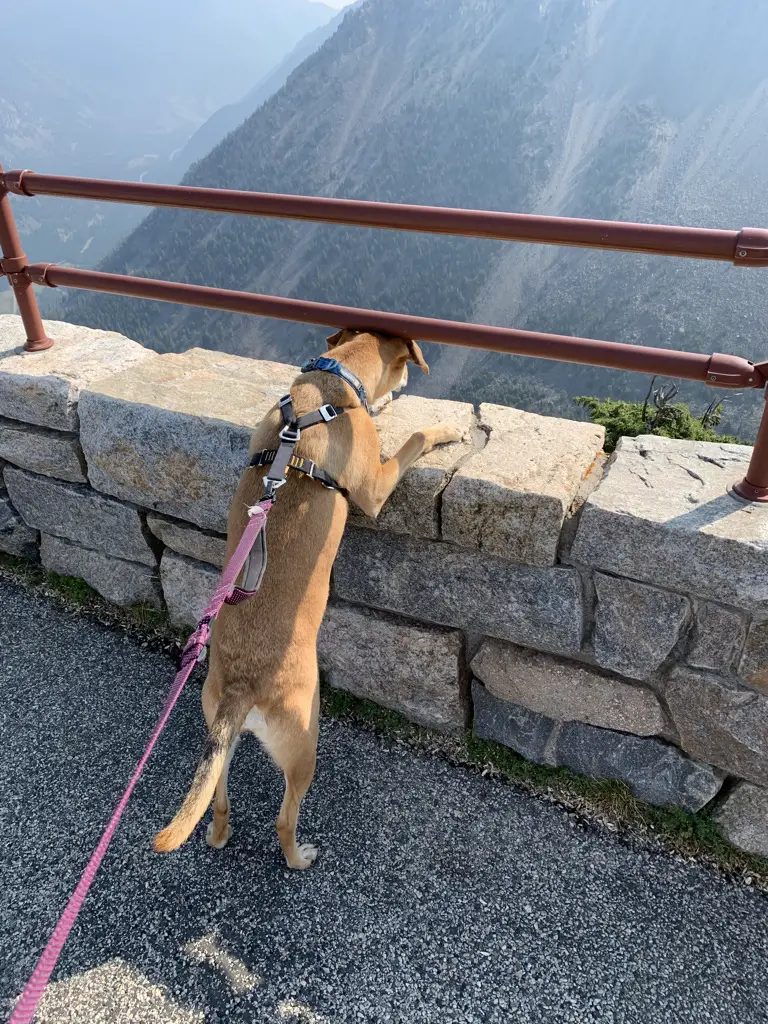
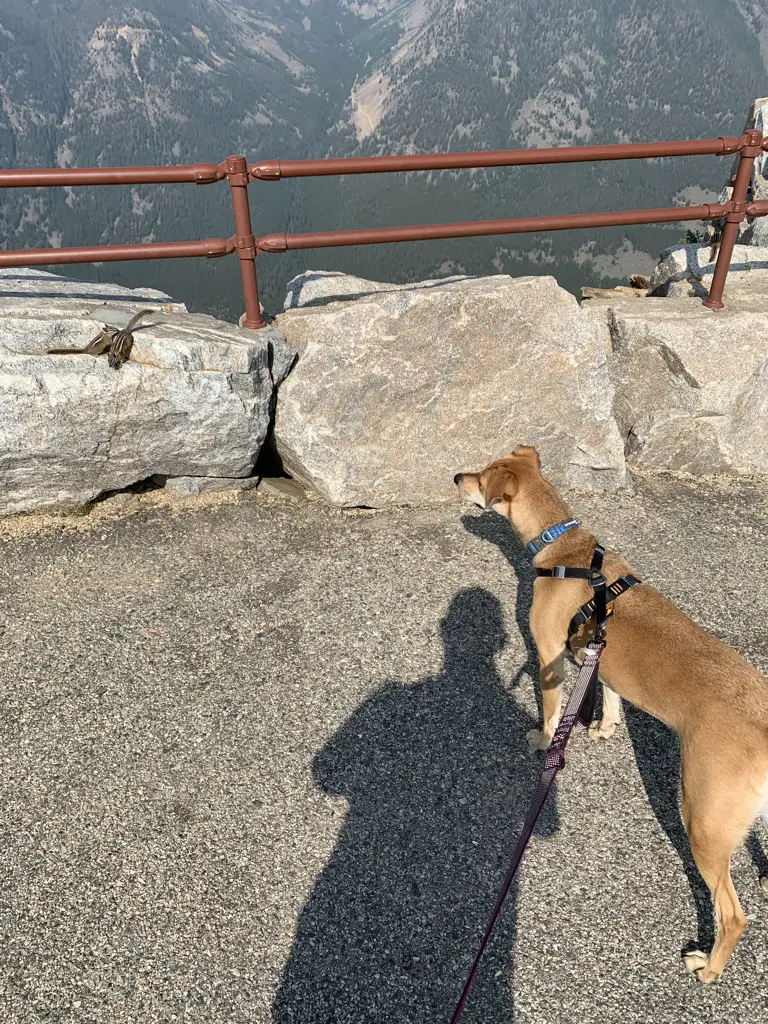
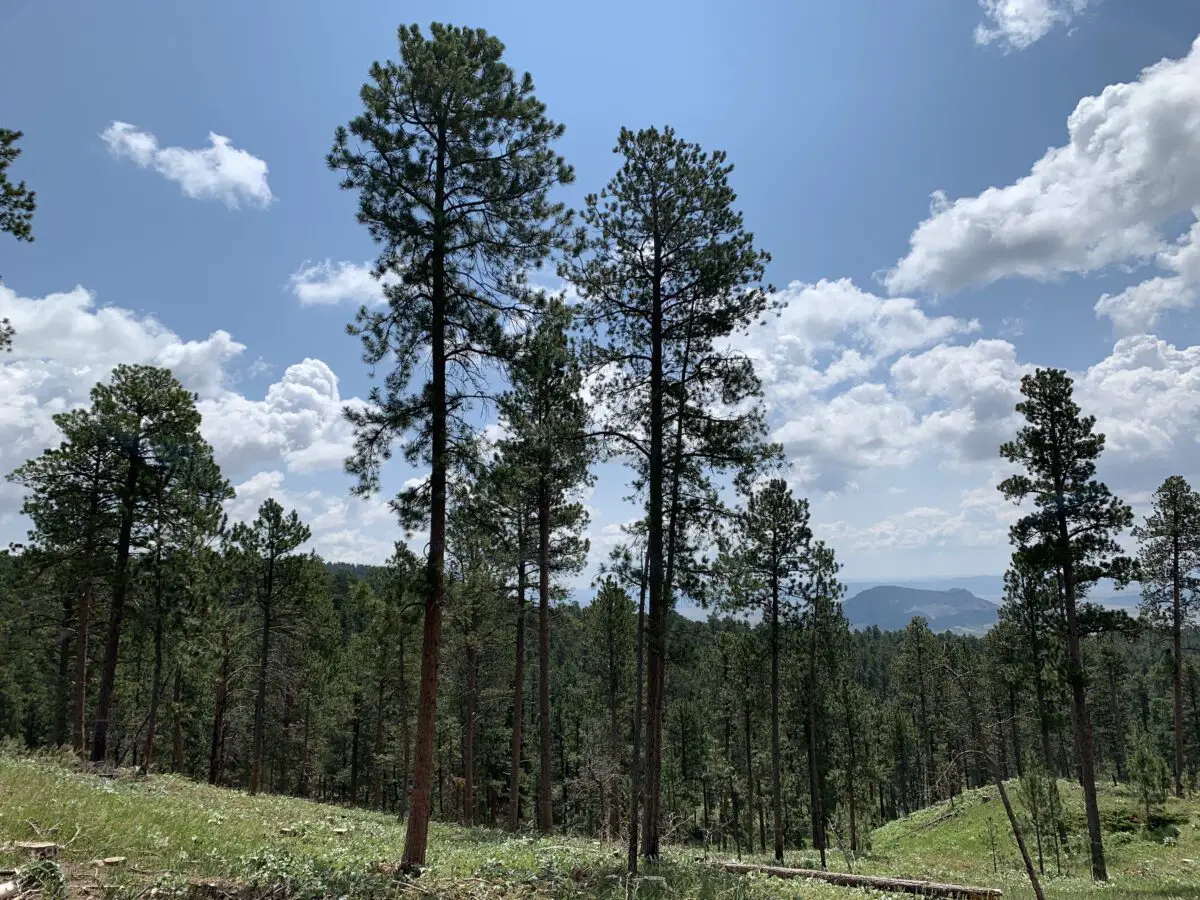
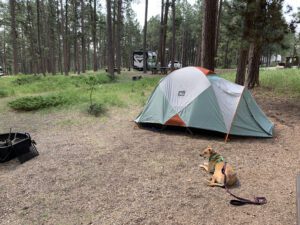 There is a less-frequently visited portion of the Black Hills in far-eastern Wyoming called the Bear Lodge Mountains. When the Trekkers visited we stayed at the Reuter Campground. It is easy to reach, as it is less than two hours from Rapid City. It is also just a short drive north of Sundance, WY (and I-90).
There is a less-frequently visited portion of the Black Hills in far-eastern Wyoming called the Bear Lodge Mountains. When the Trekkers visited we stayed at the Reuter Campground. It is easy to reach, as it is less than two hours from Rapid City. It is also just a short drive north of Sundance, WY (and I-90).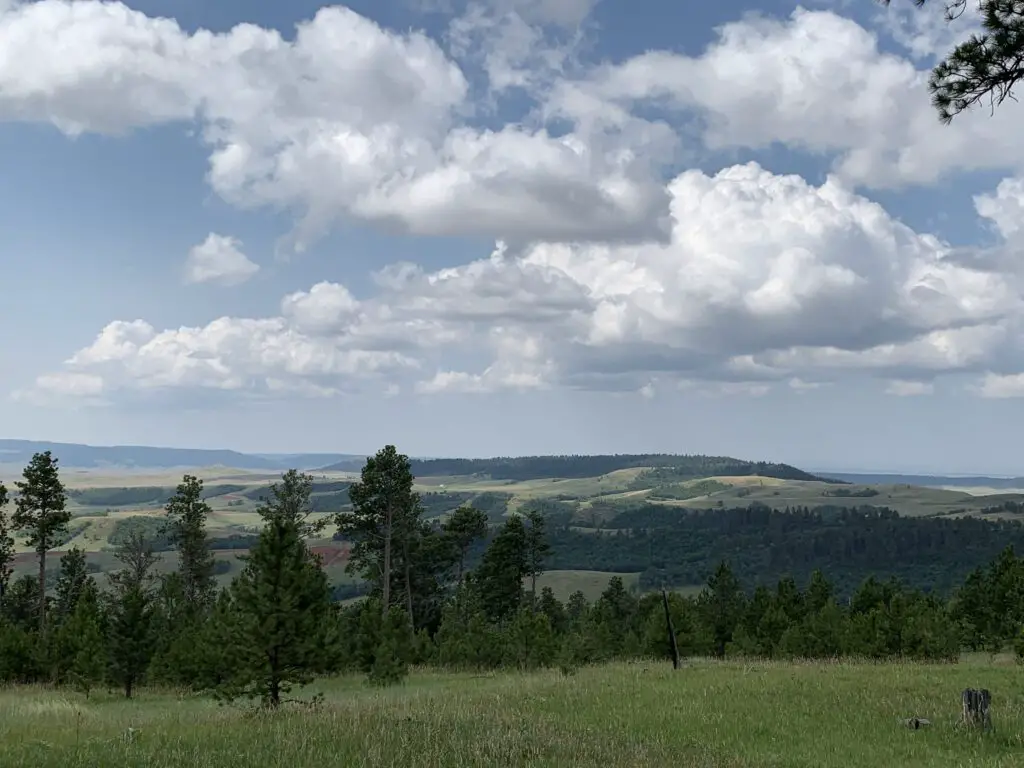
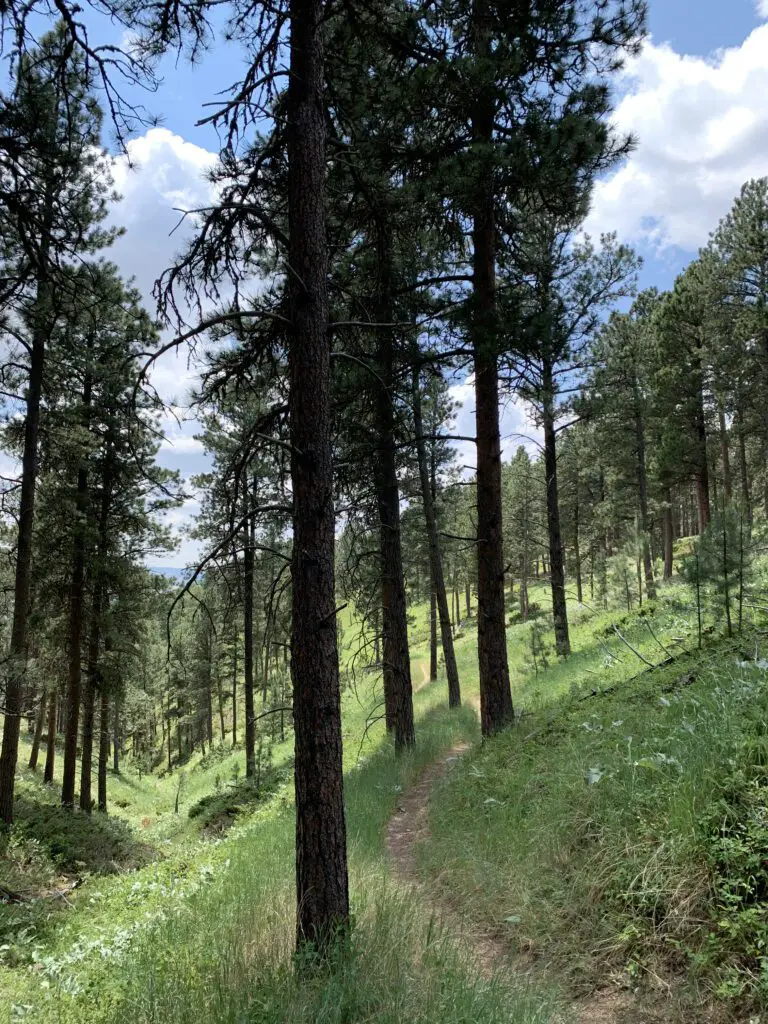
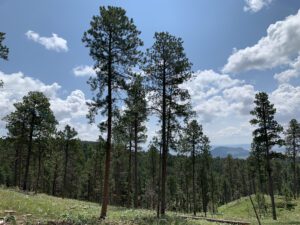
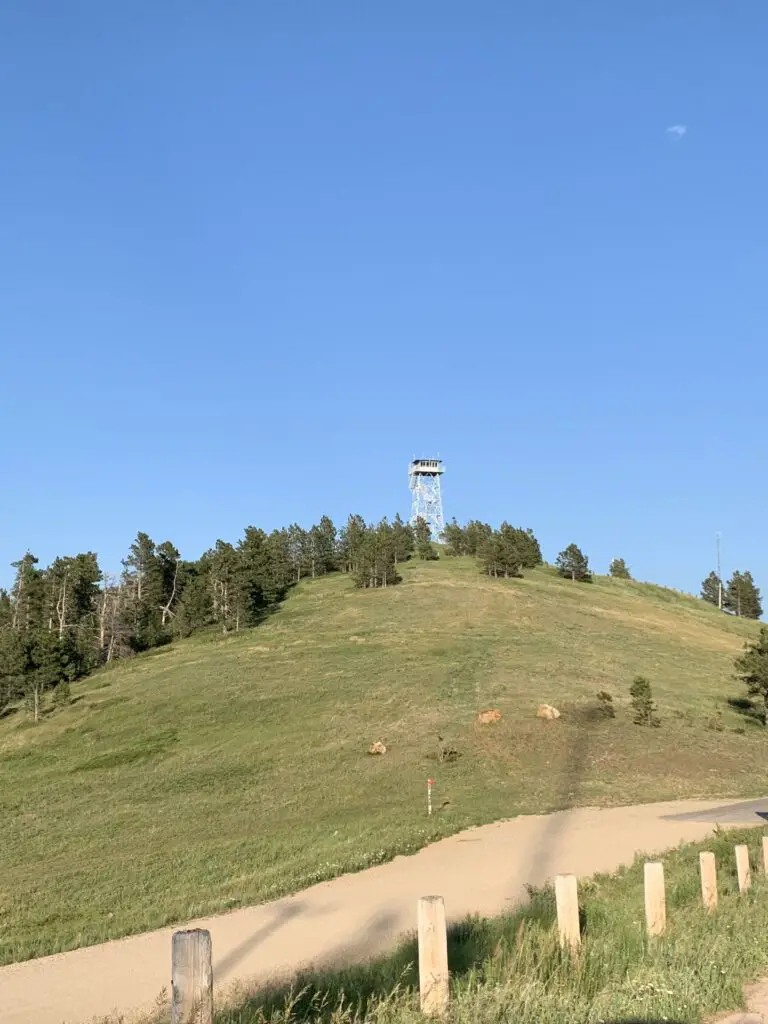
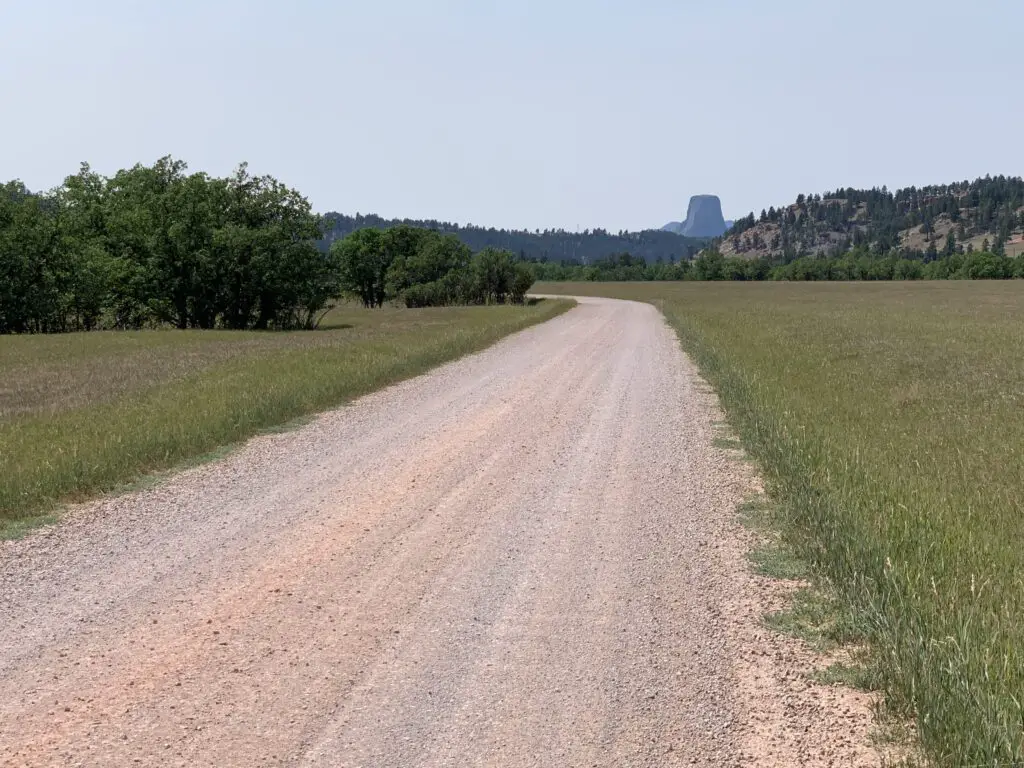
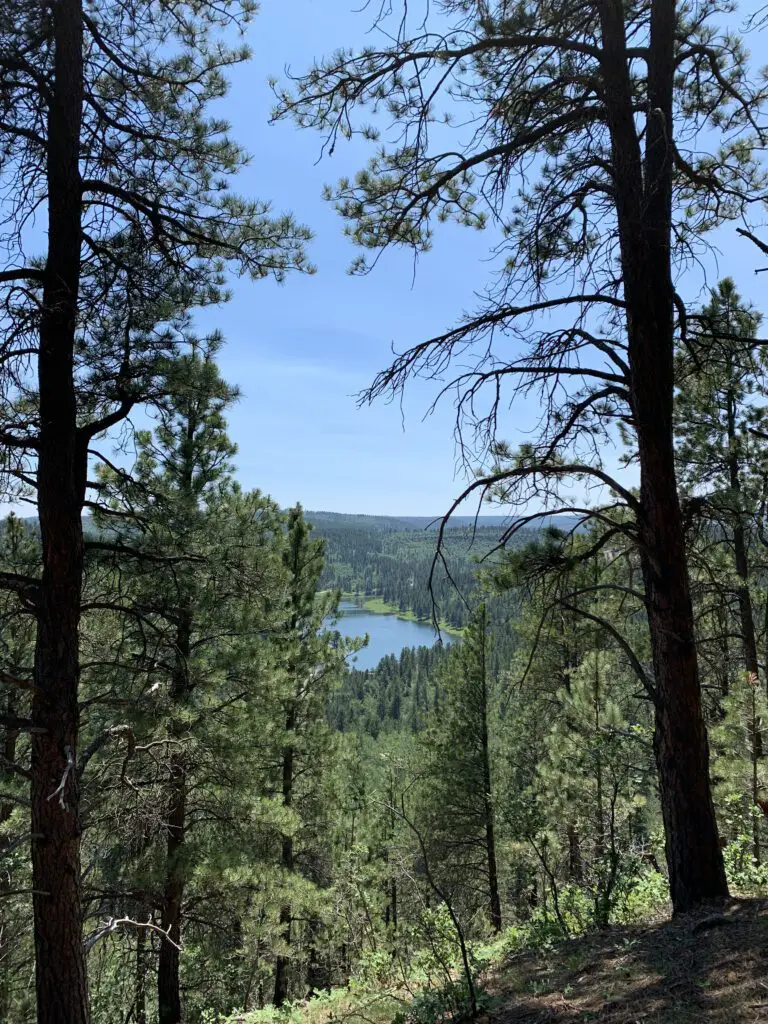
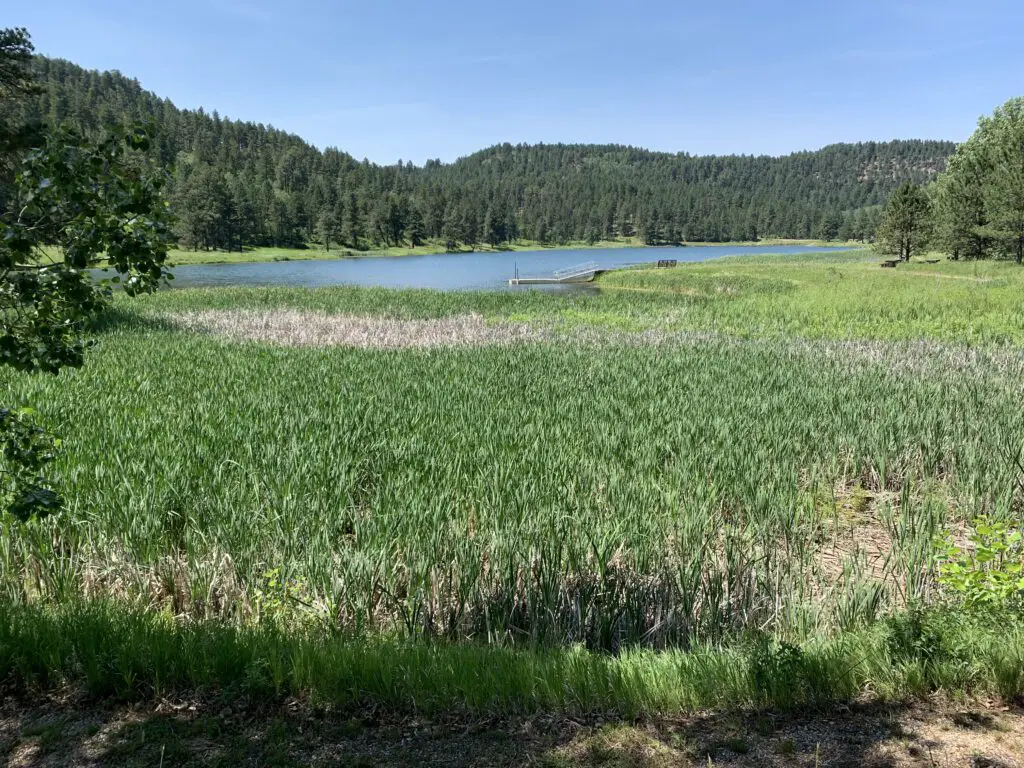
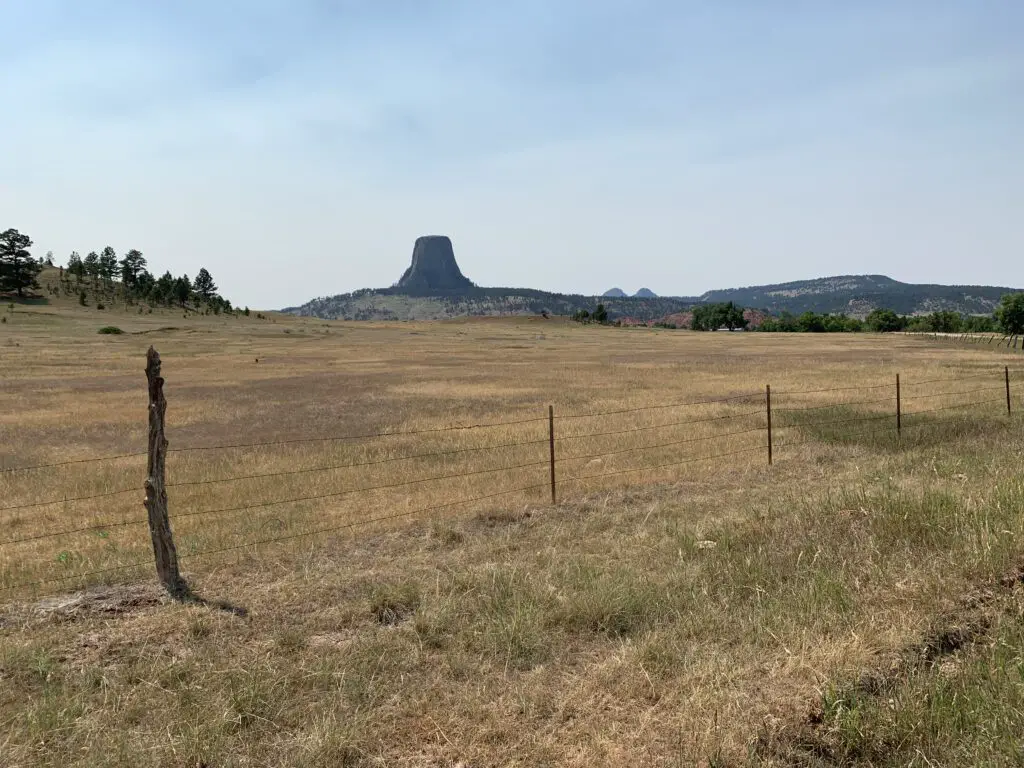
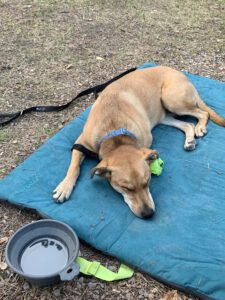
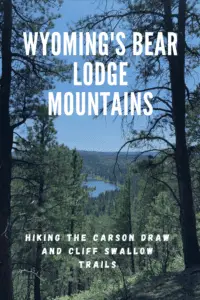
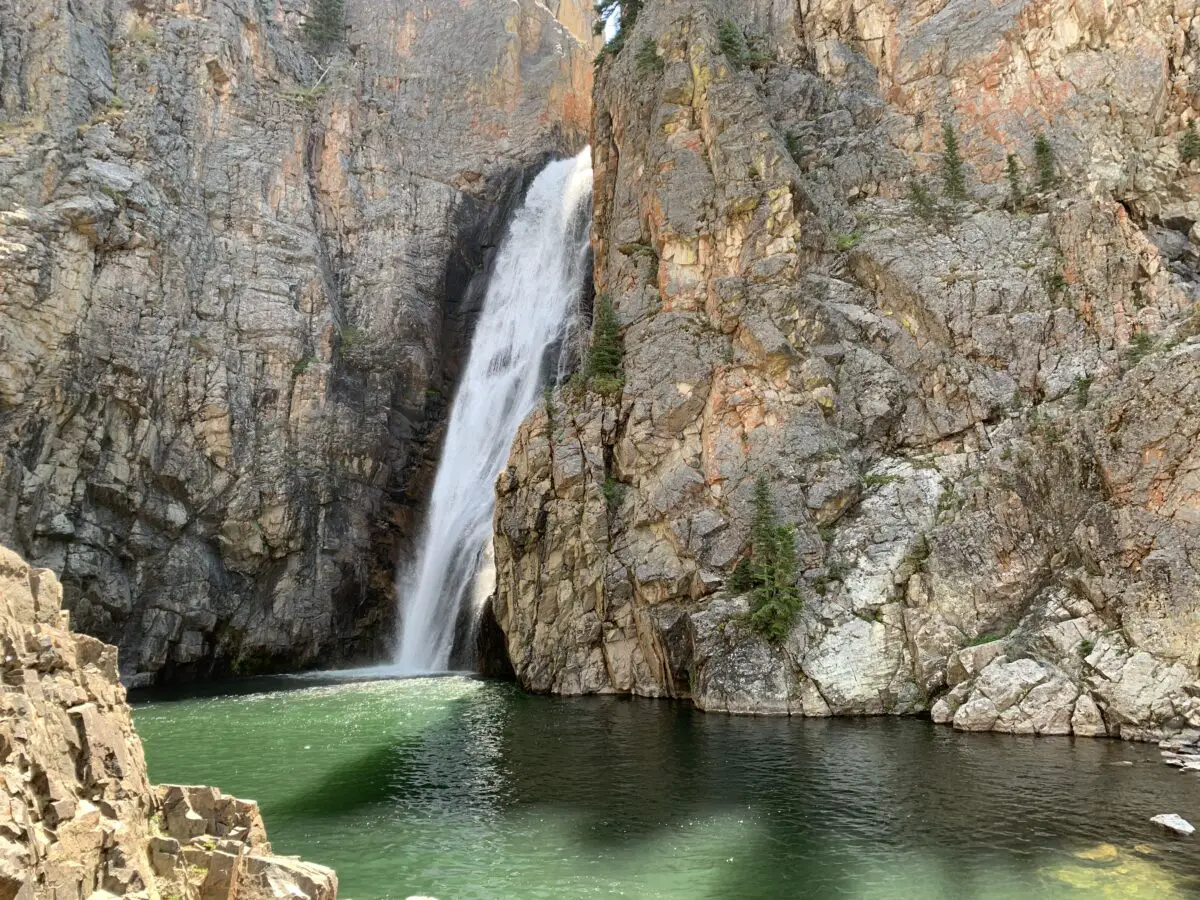
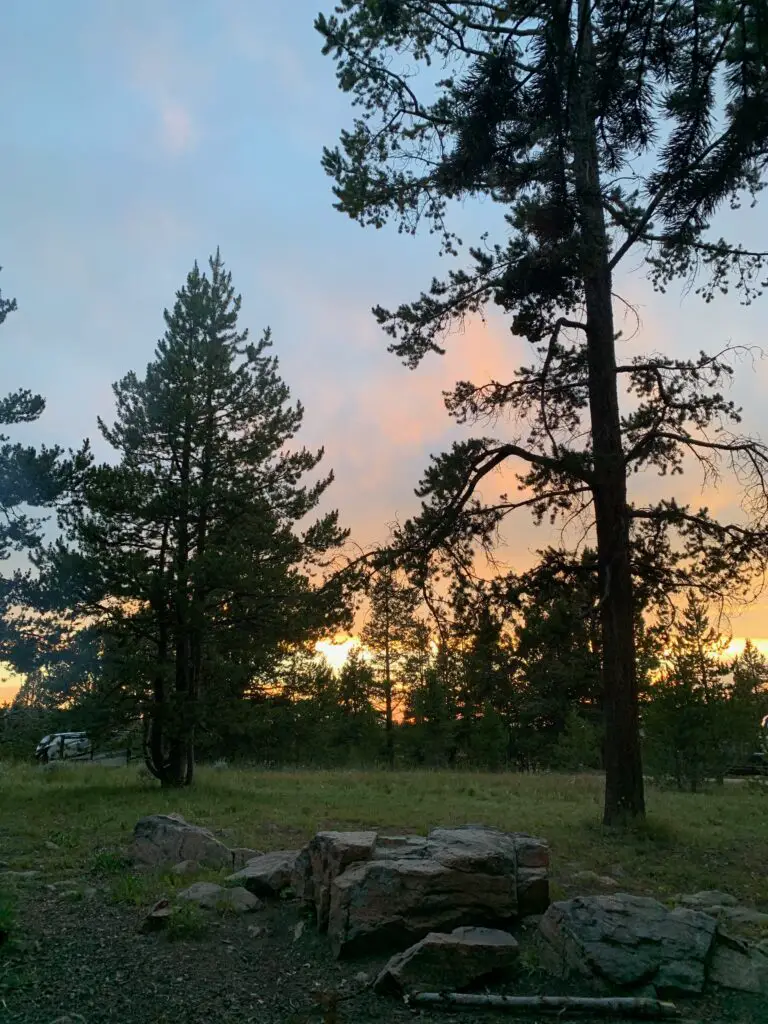
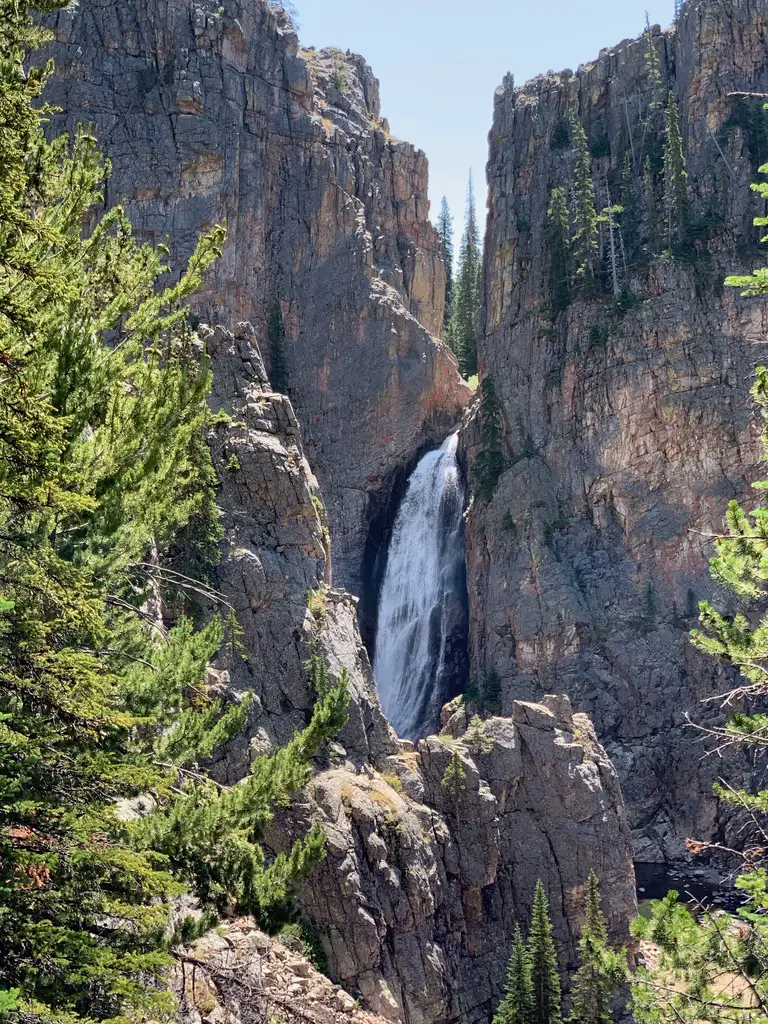
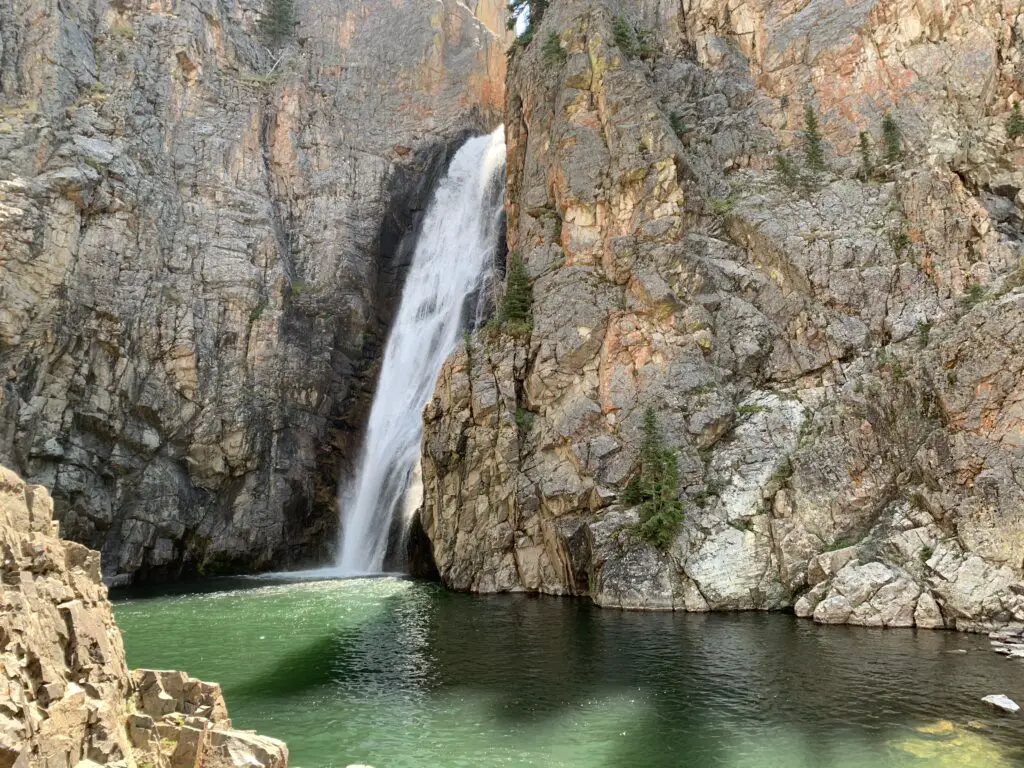
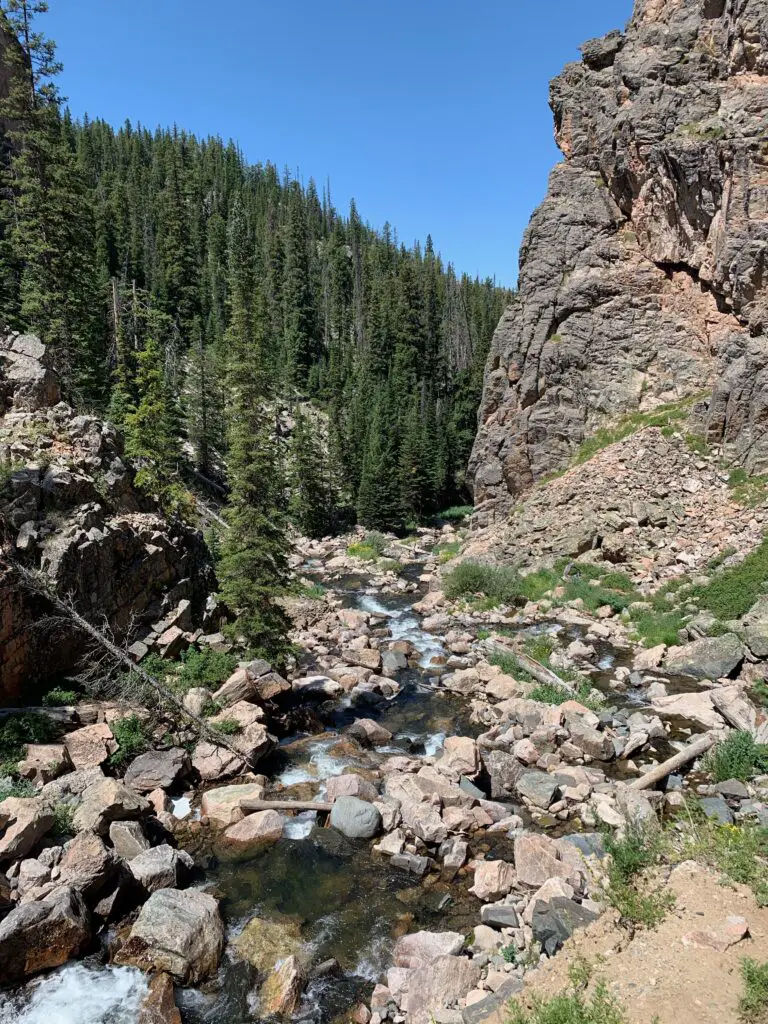
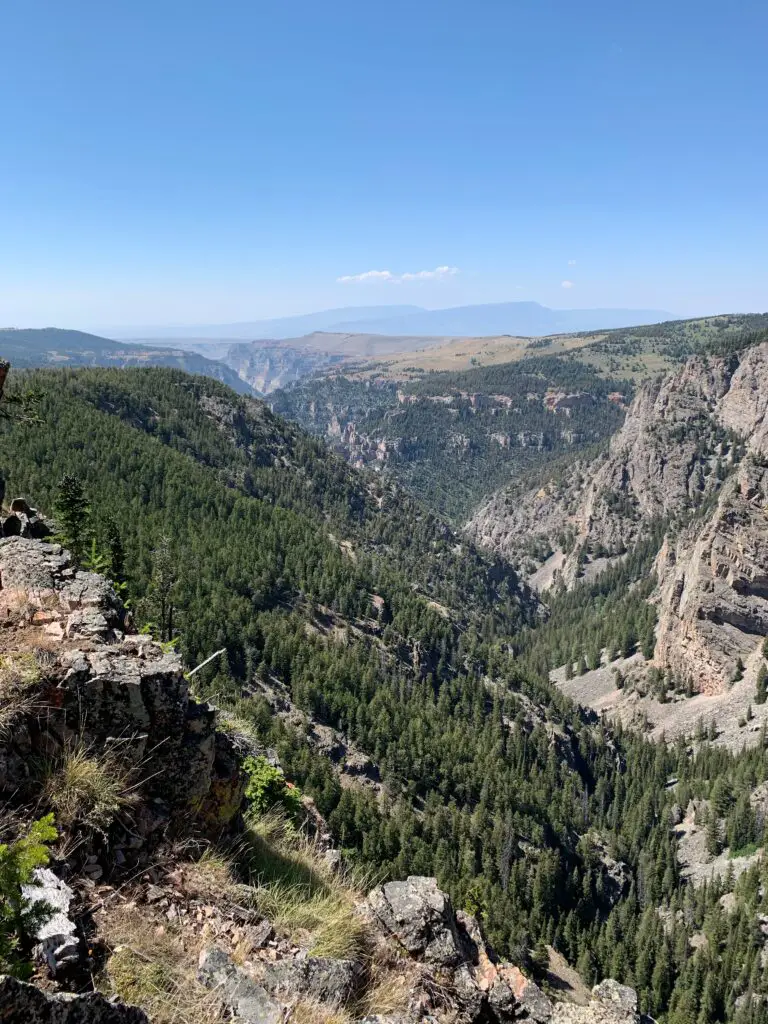
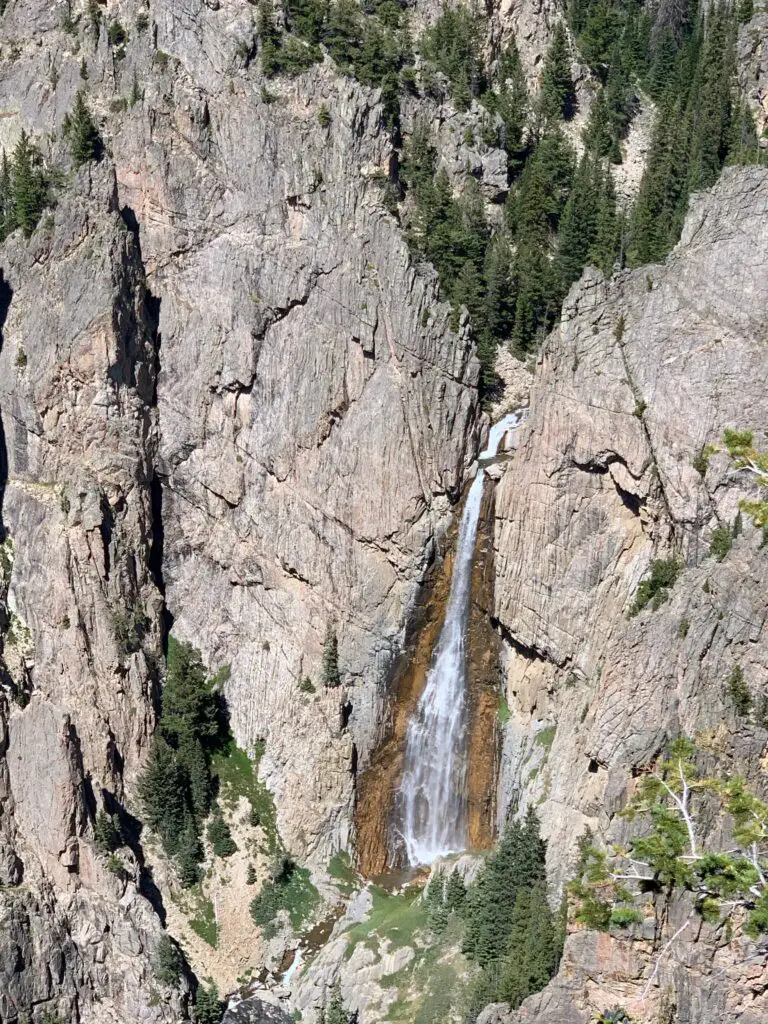
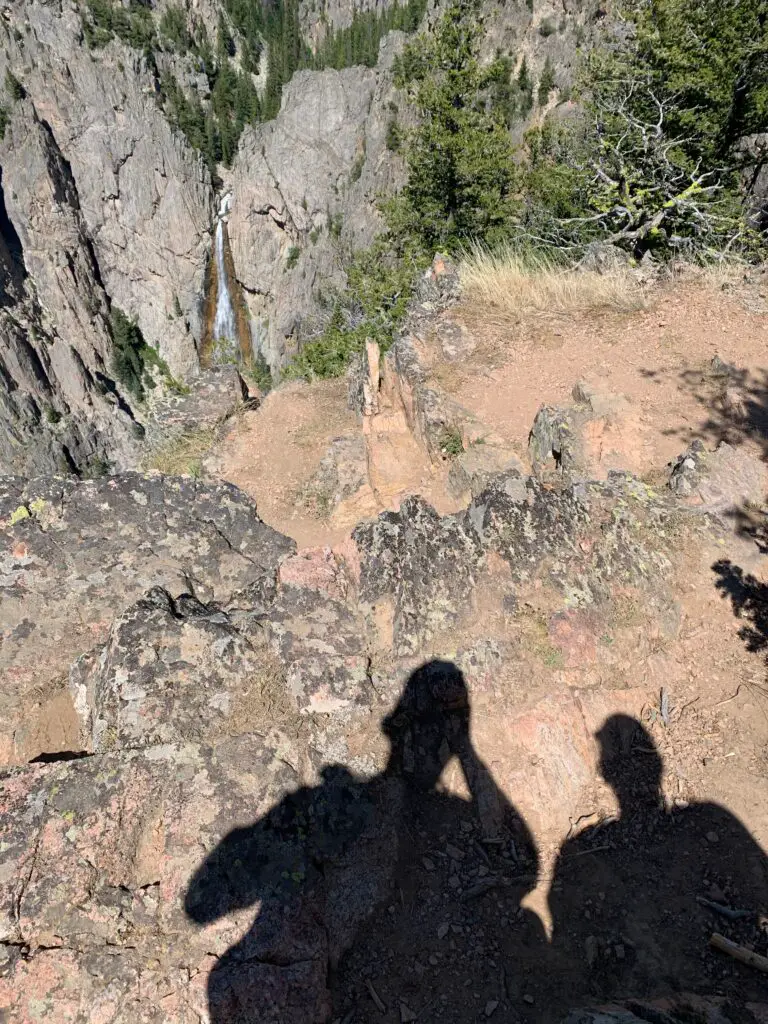
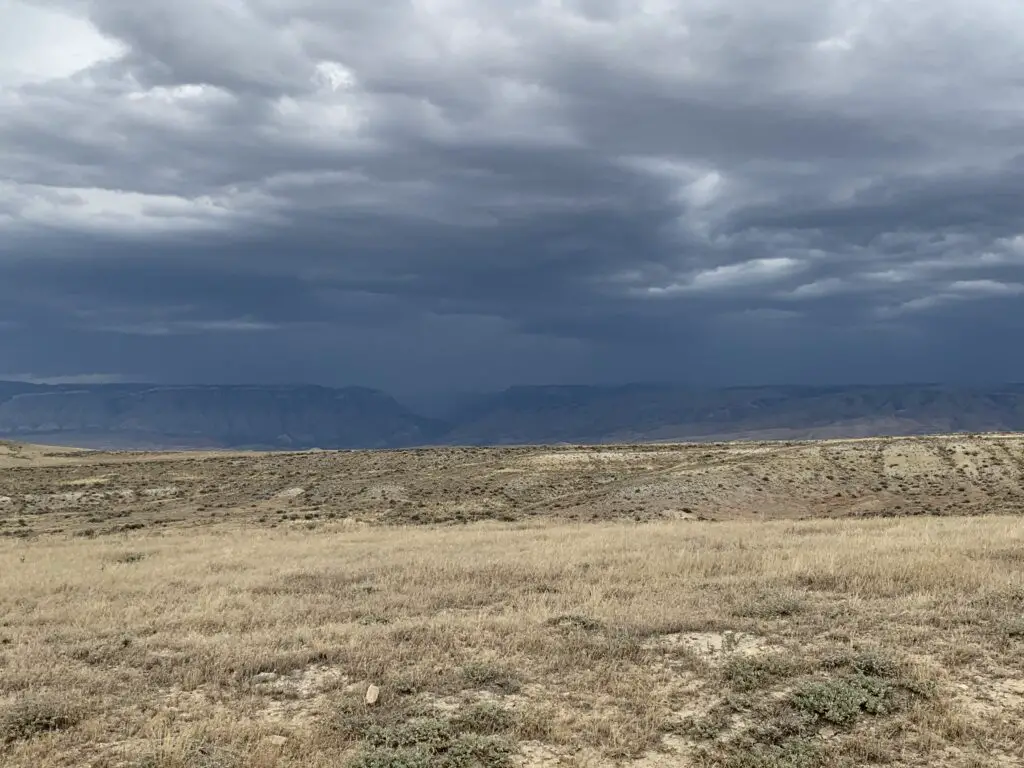
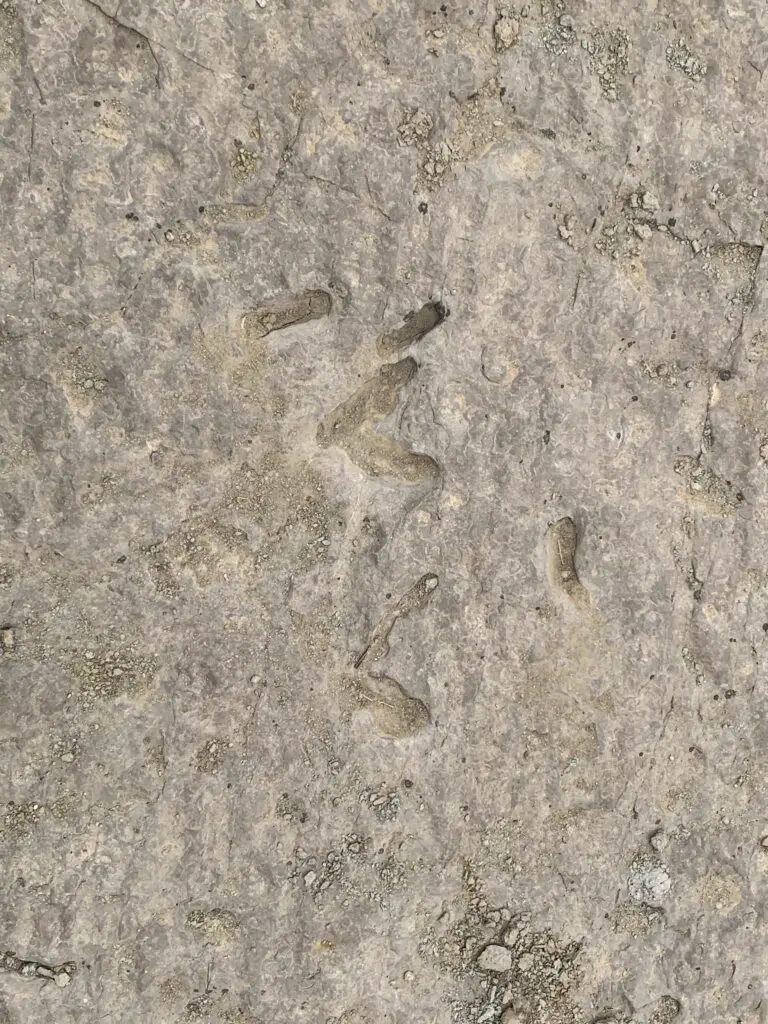
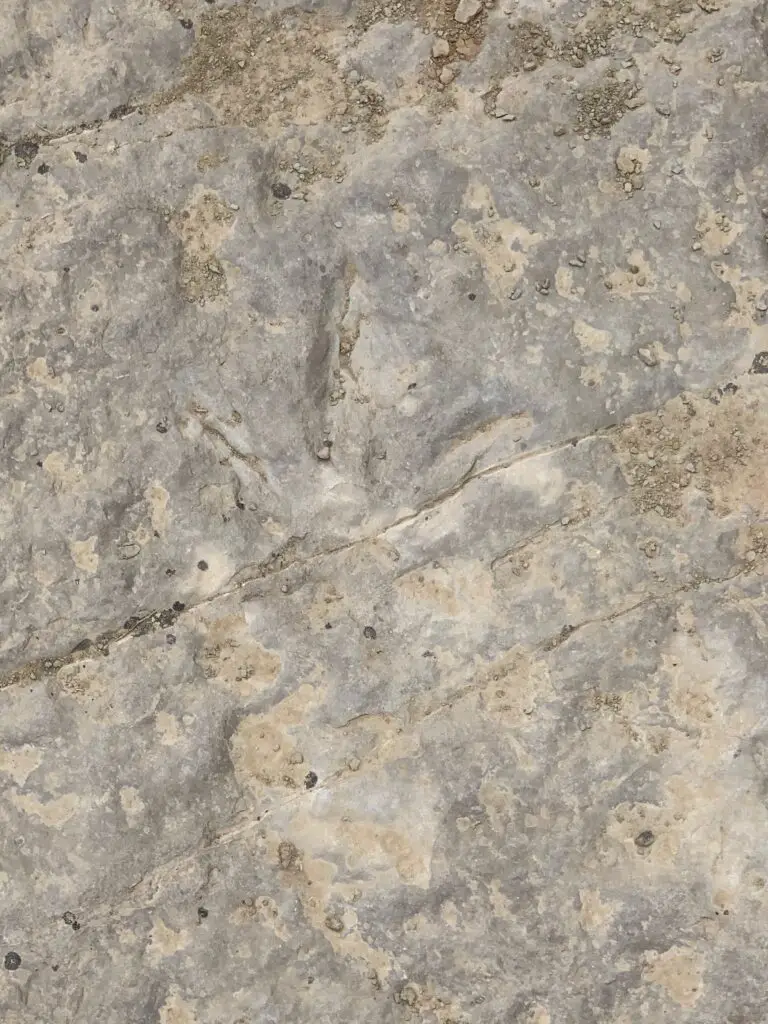
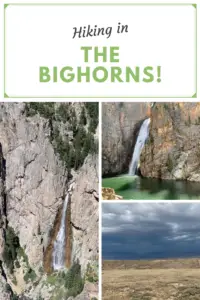
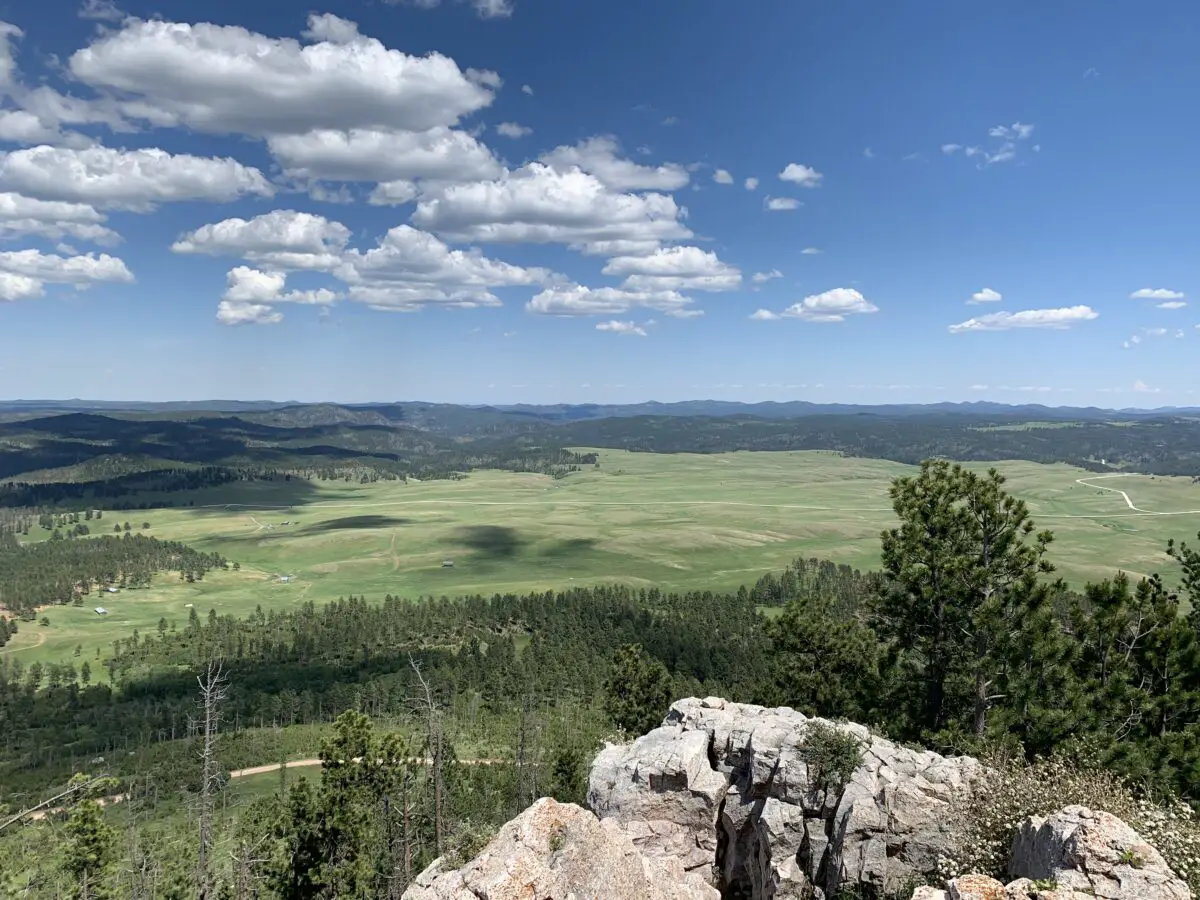
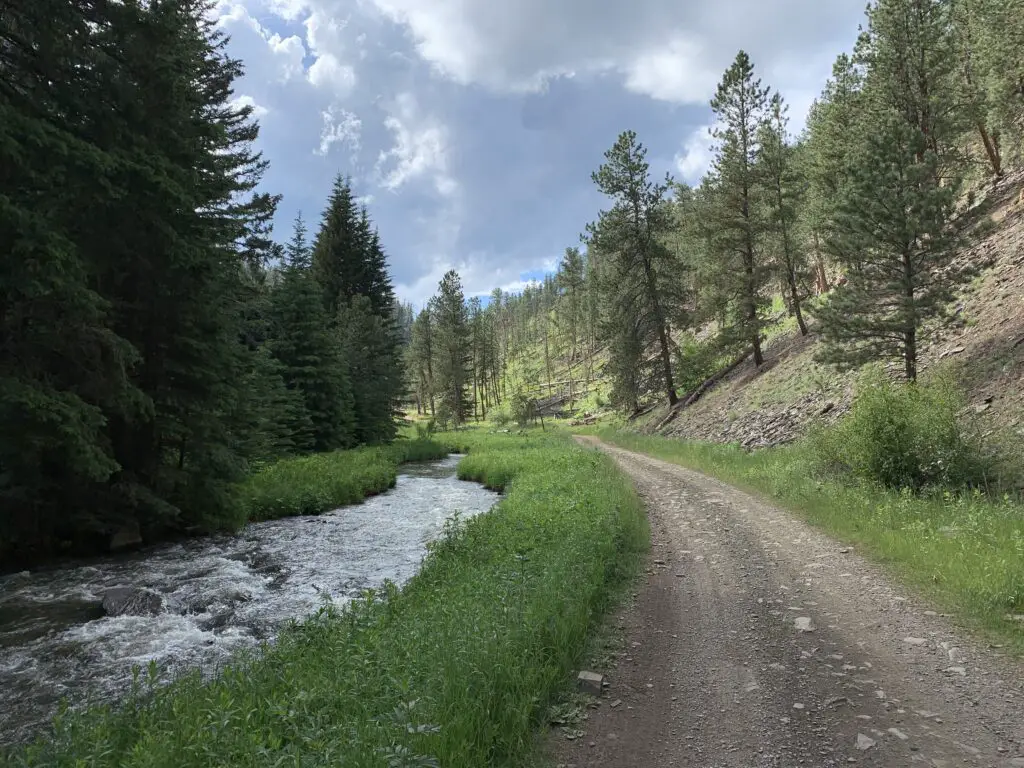
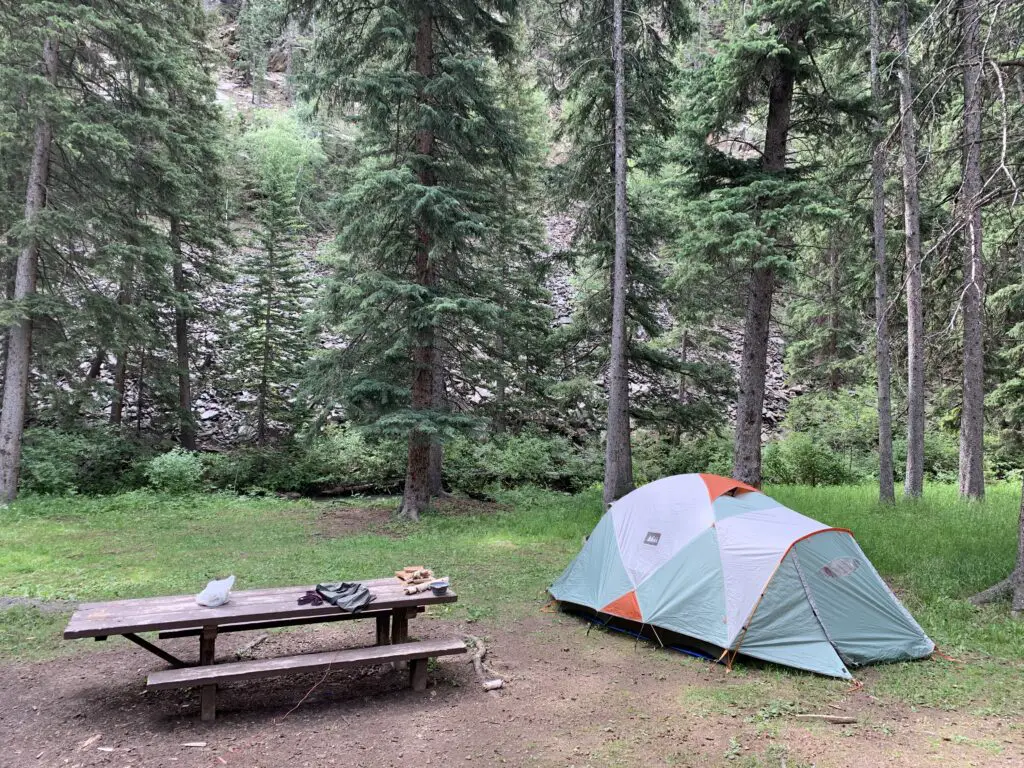
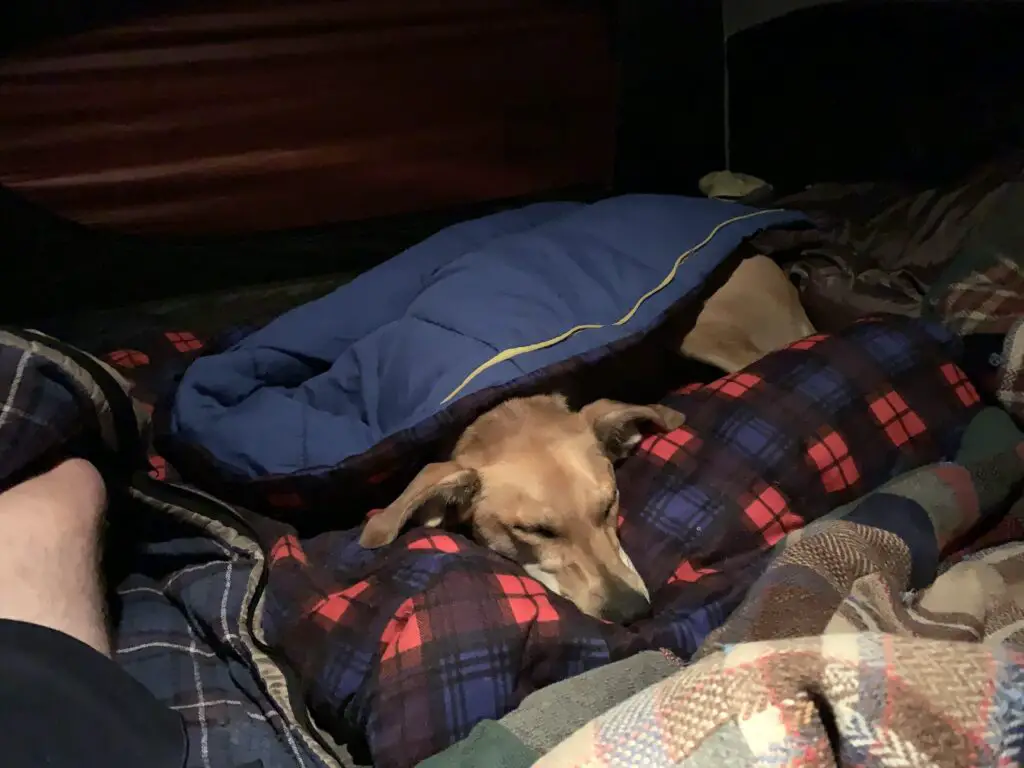
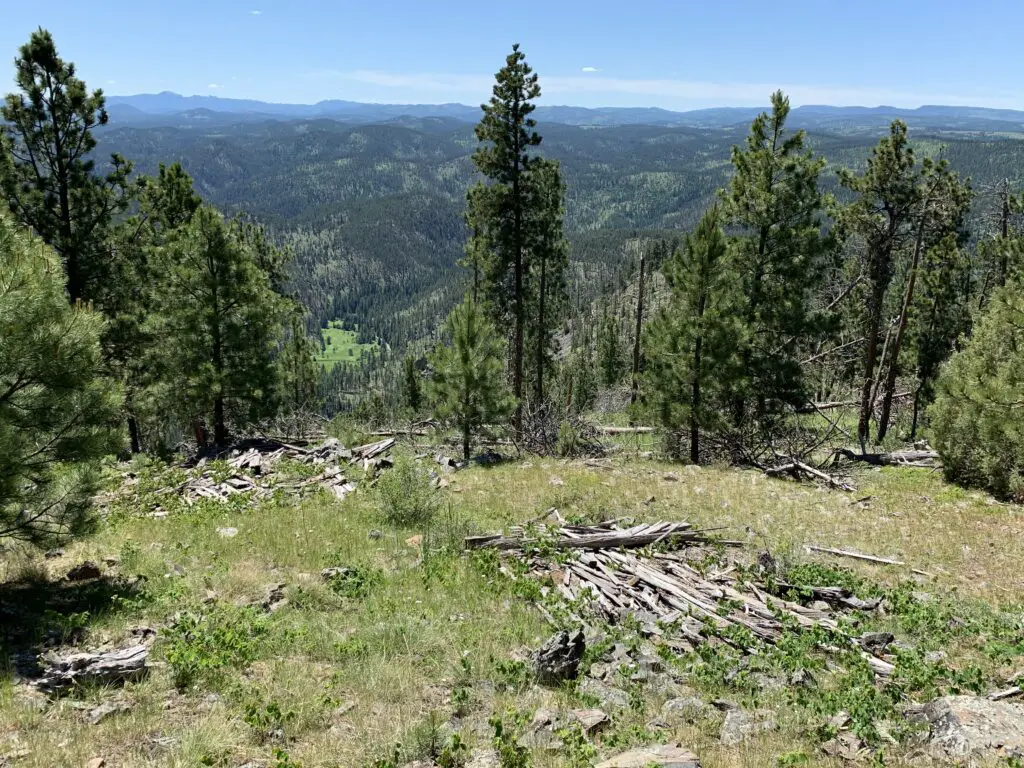
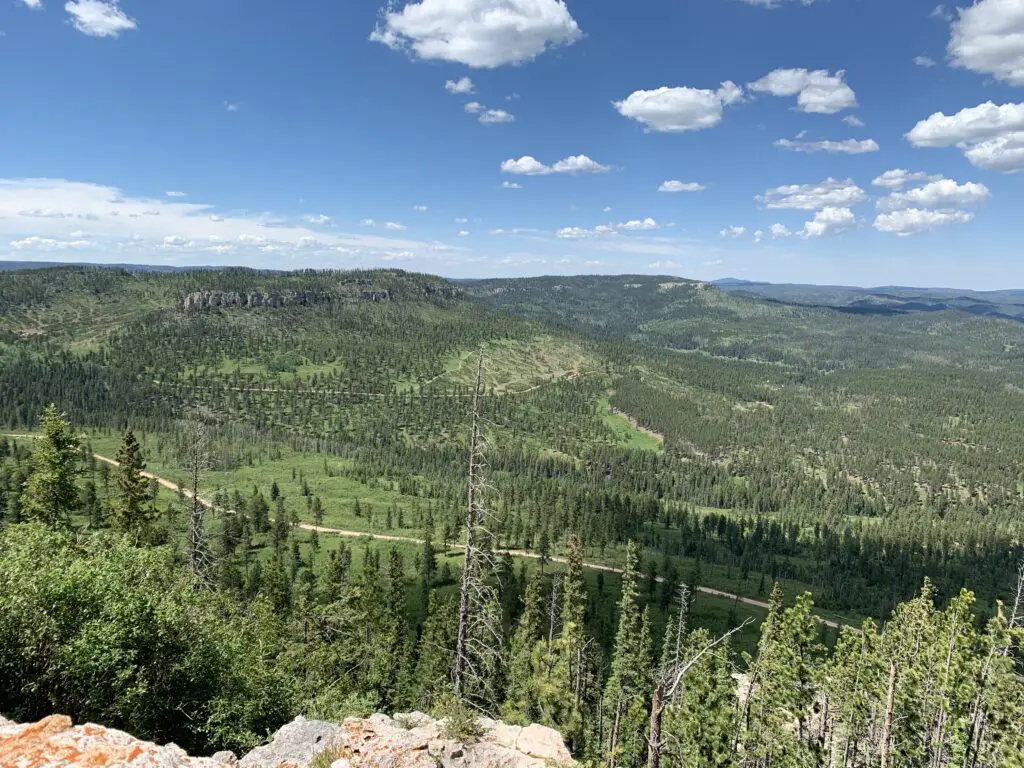
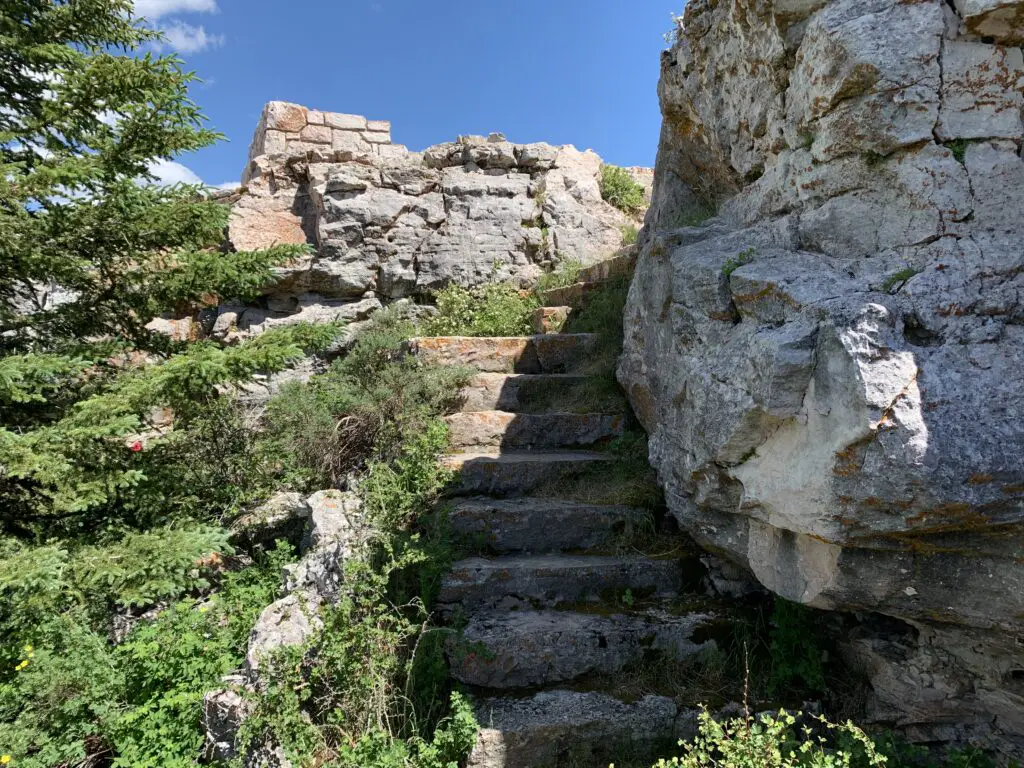
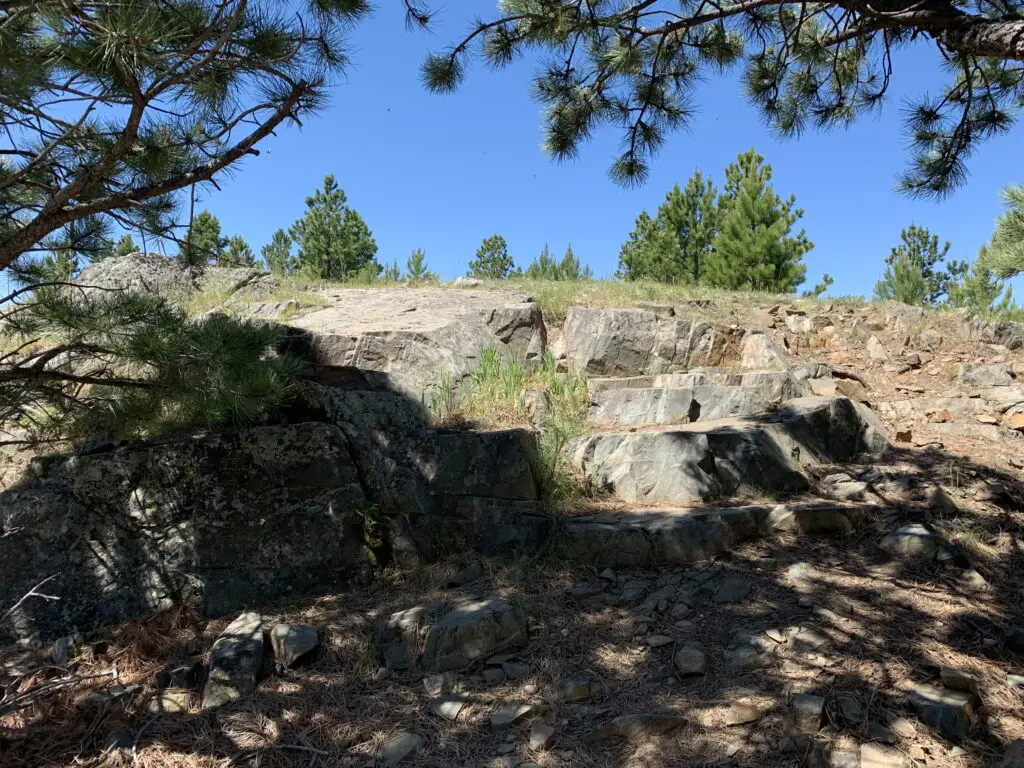
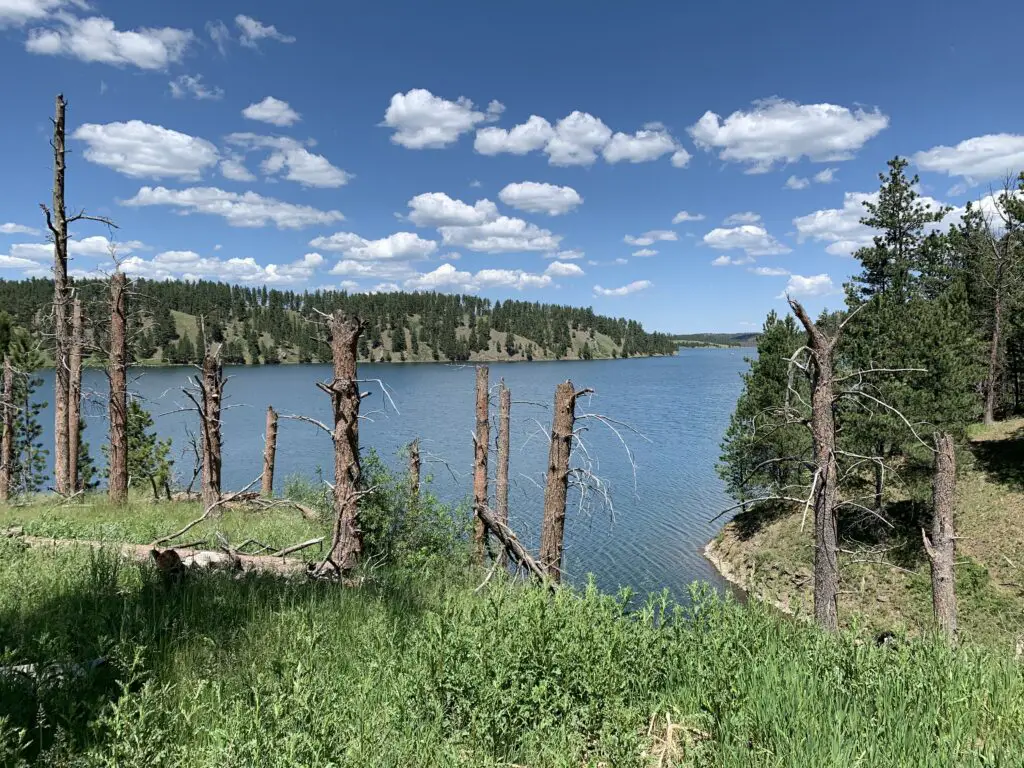
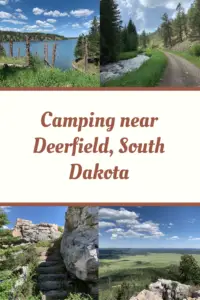
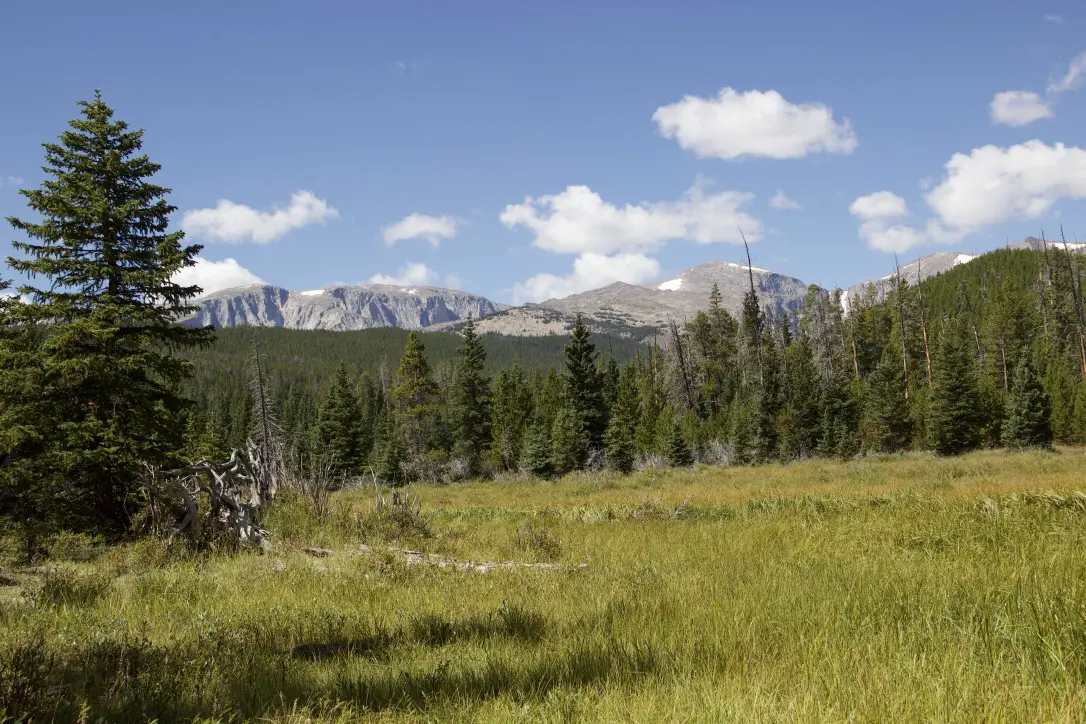
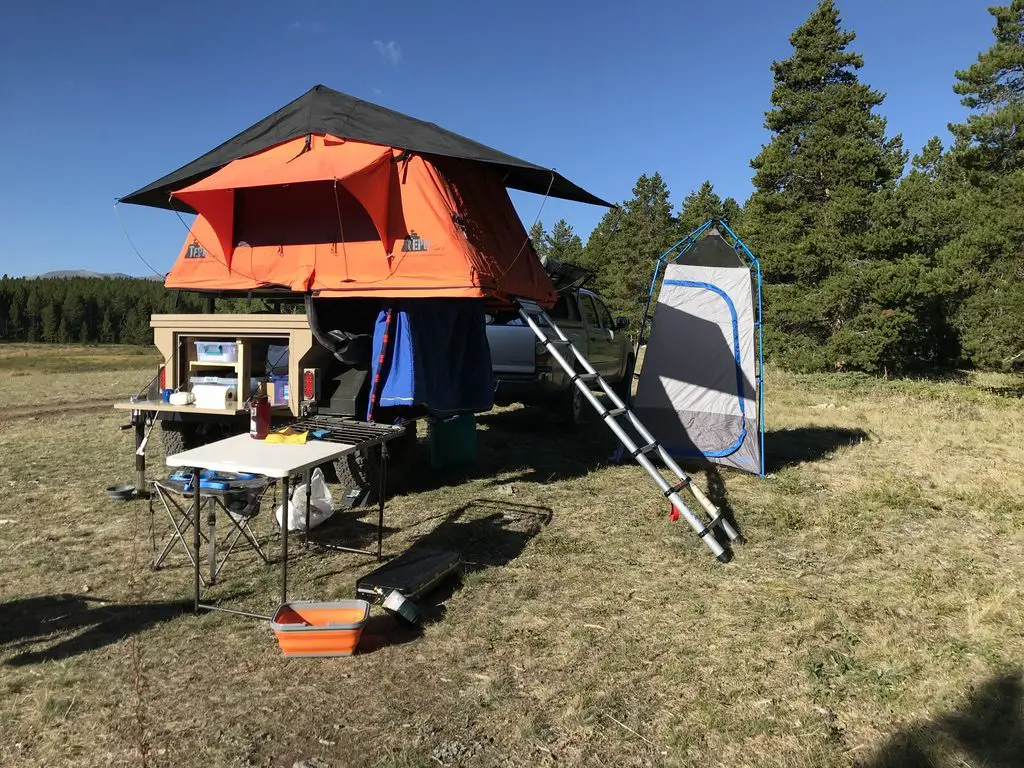
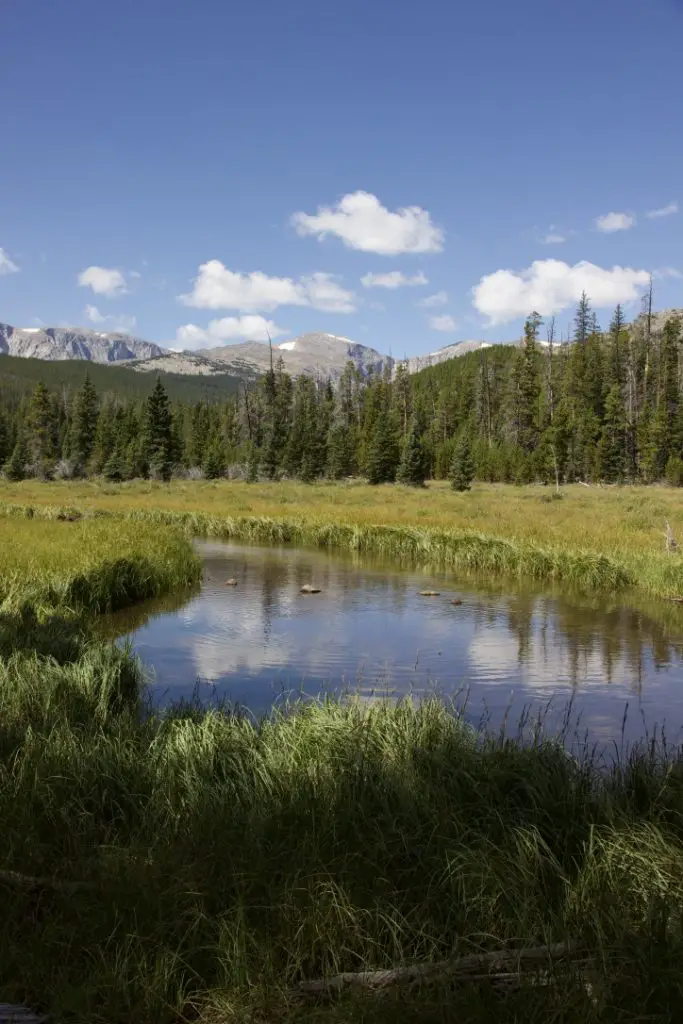 Though this area is just as beautiful as the Rockies, it is FAR less crowded, which makes it so much more pleasant to visit. 😋 There are no lines of people hiking in the Bighorns like we’ve experienced in various places around Colorado. Also, oftentimes, the lower-elevation plains may be baking in 90-degree weather, while it’s in the 60s-70s, and breezy, in the mountains!
Though this area is just as beautiful as the Rockies, it is FAR less crowded, which makes it so much more pleasant to visit. 😋 There are no lines of people hiking in the Bighorns like we’ve experienced in various places around Colorado. Also, oftentimes, the lower-elevation plains may be baking in 90-degree weather, while it’s in the 60s-70s, and breezy, in the mountains!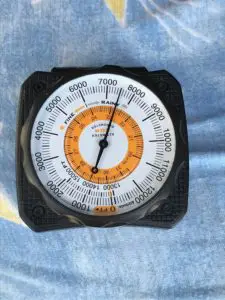 Our campsite was at about 7500 feet on this visit (oftentimes we stay much higher, closer to 9000-10,000 feet). We’ve noticed something odd at these high altitudes that we have also experienced in
Our campsite was at about 7500 feet on this visit (oftentimes we stay much higher, closer to 9000-10,000 feet). We’ve noticed something odd at these high altitudes that we have also experienced in 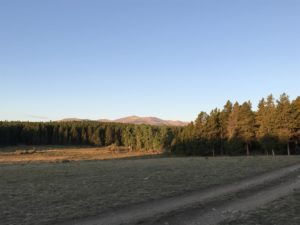 Sometimes when we head out we Disperse Camp. This is also known as “dry camping”, where you just set up your camp somewhere in the national forest, outside of an established campground. We tried this for the first time in Colorado, at both State Forest State Park and near Crested Butte. On both occasions, we did stay at an actual, numbered campsite, it was just away from any campground and we weren’t able to see our neighbors.
Sometimes when we head out we Disperse Camp. This is also known as “dry camping”, where you just set up your camp somewhere in the national forest, outside of an established campground. We tried this for the first time in Colorado, at both State Forest State Park and near Crested Butte. On both occasions, we did stay at an actual, numbered campsite, it was just away from any campground and we weren’t able to see our neighbors.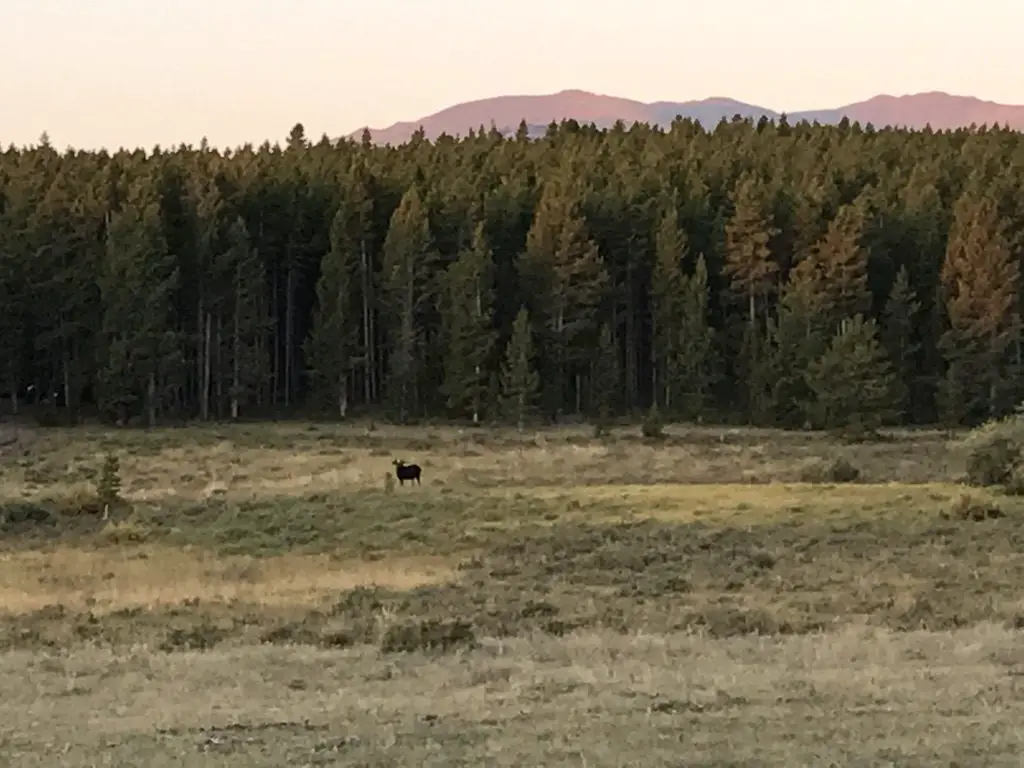
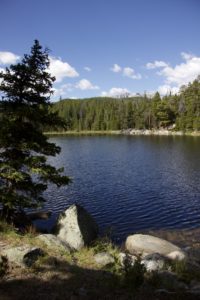
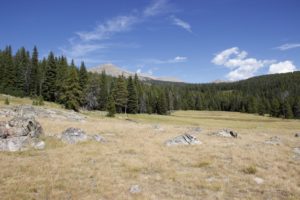 This hike was deceptively tough. It’s only about three miles in total length, but it’s overgrown in many spots, very rocky and there are lots of downed trees. We actually lost the trail several times and had to root around to locate it again. Other parts of it are PERFECT though. They feature a flat, graded path through a moist, pine forest, that is surrounded on both sides by a green carpet of ferns, moss, and soft undergrowth. It almost felt like hiking in the cool rainforests of the Pacific Northwest. It was such an idyllic sight!
This hike was deceptively tough. It’s only about three miles in total length, but it’s overgrown in many spots, very rocky and there are lots of downed trees. We actually lost the trail several times and had to root around to locate it again. Other parts of it are PERFECT though. They feature a flat, graded path through a moist, pine forest, that is surrounded on both sides by a green carpet of ferns, moss, and soft undergrowth. It almost felt like hiking in the cool rainforests of the Pacific Northwest. It was such an idyllic sight!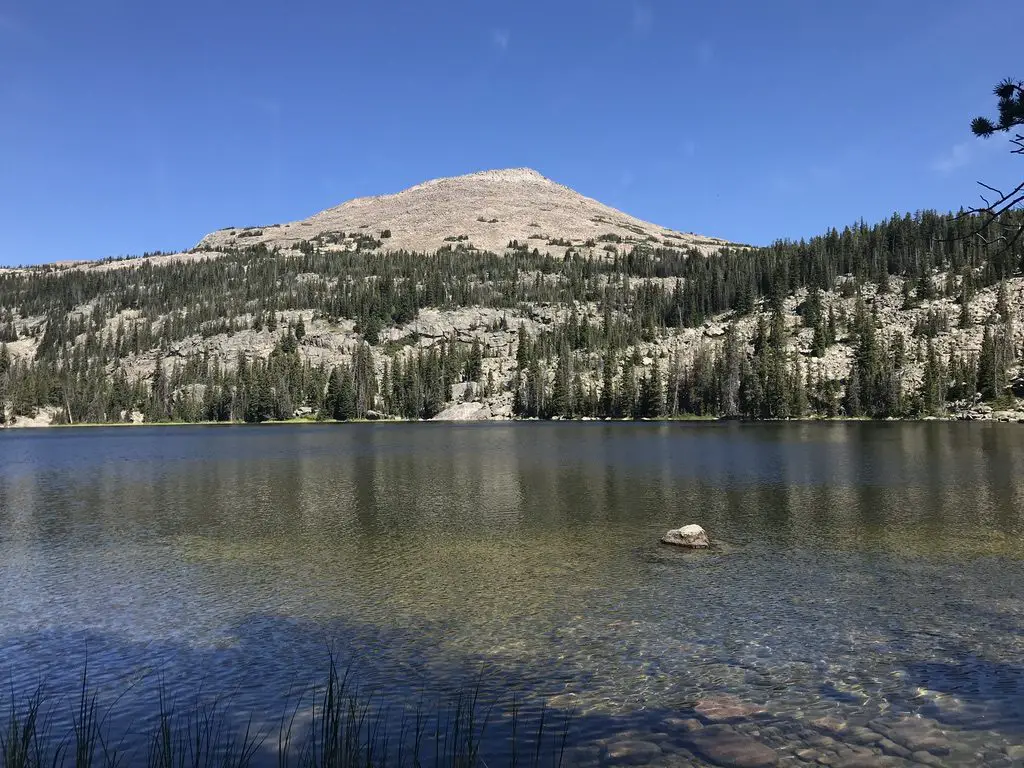
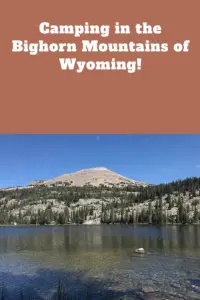
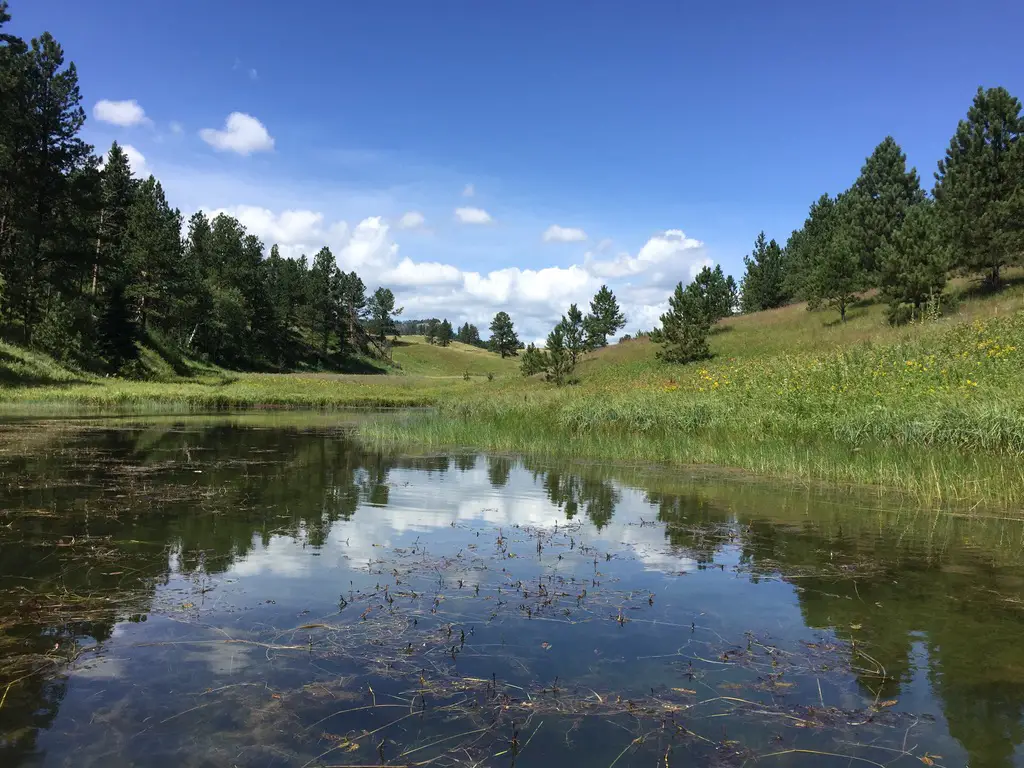
 Deerfield Lake is one of the Trekkers’ favorite spots for canoeing in the Black Hills (another is
Deerfield Lake is one of the Trekkers’ favorite spots for canoeing in the Black Hills (another is 
 There is a hiking trail, that circumvents the lake, which is also good for cross-country skiing and snowshoeing in the colder months. There are several campgrounds available around the lake, as well. You should be aware these are National Forest campgrounds,
There is a hiking trail, that circumvents the lake, which is also good for cross-country skiing and snowshoeing in the colder months. There are several campgrounds available around the lake, as well. You should be aware these are National Forest campgrounds, 

